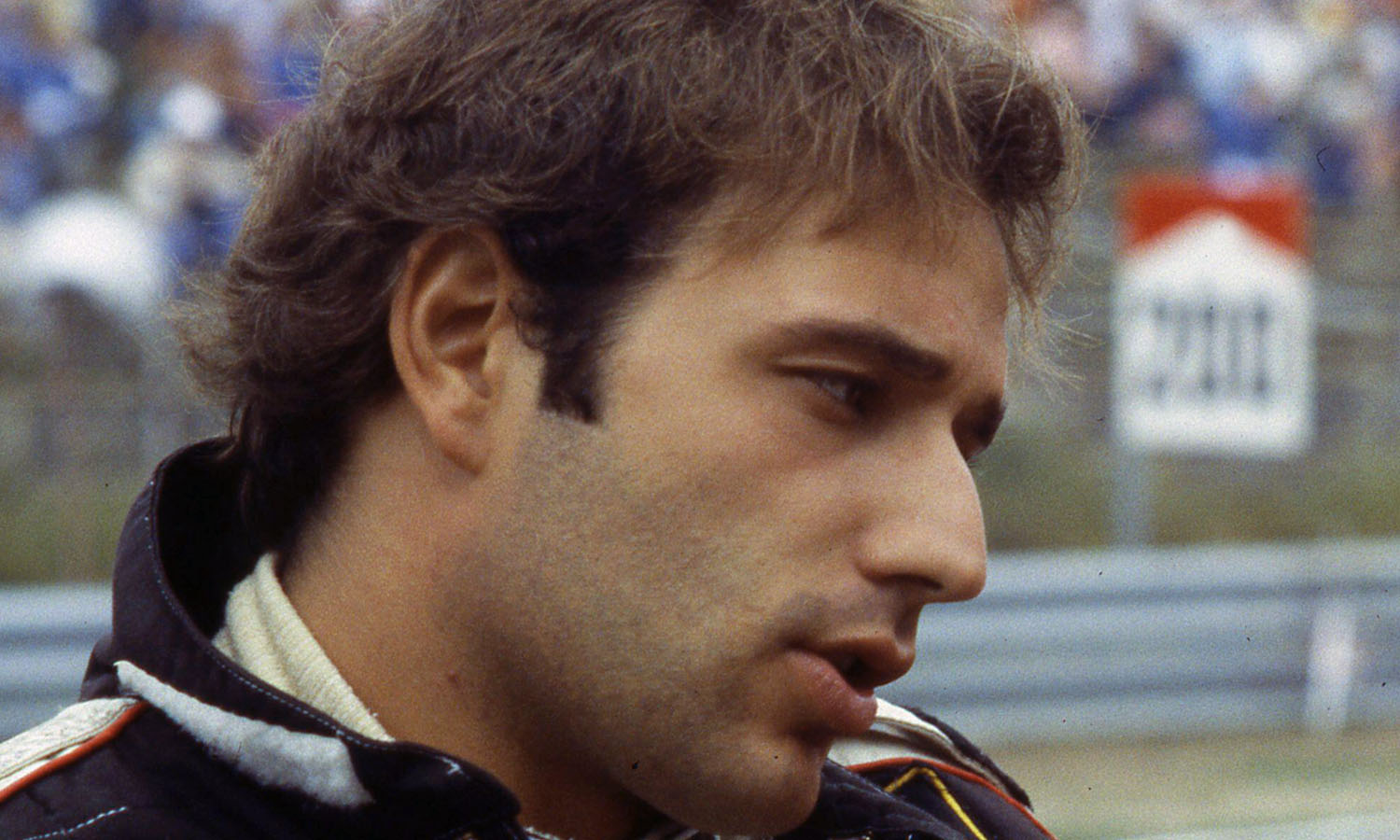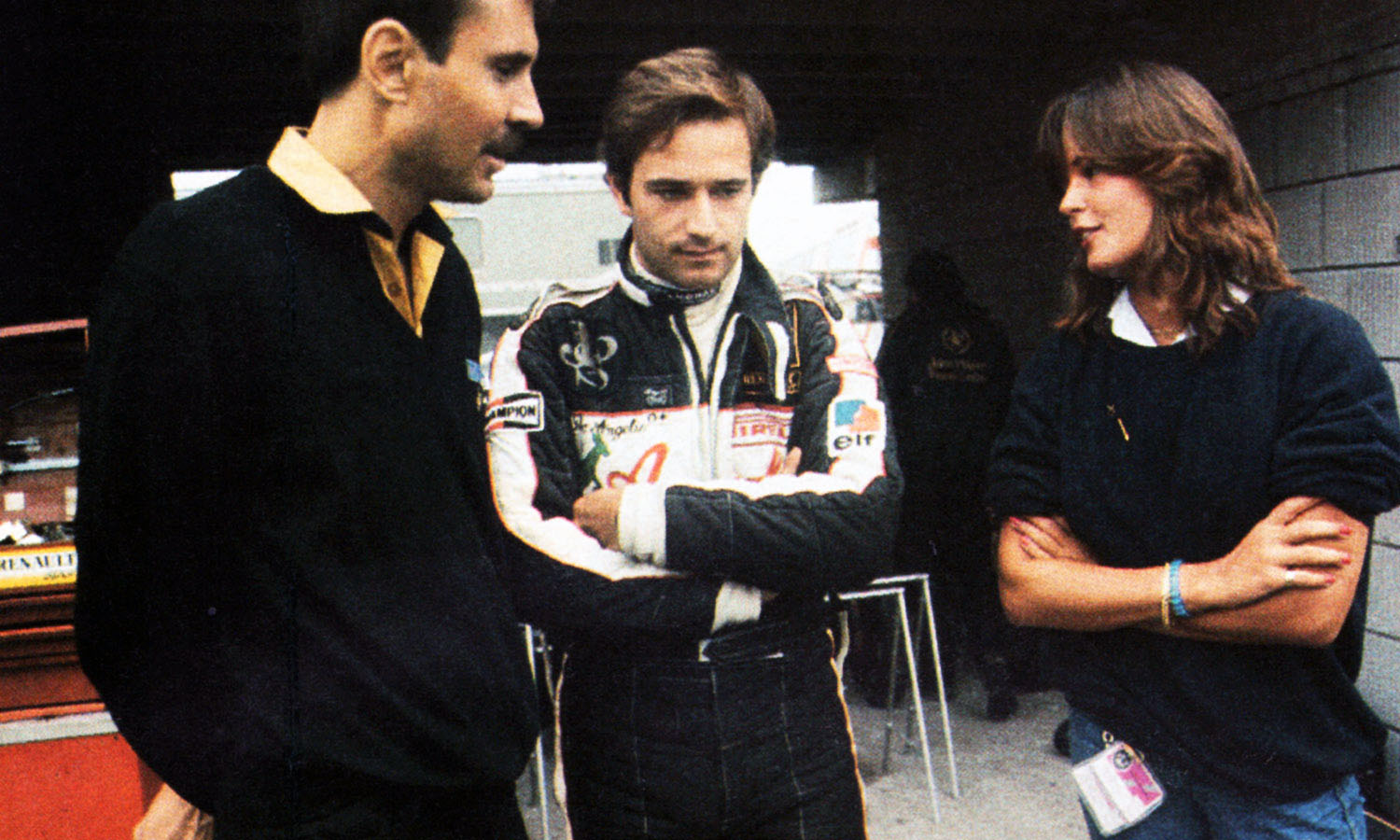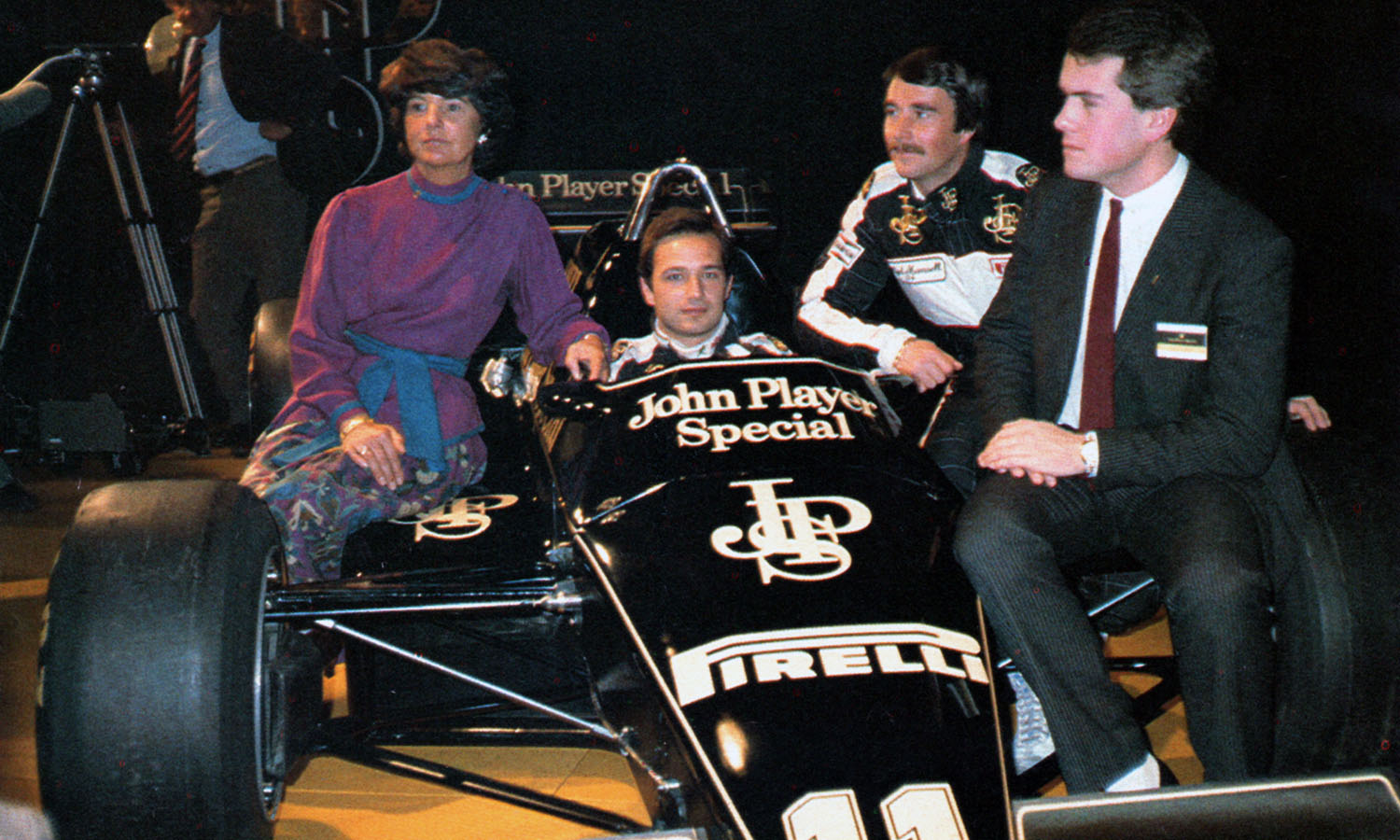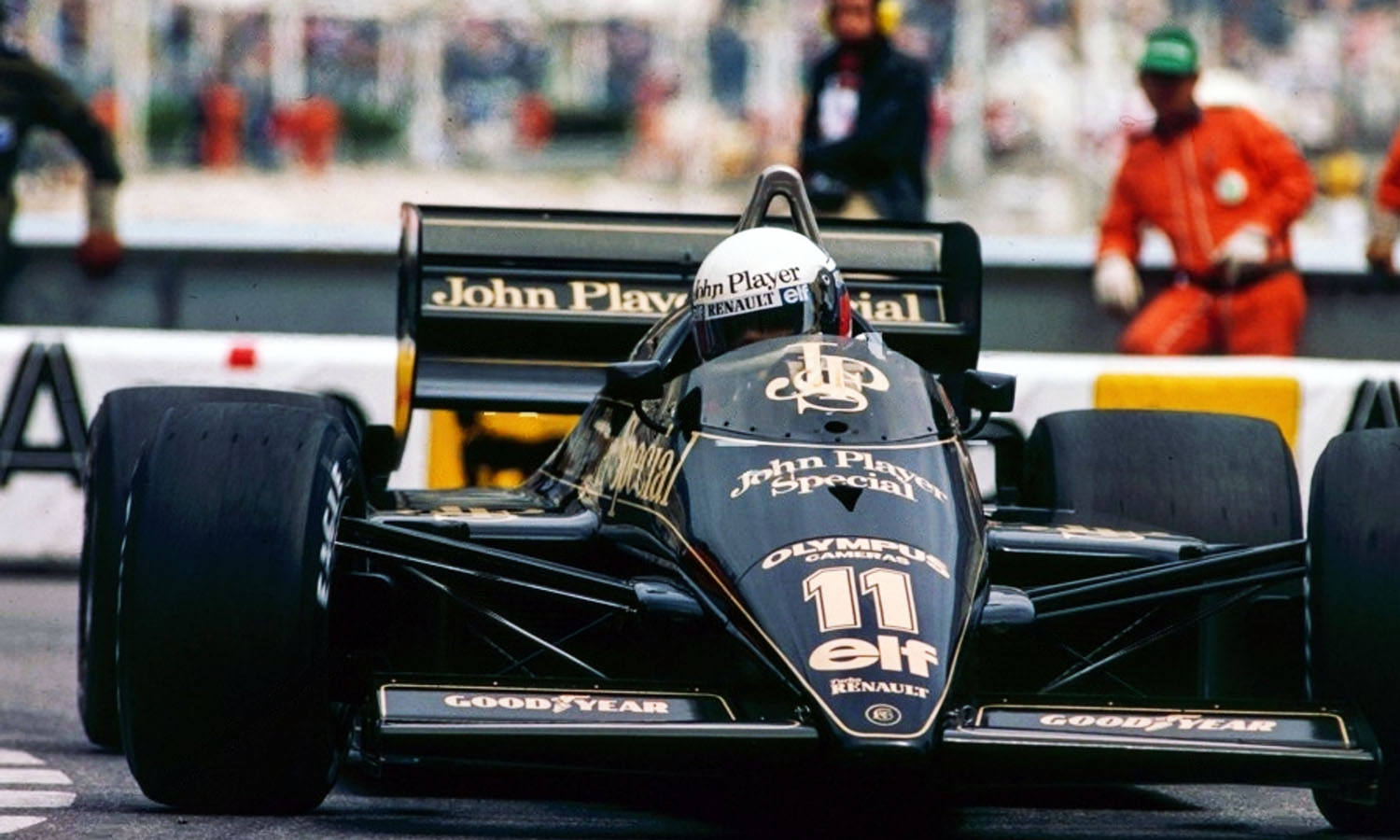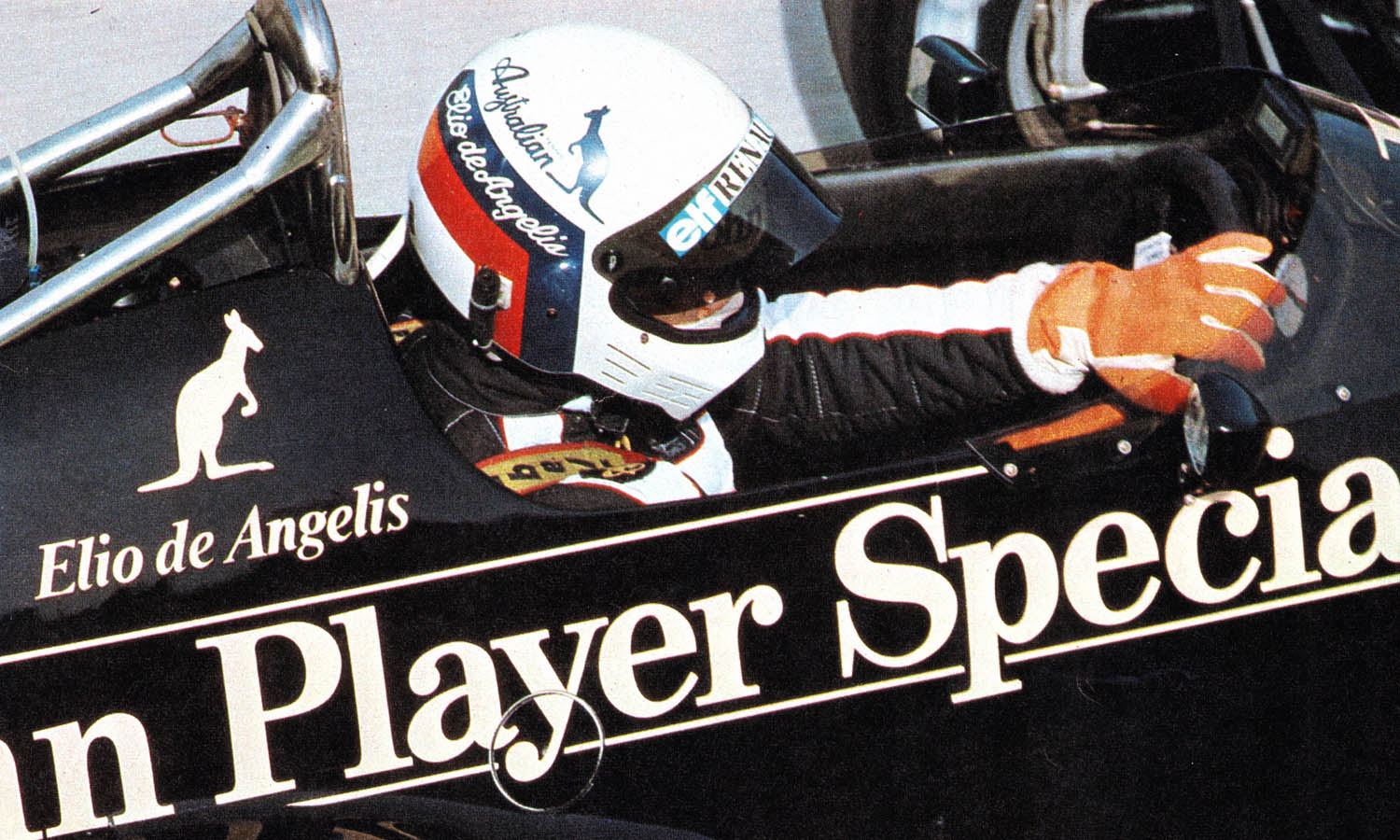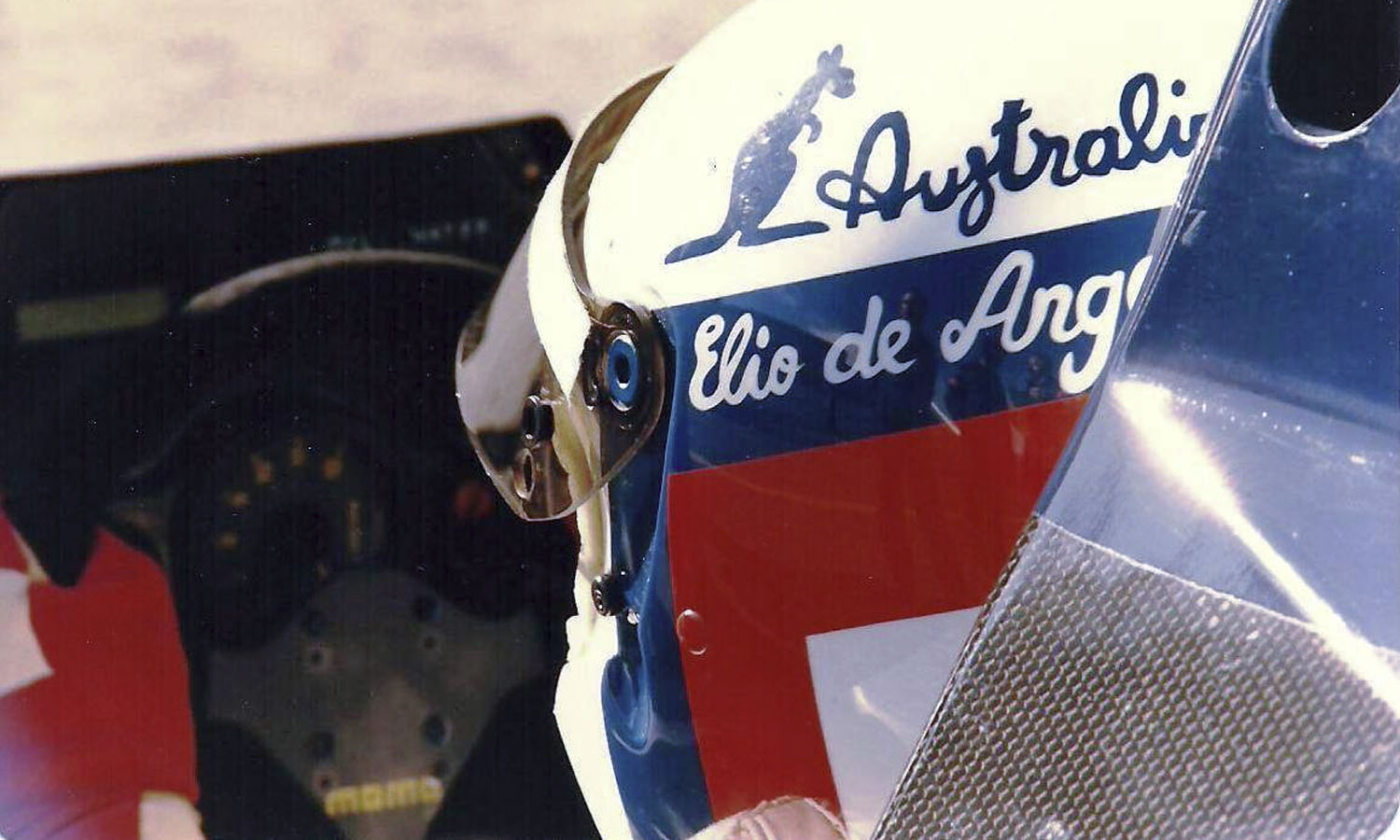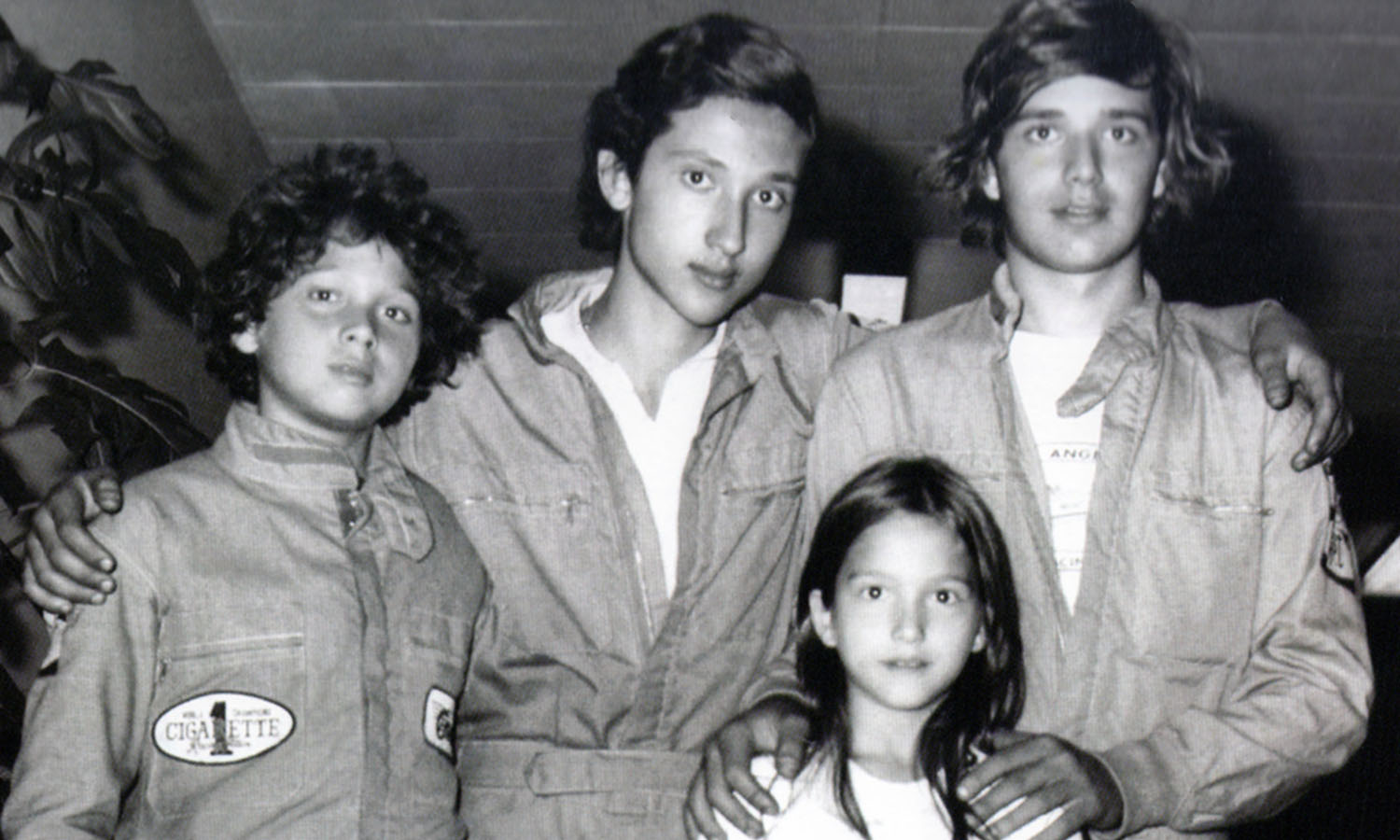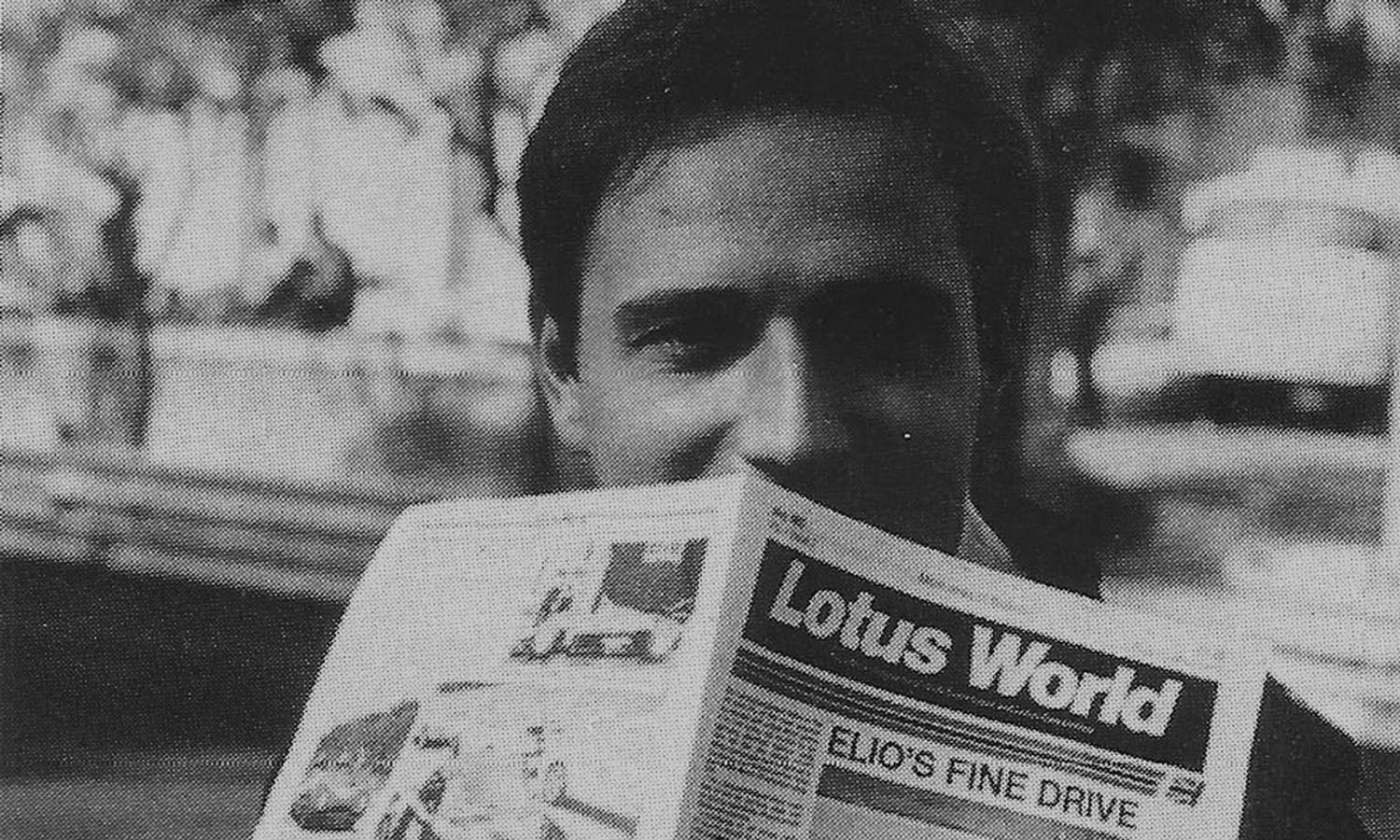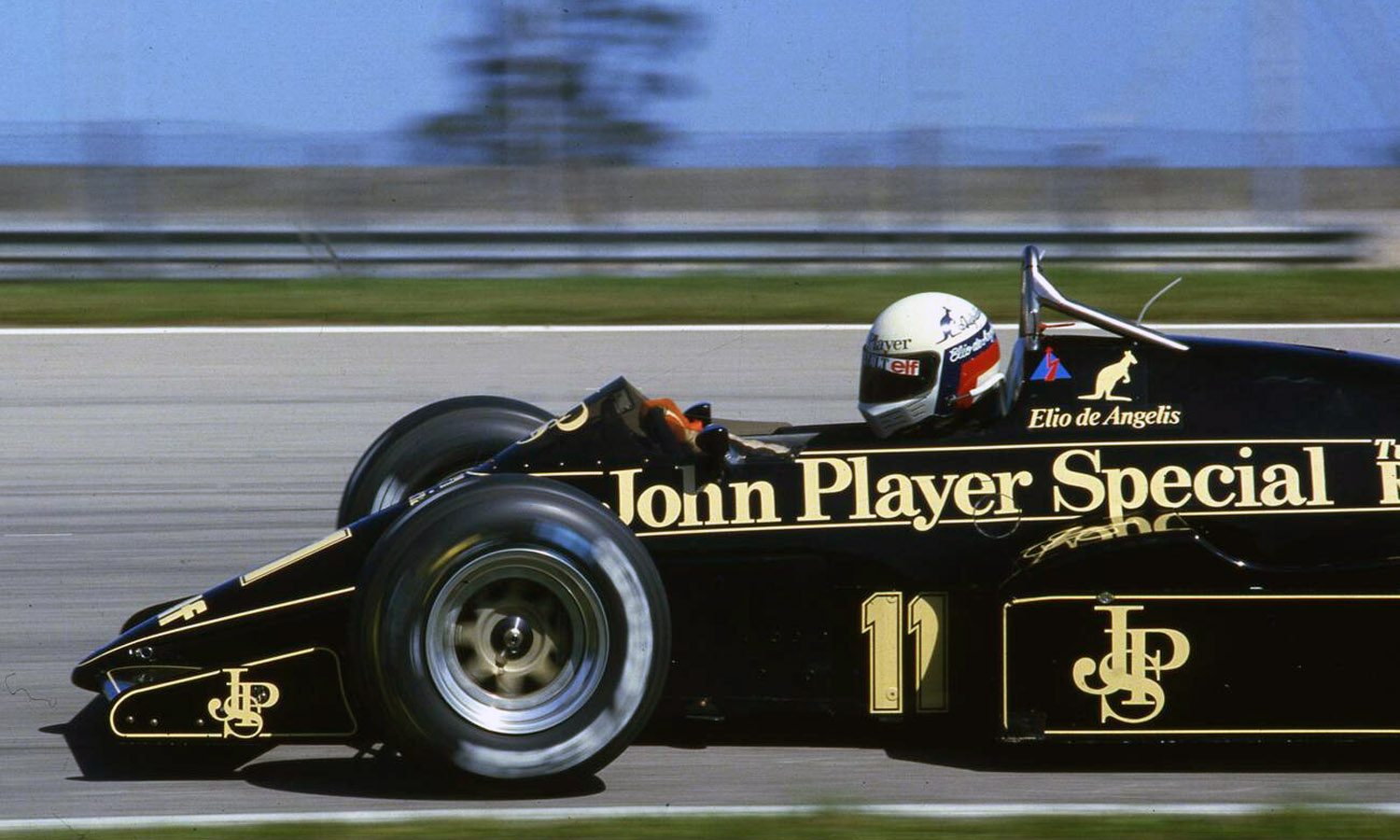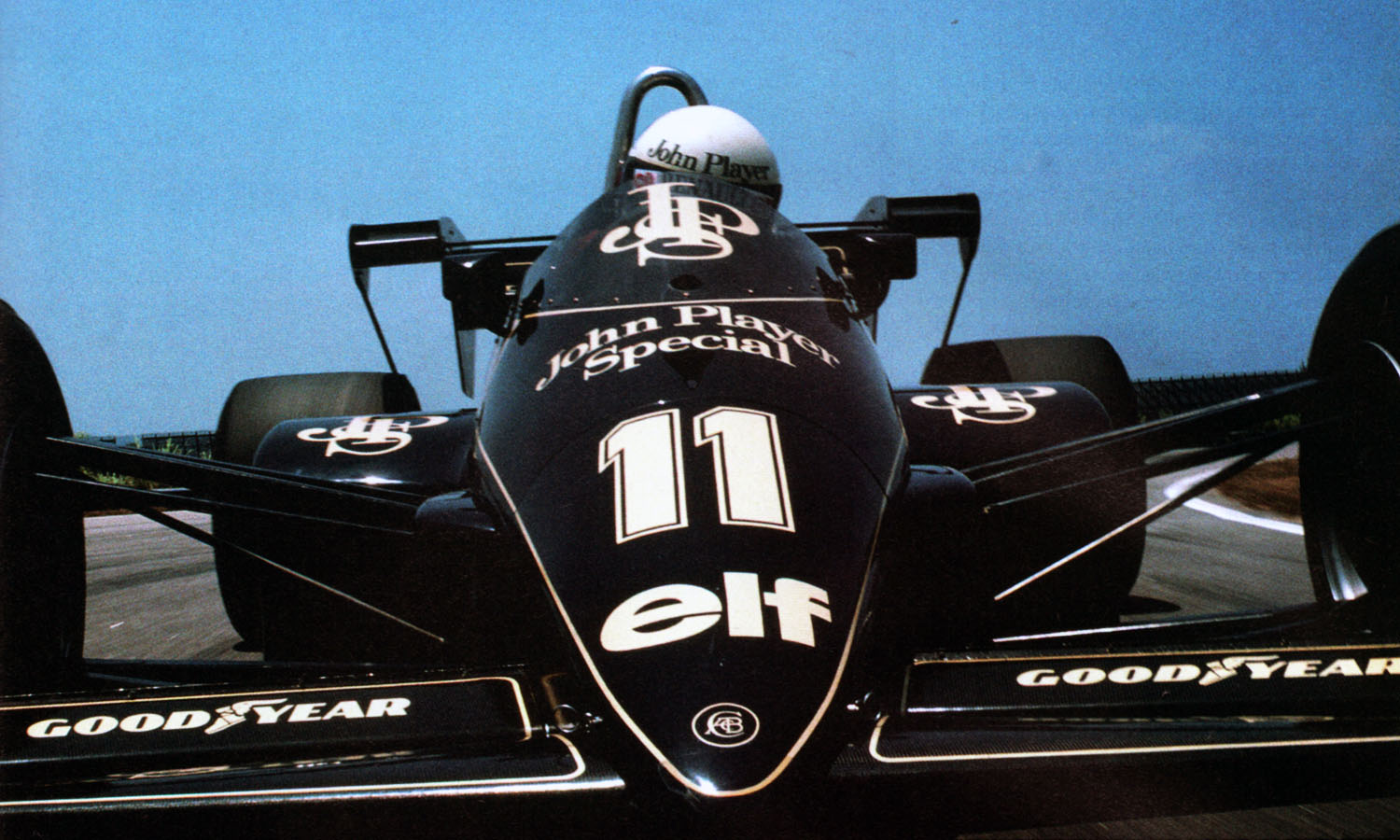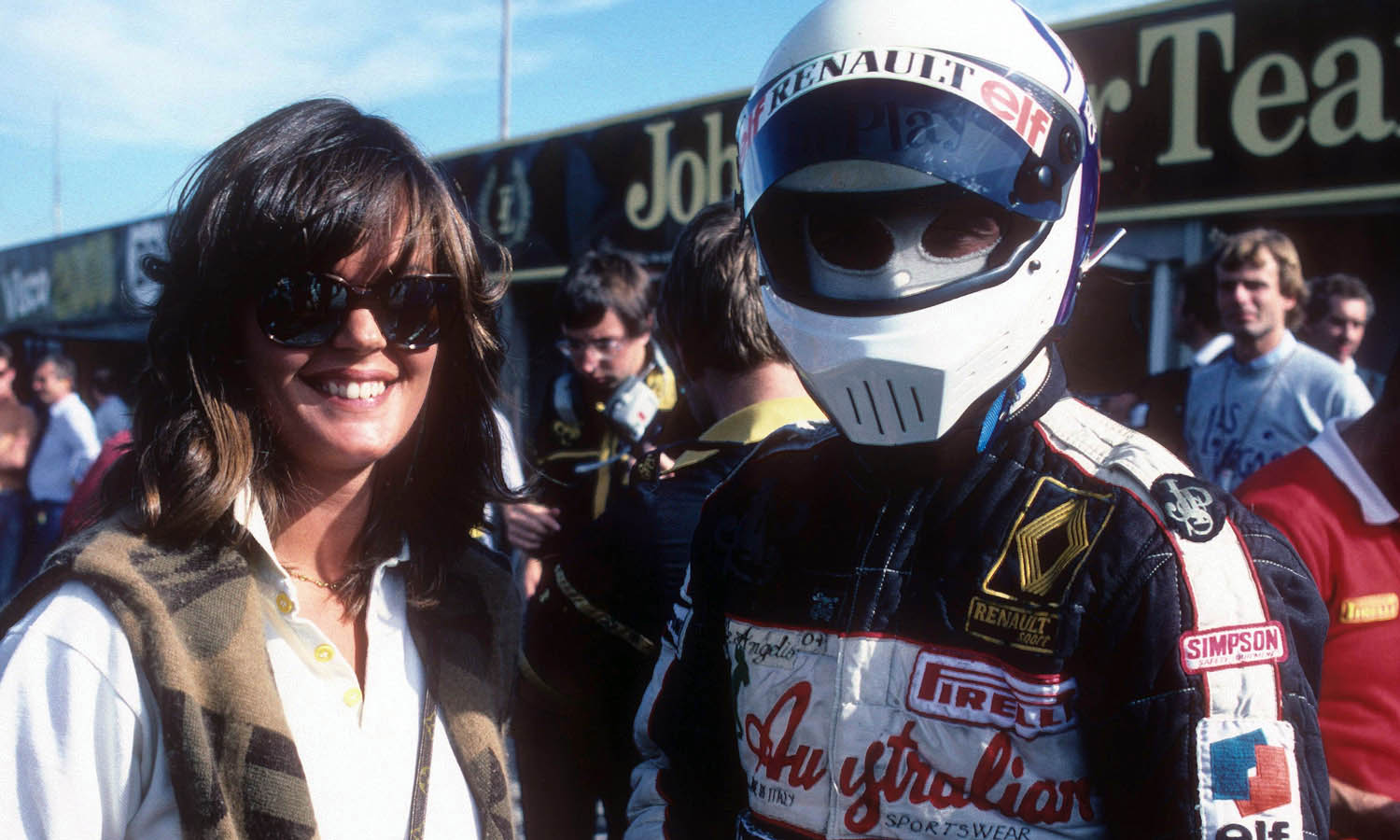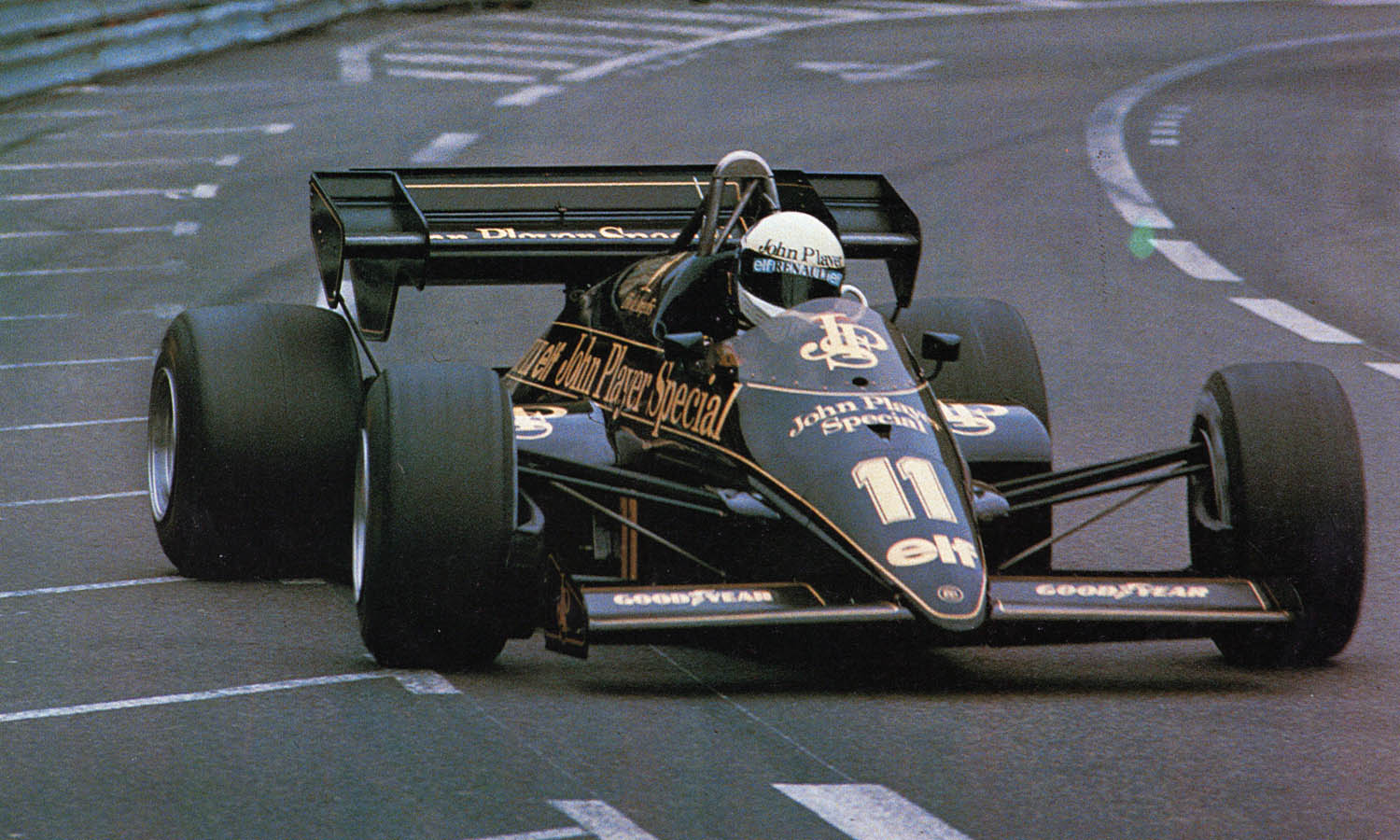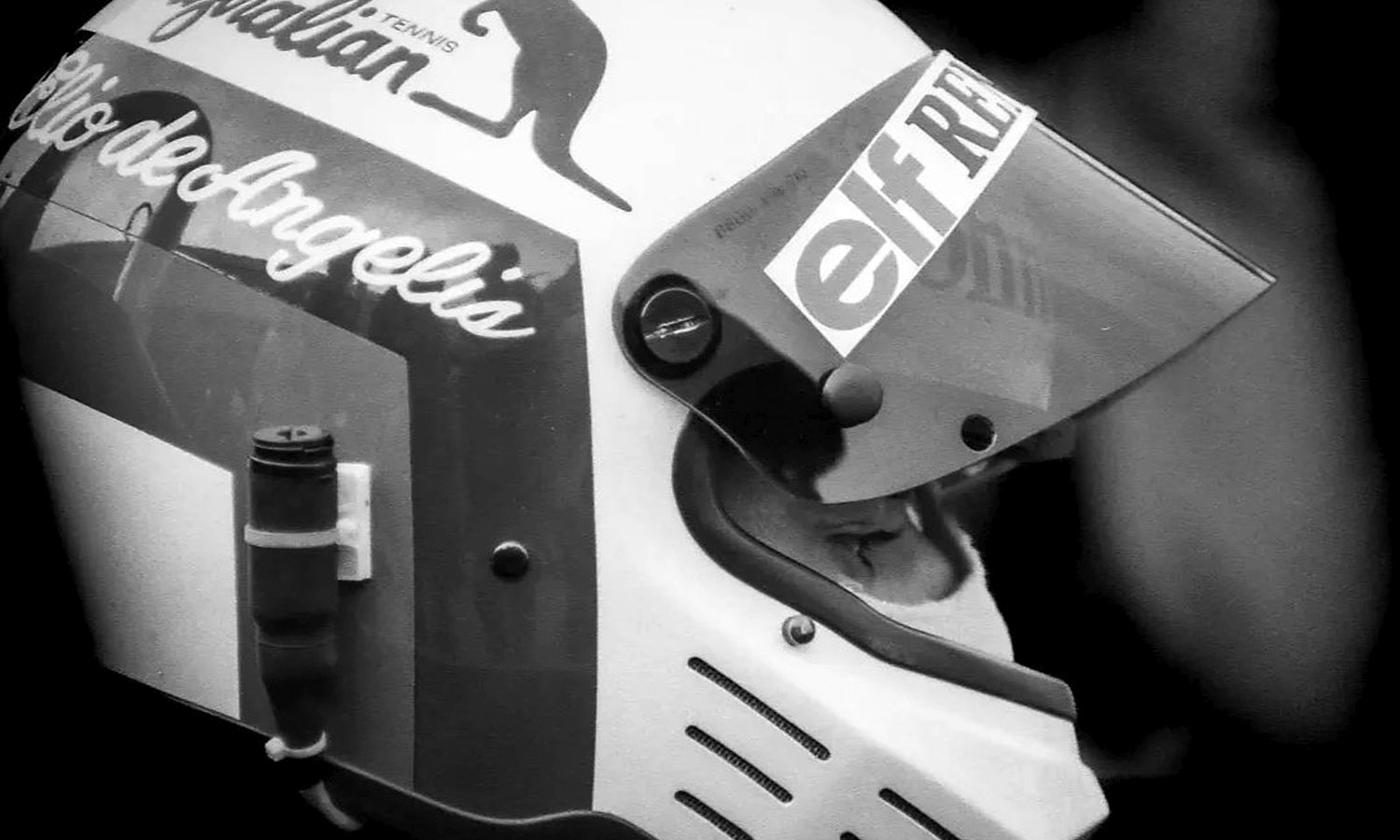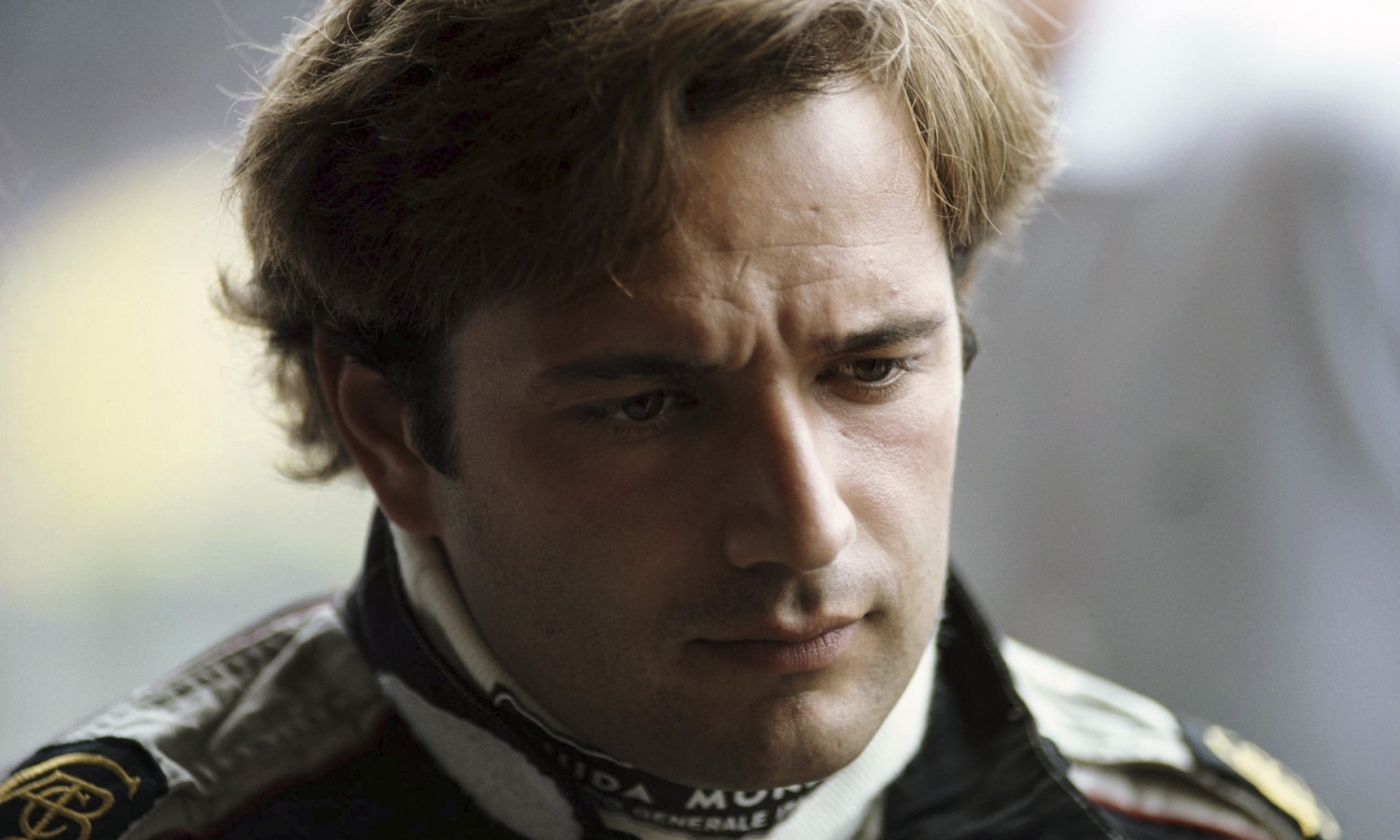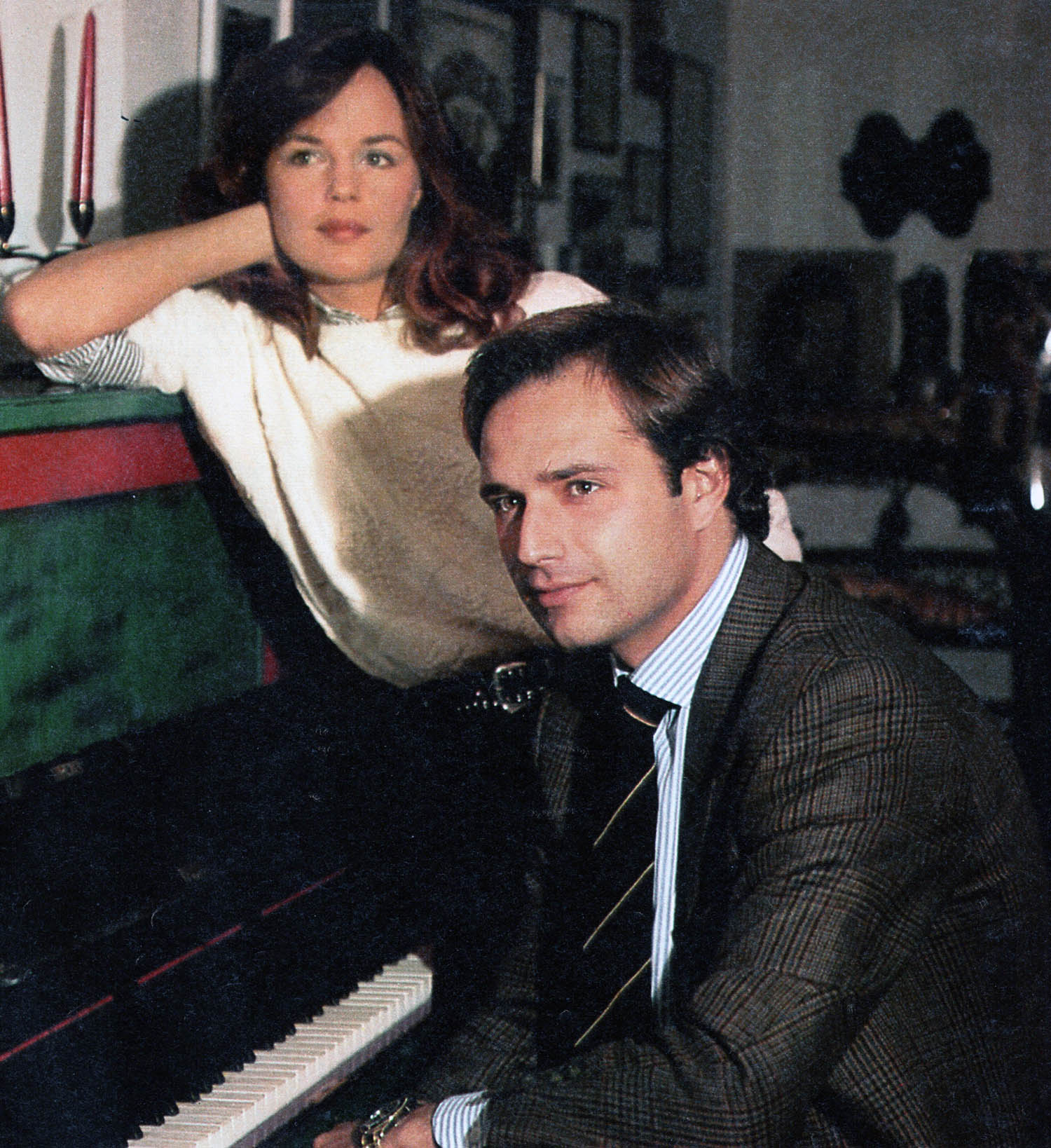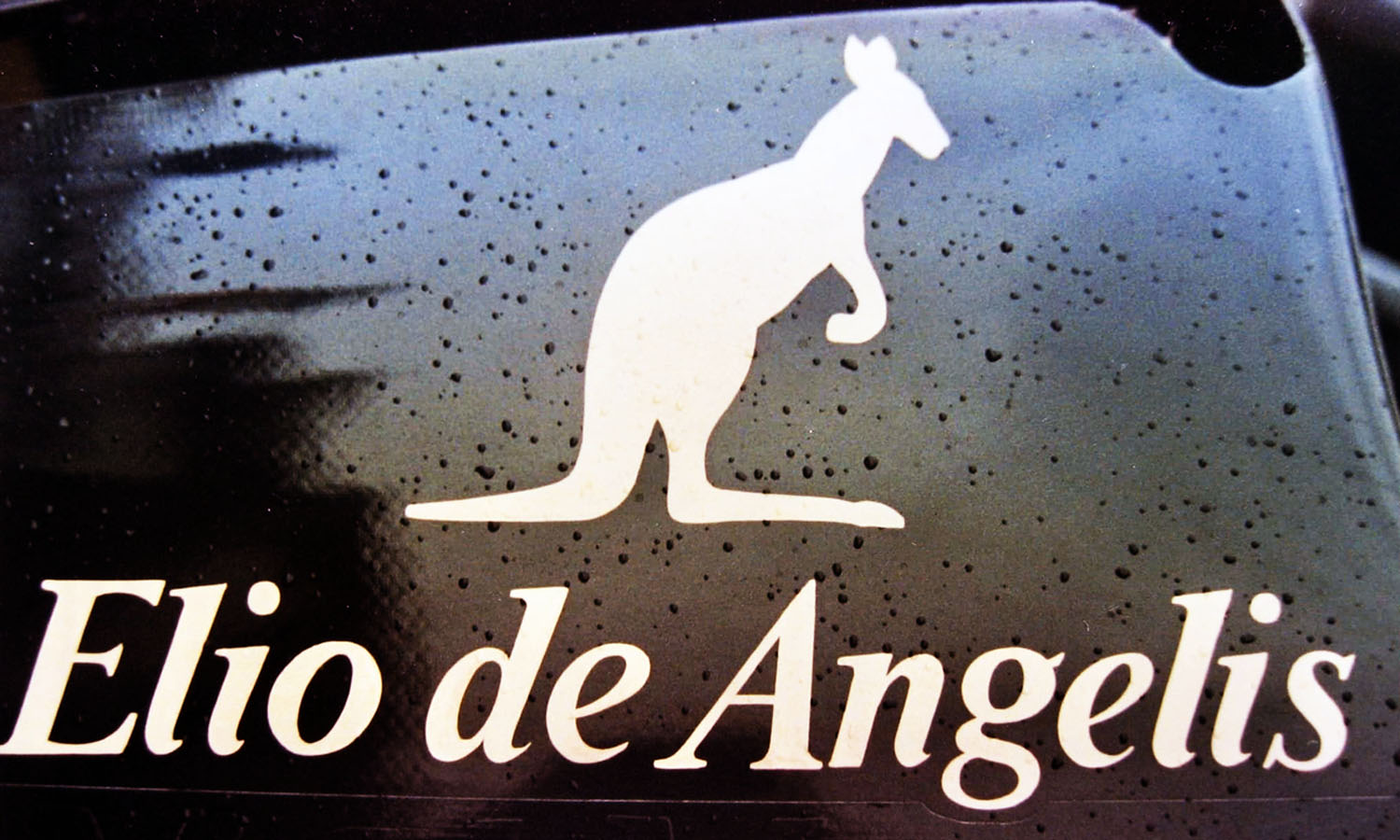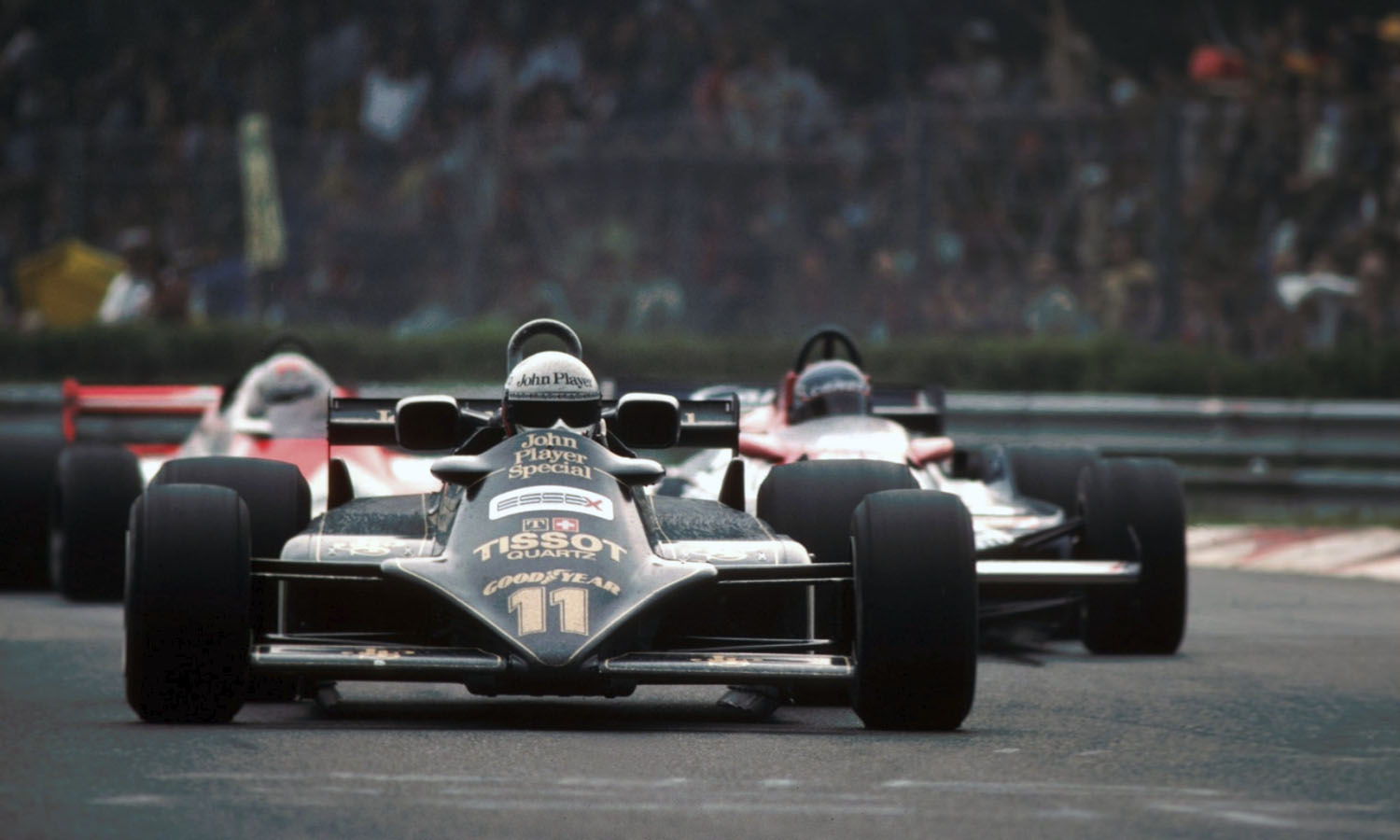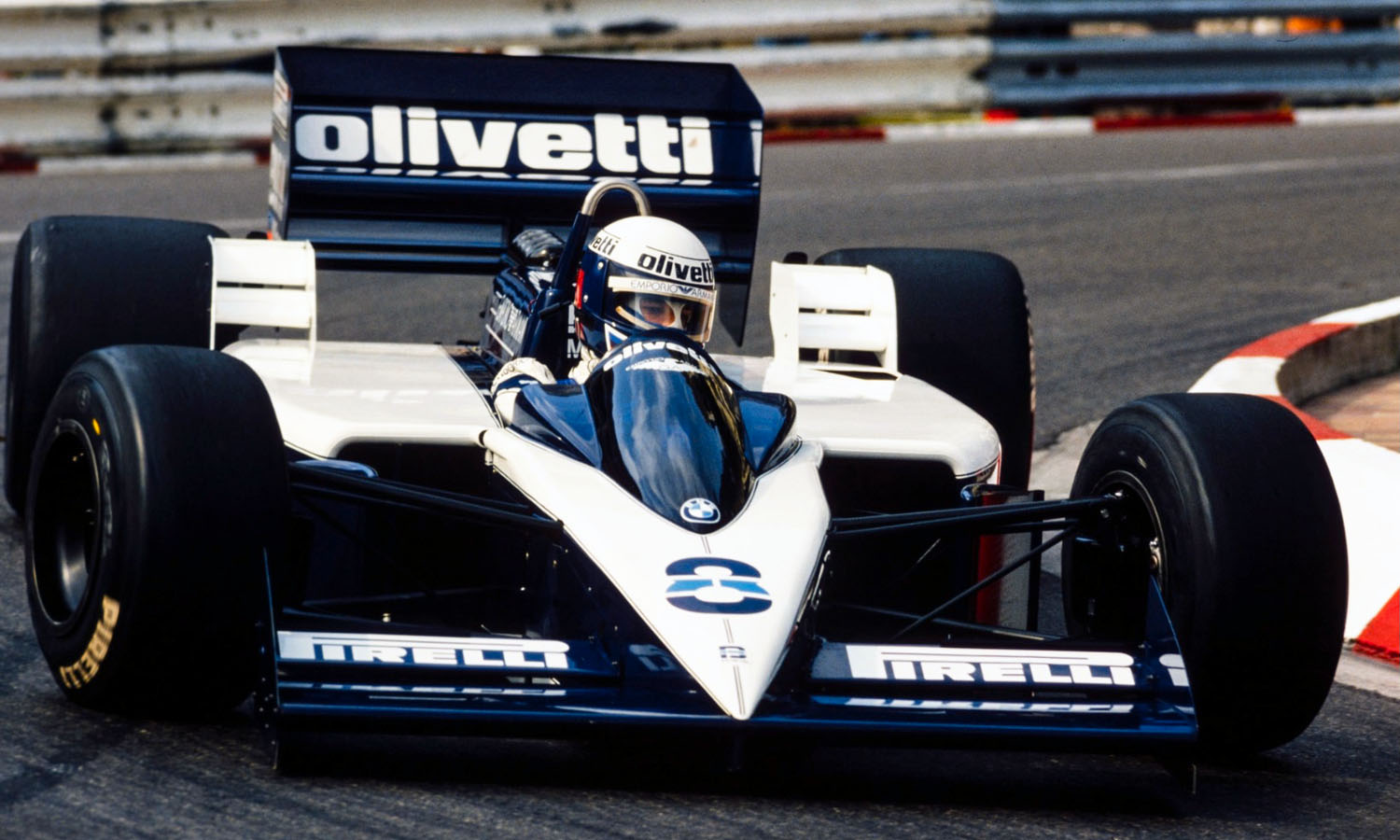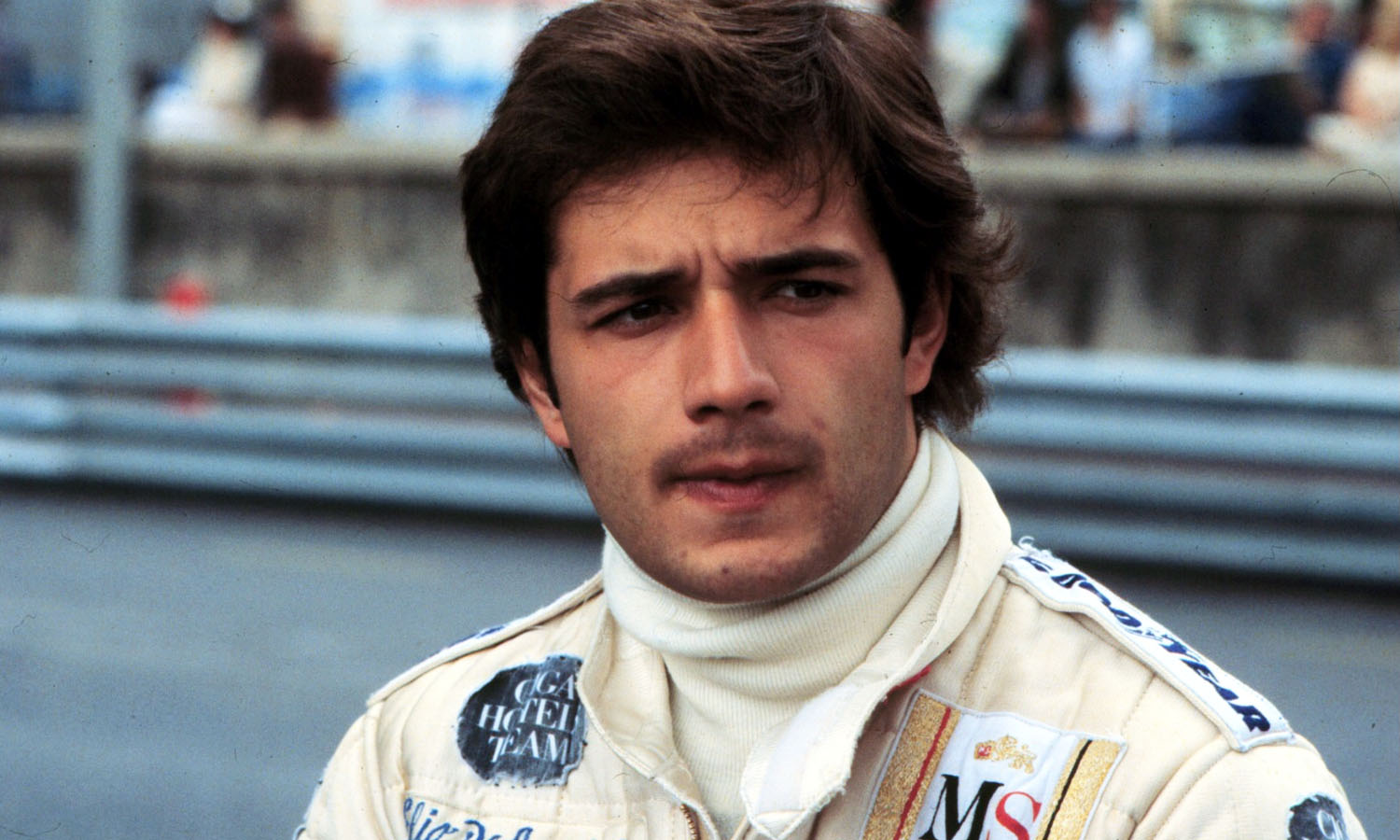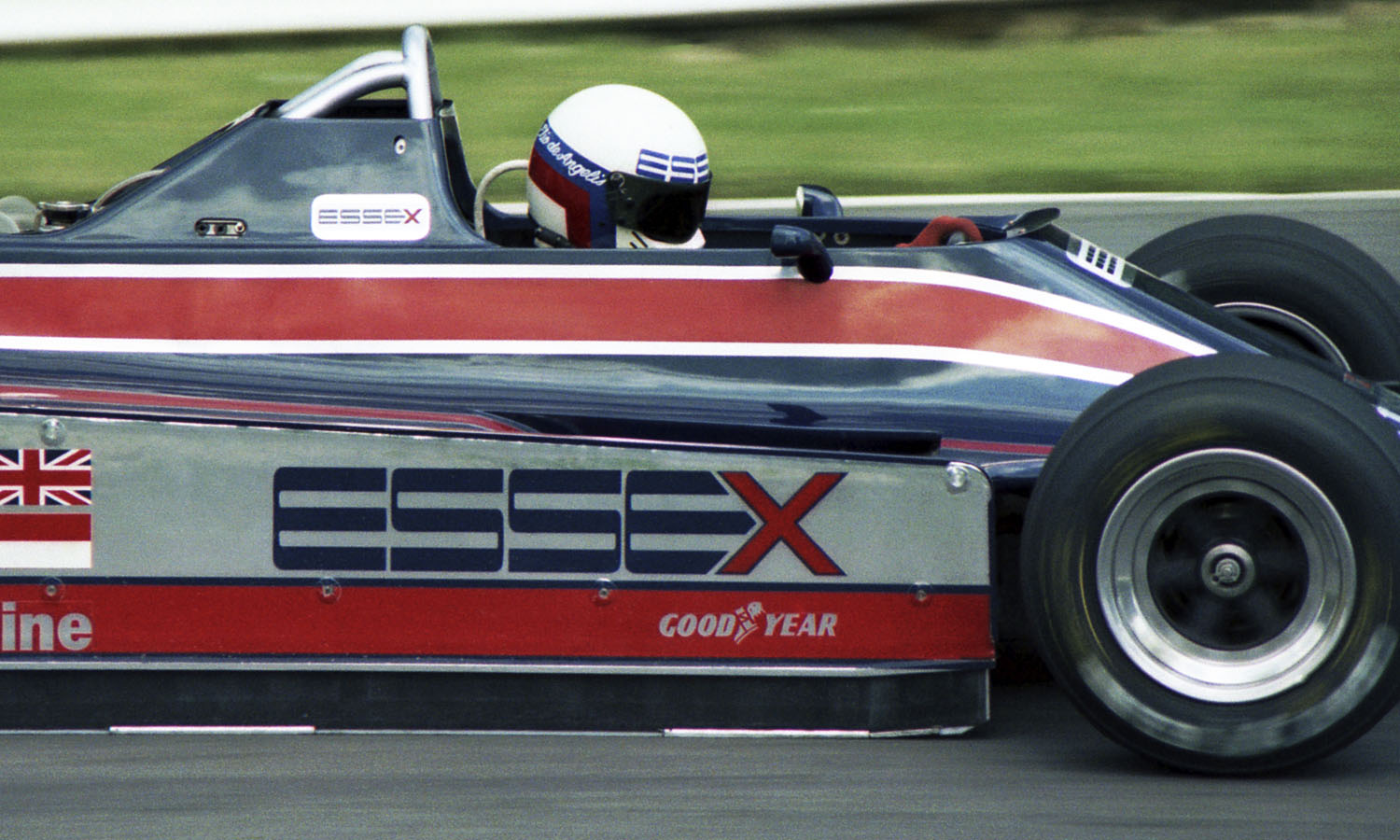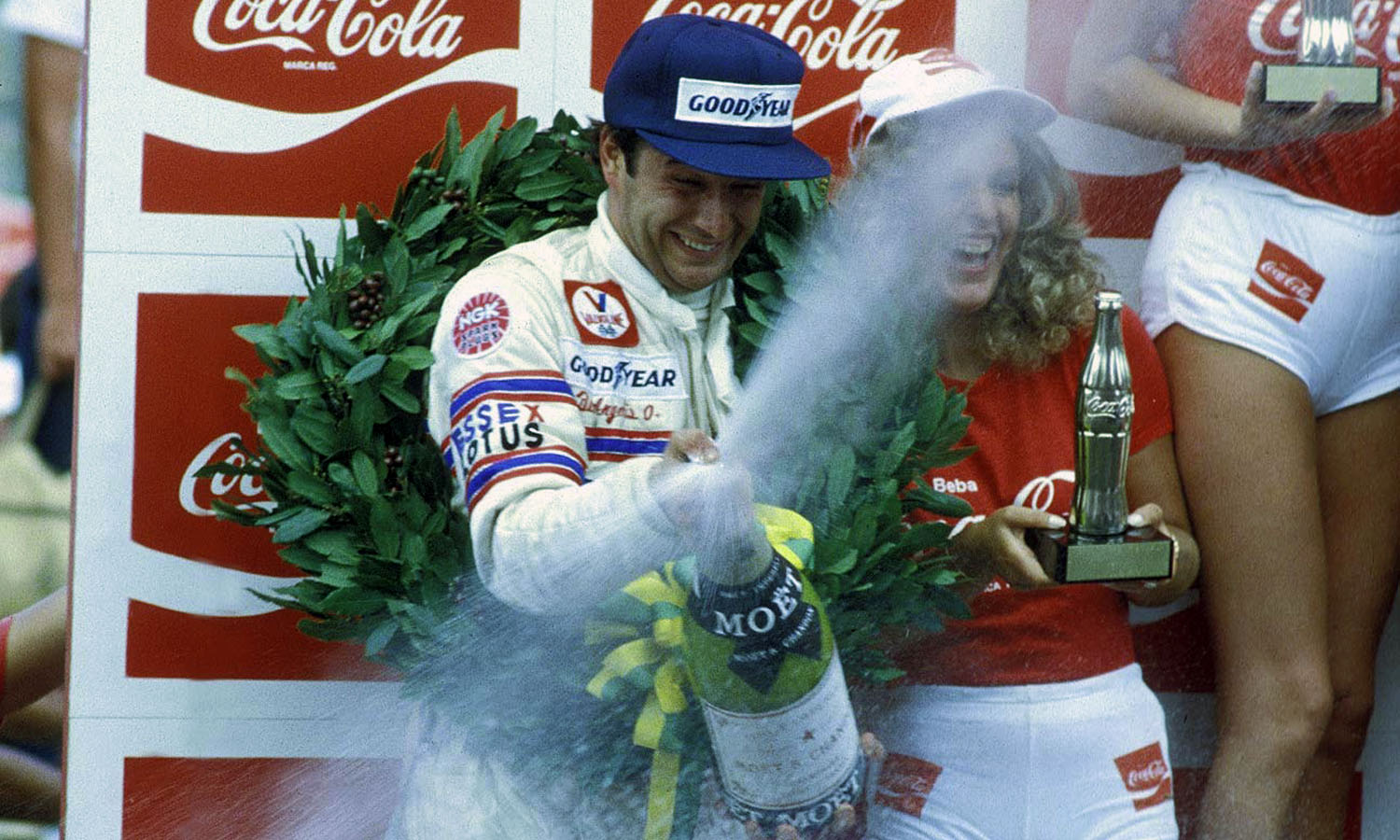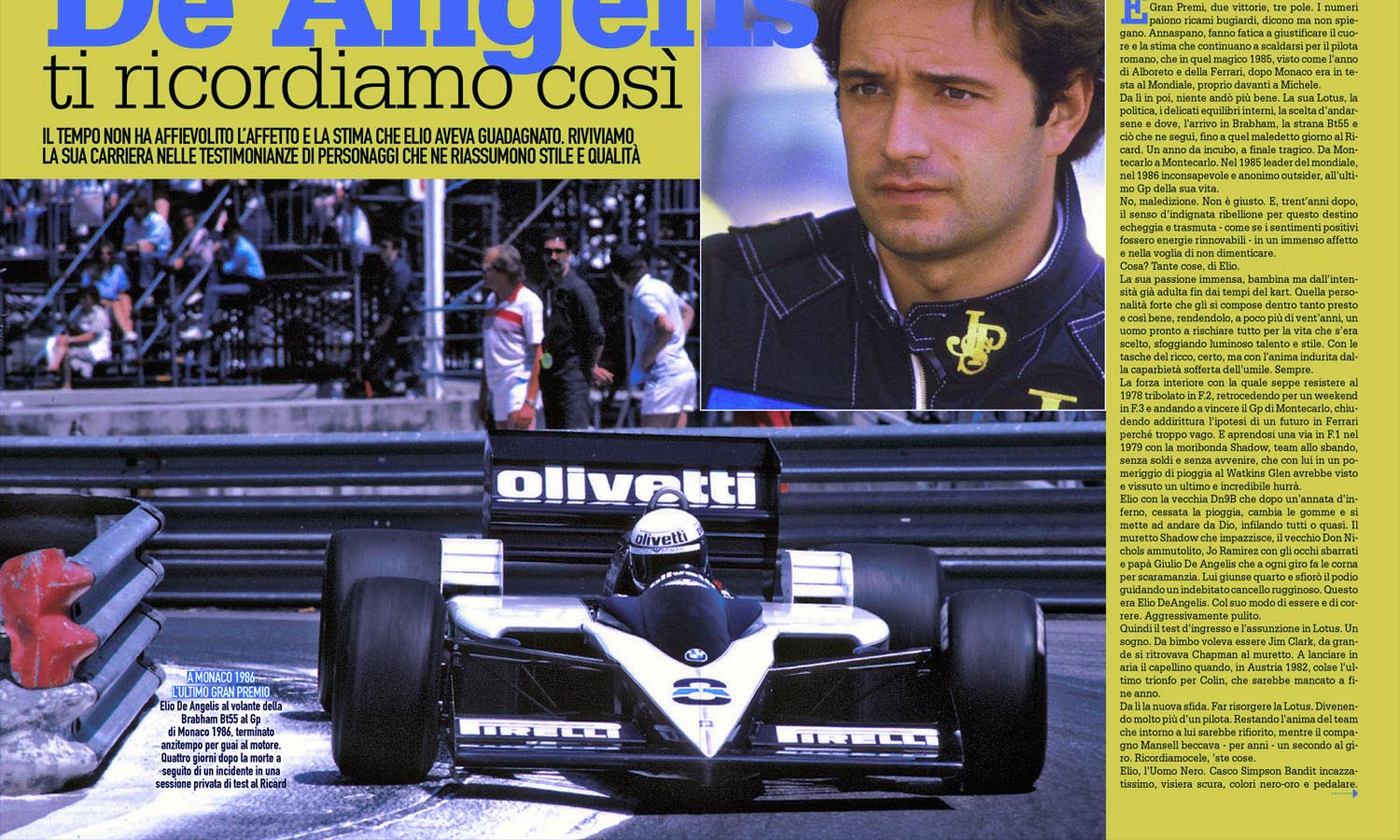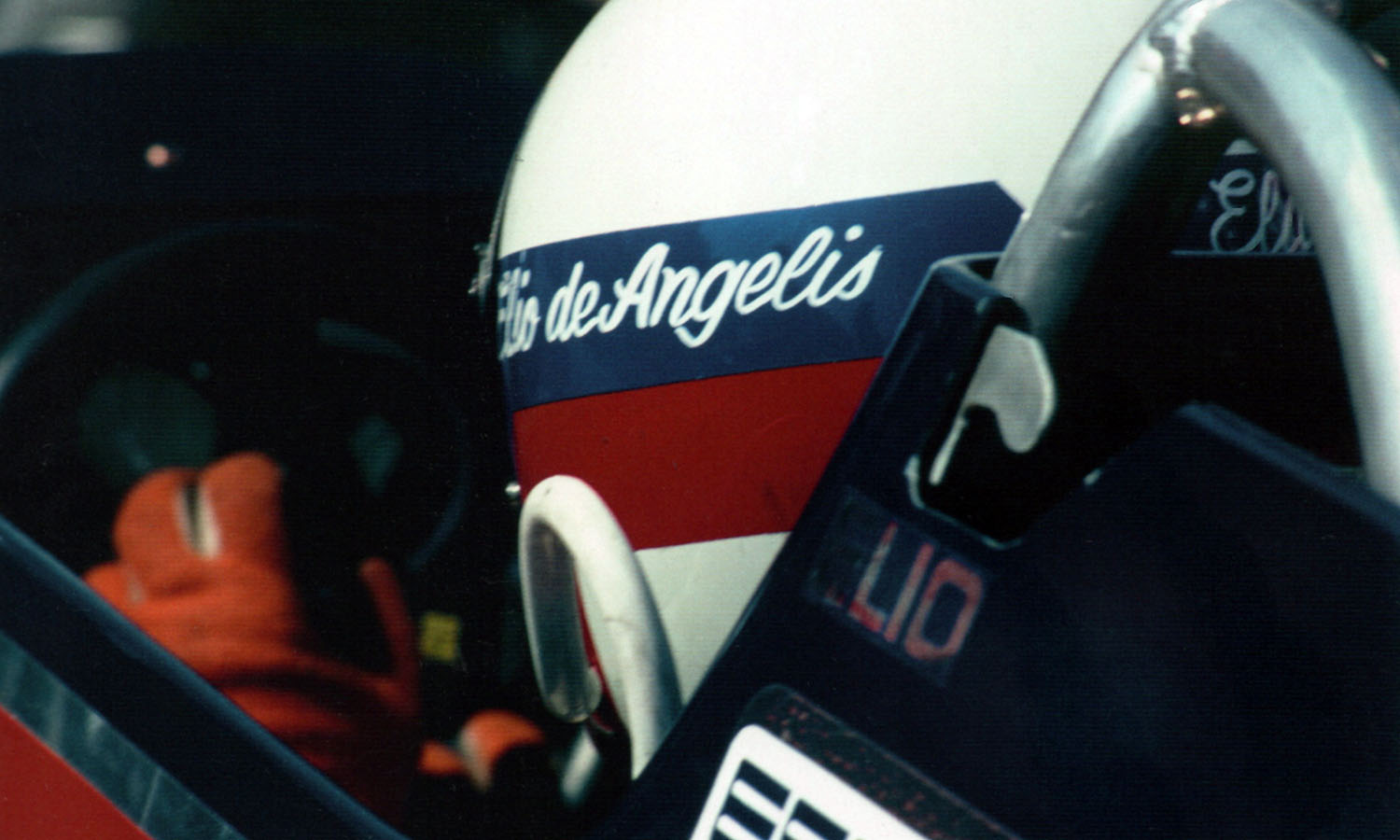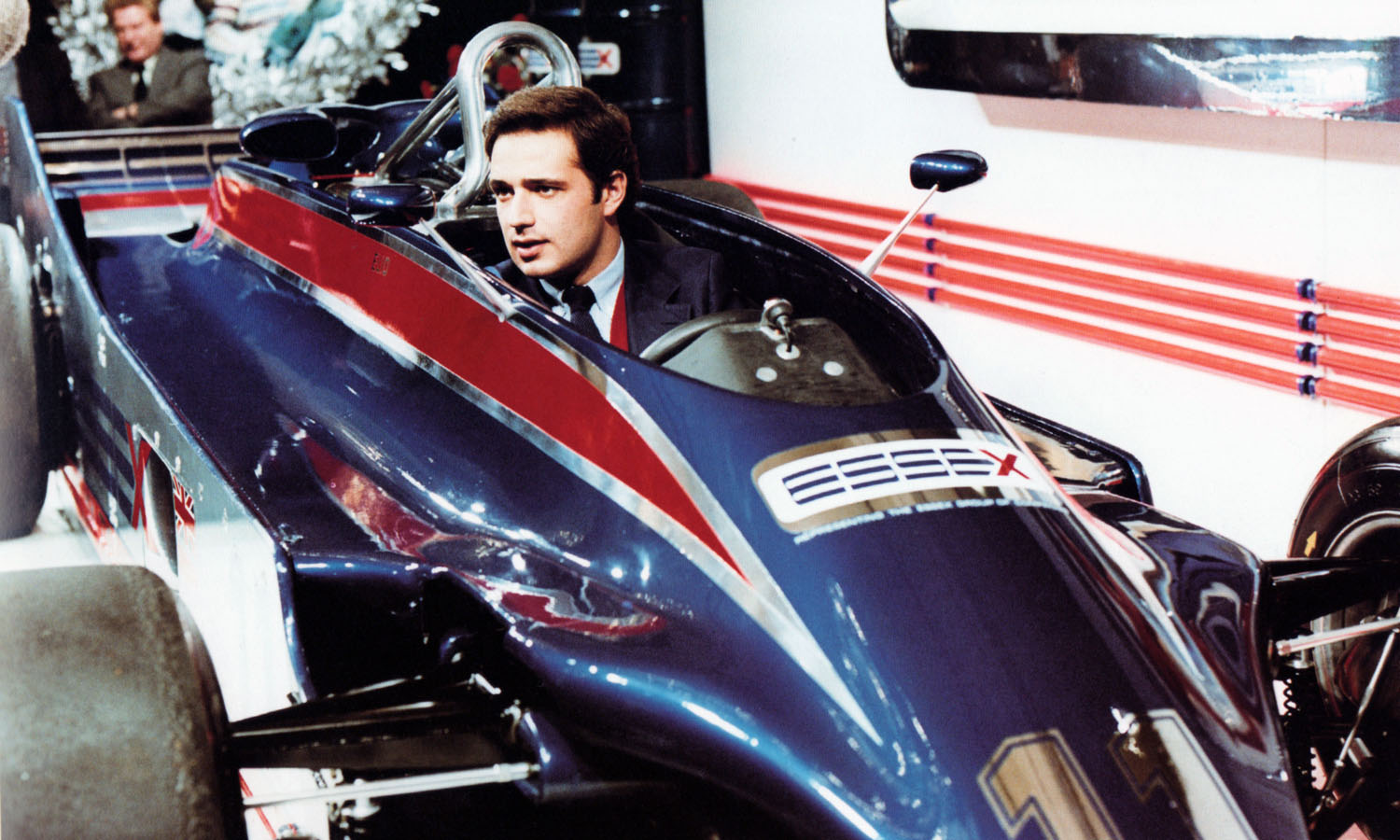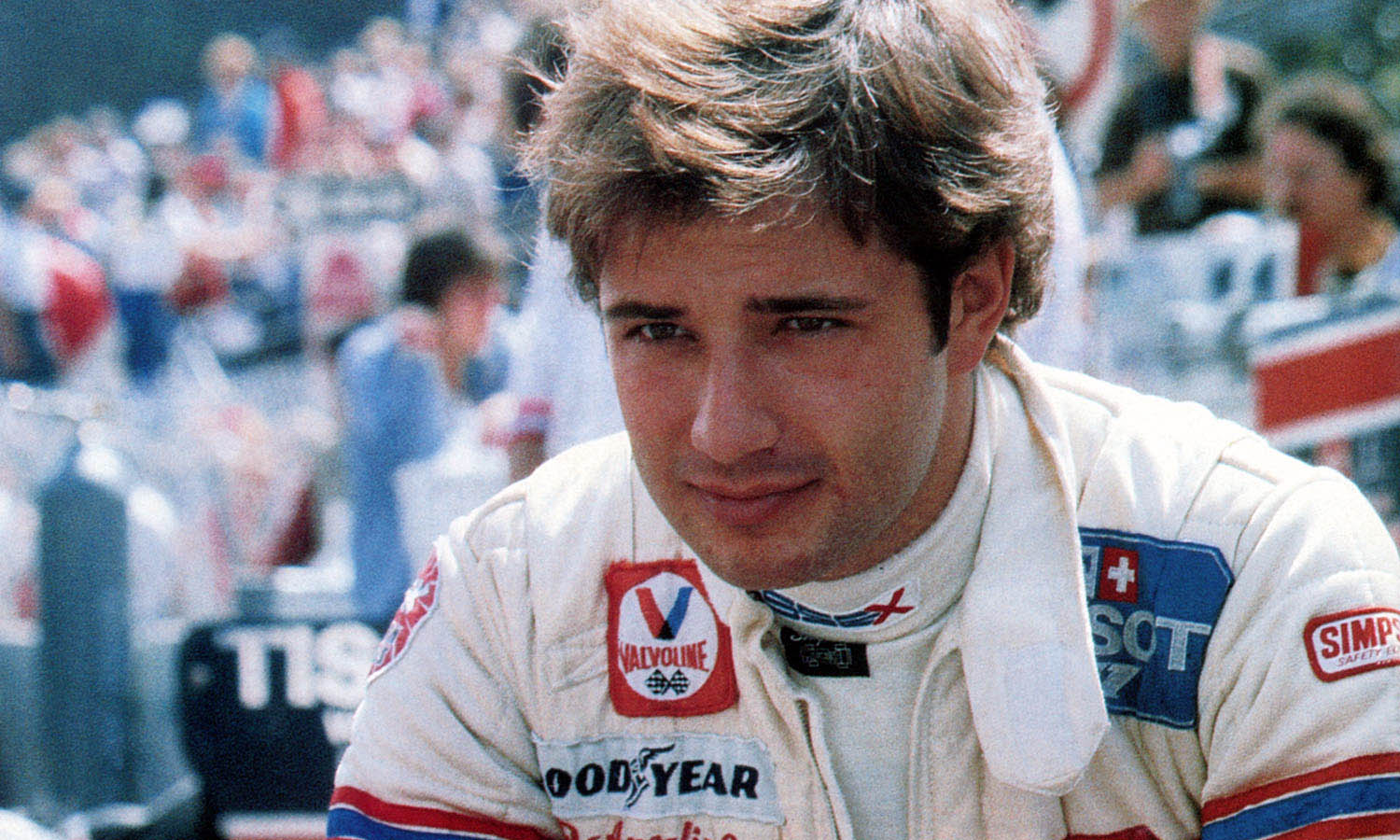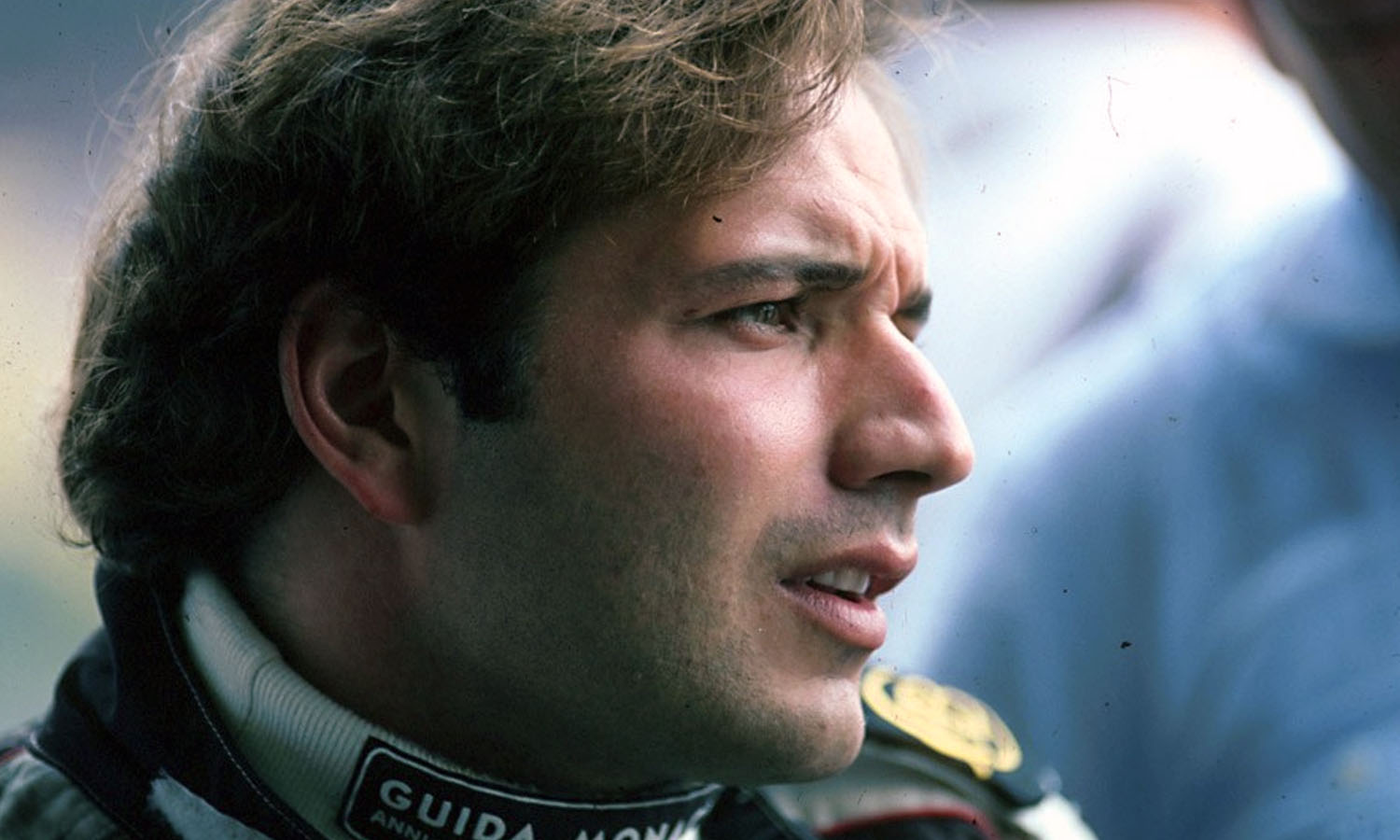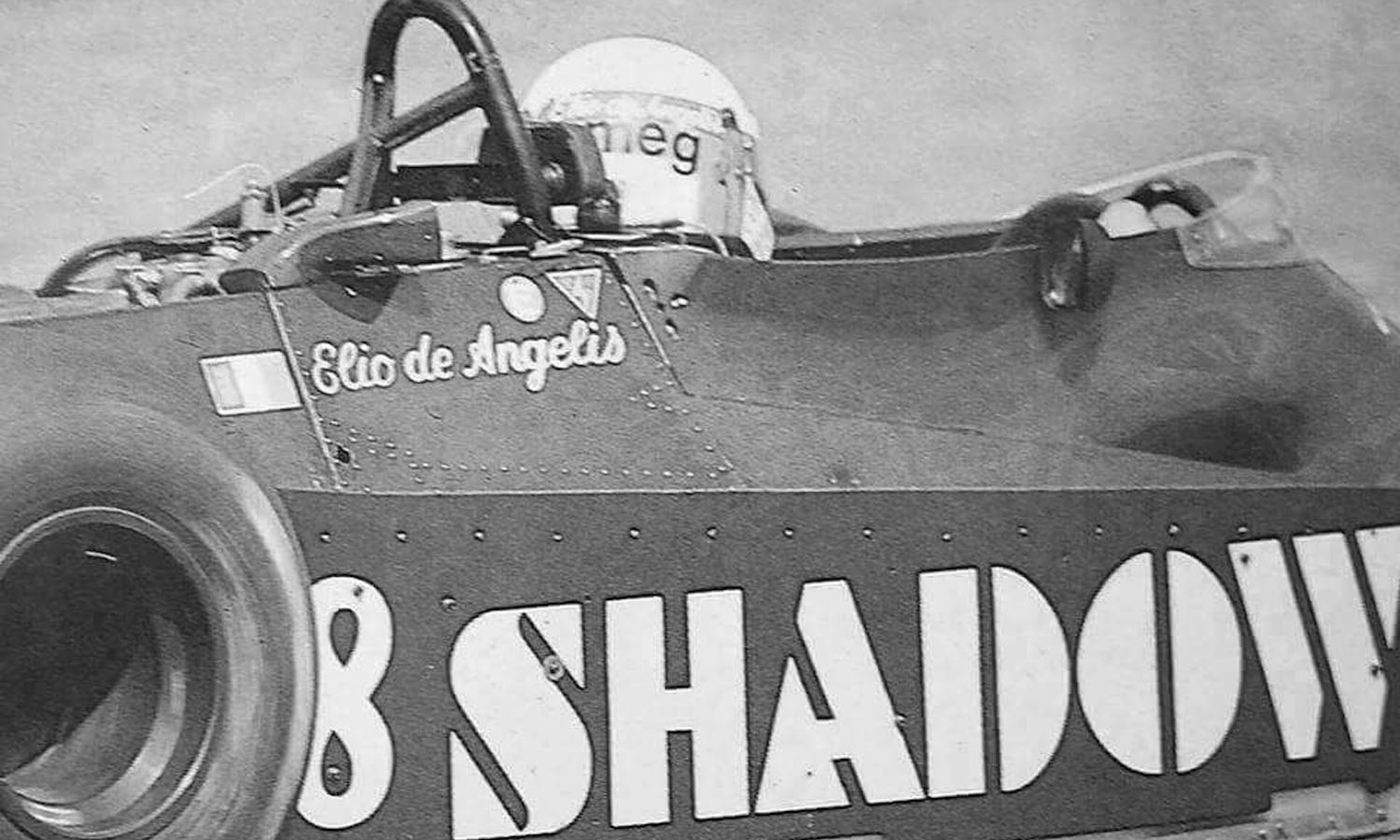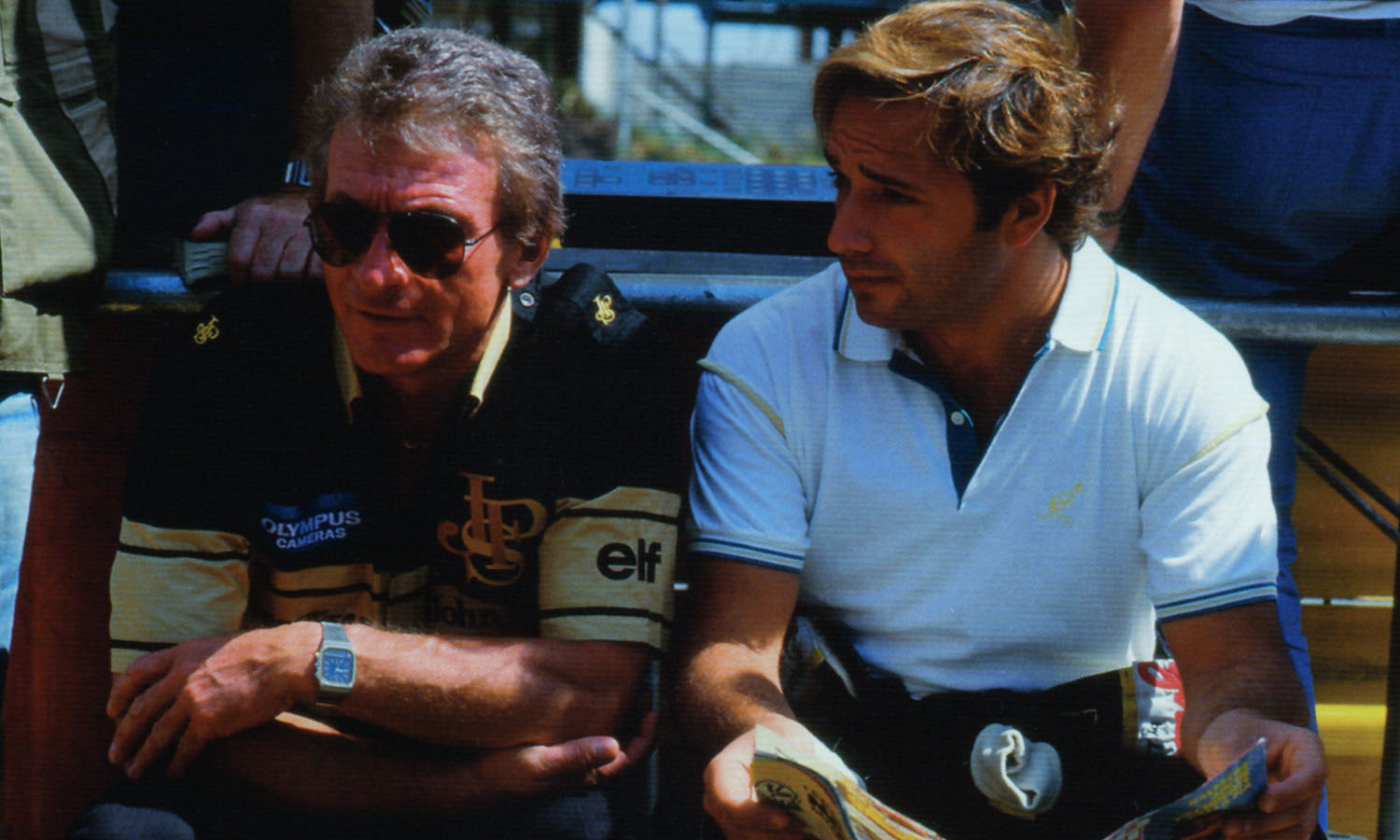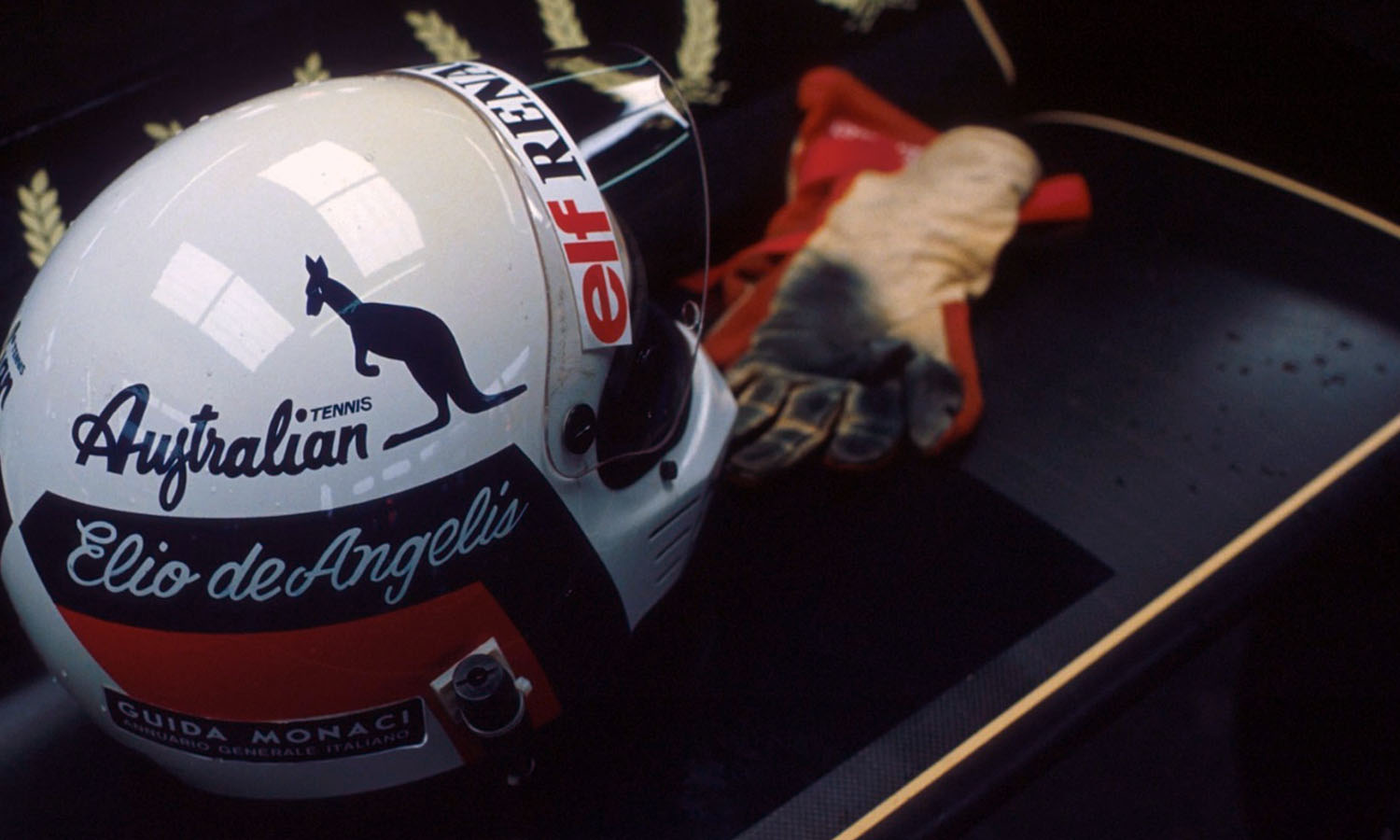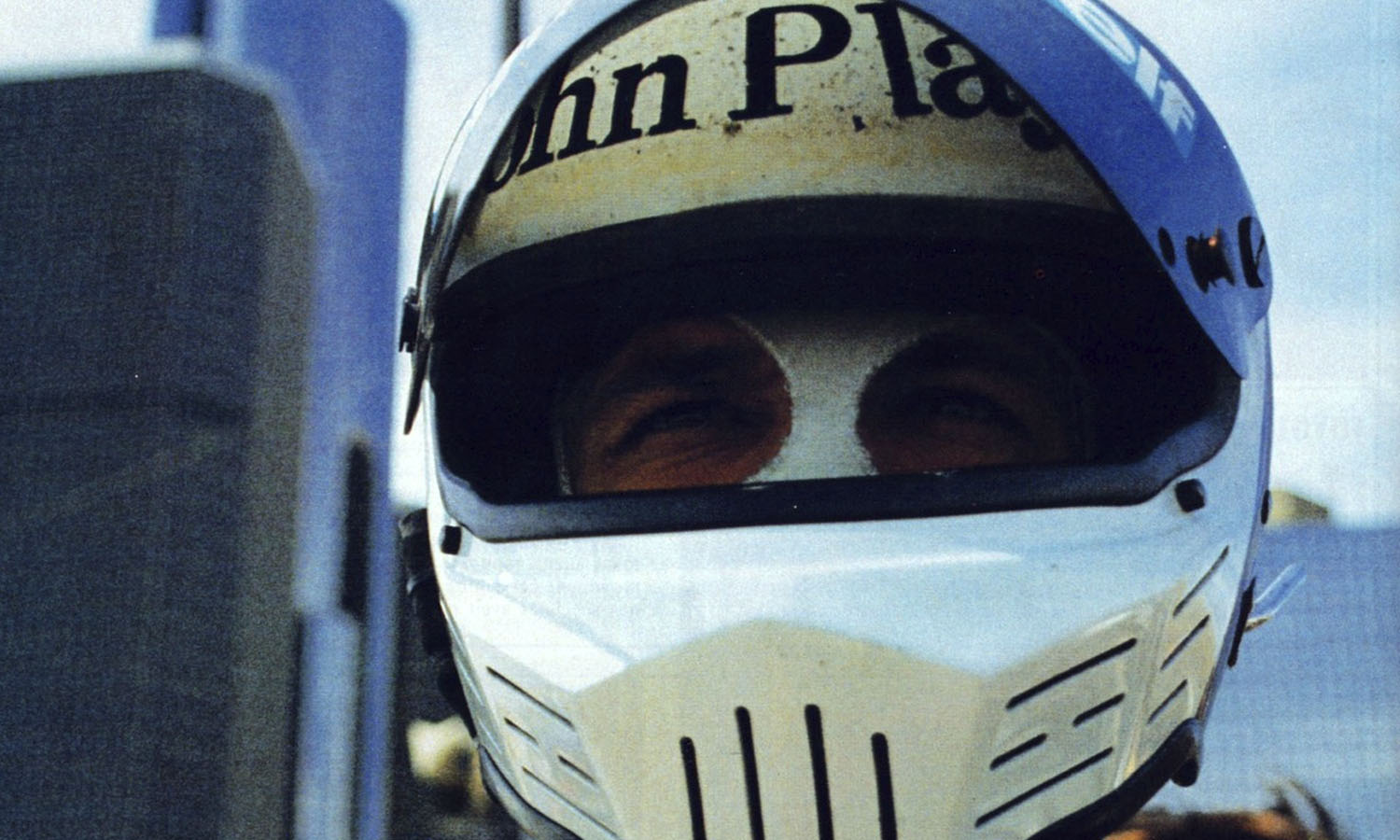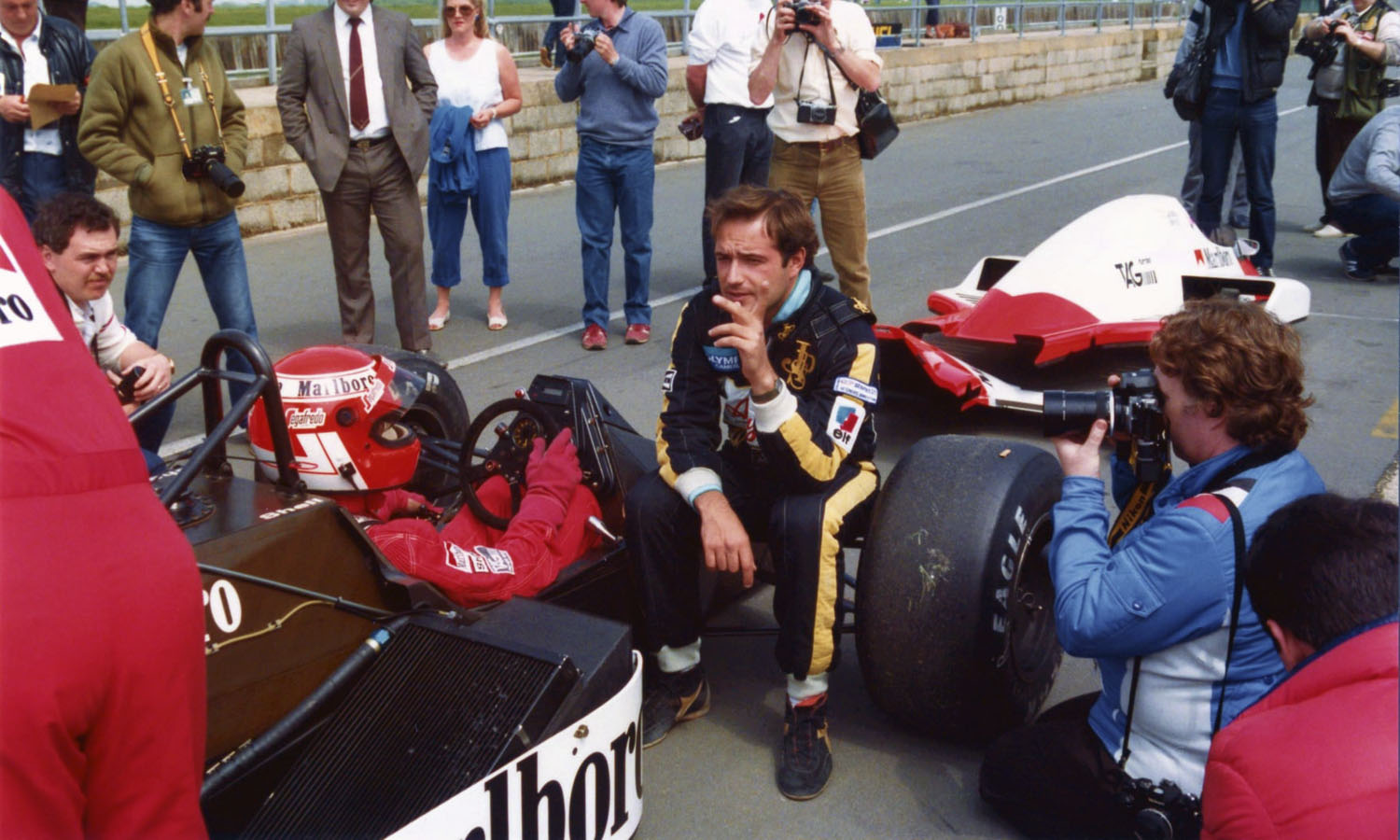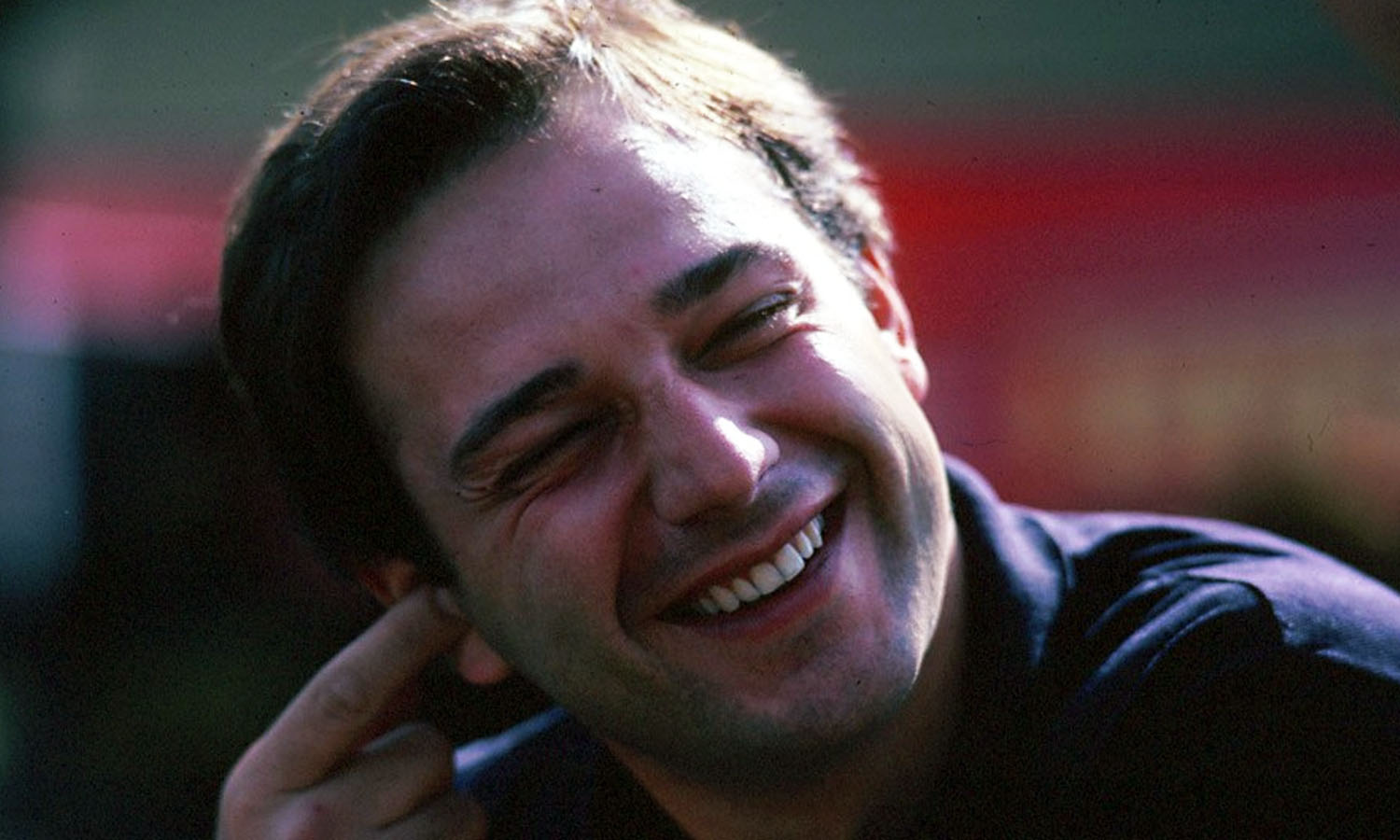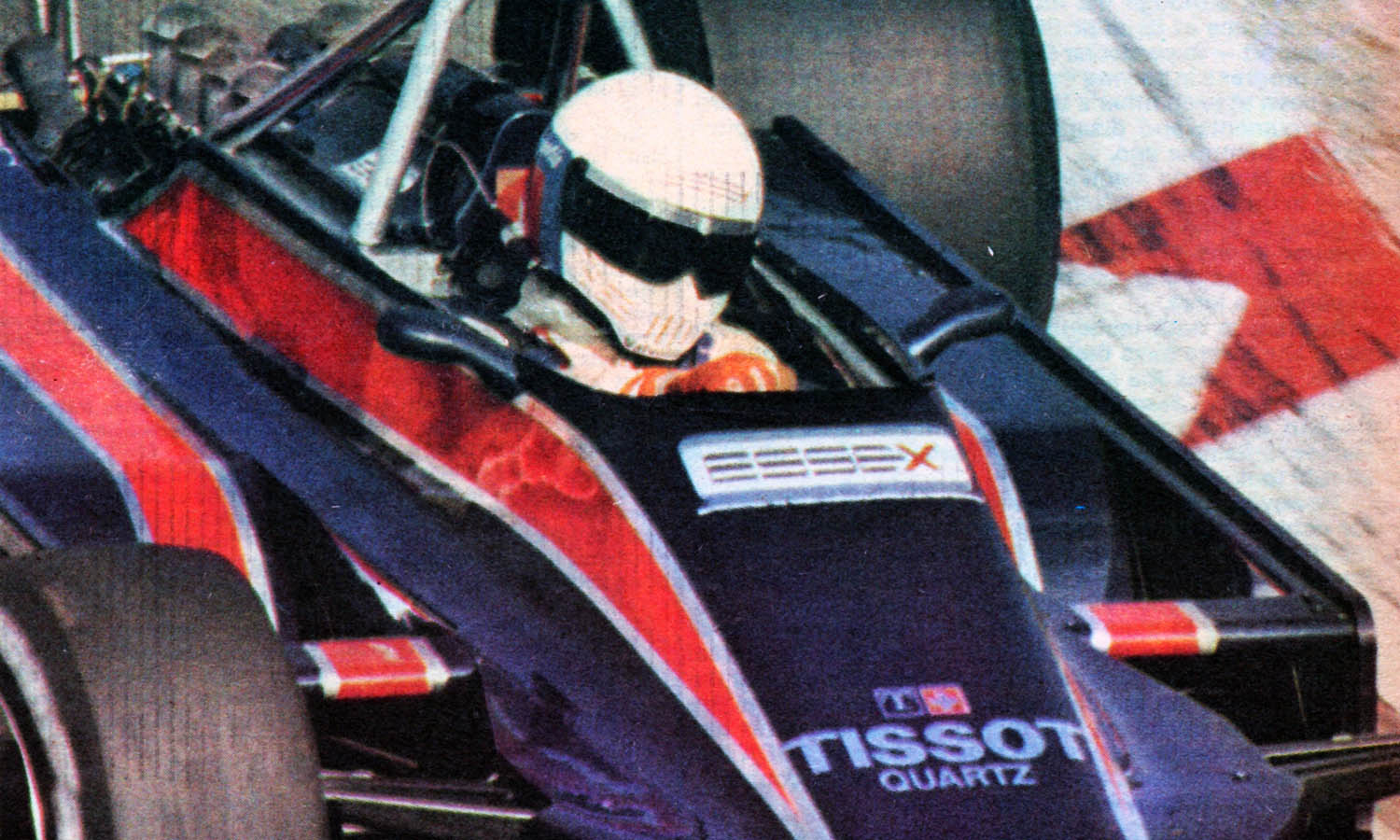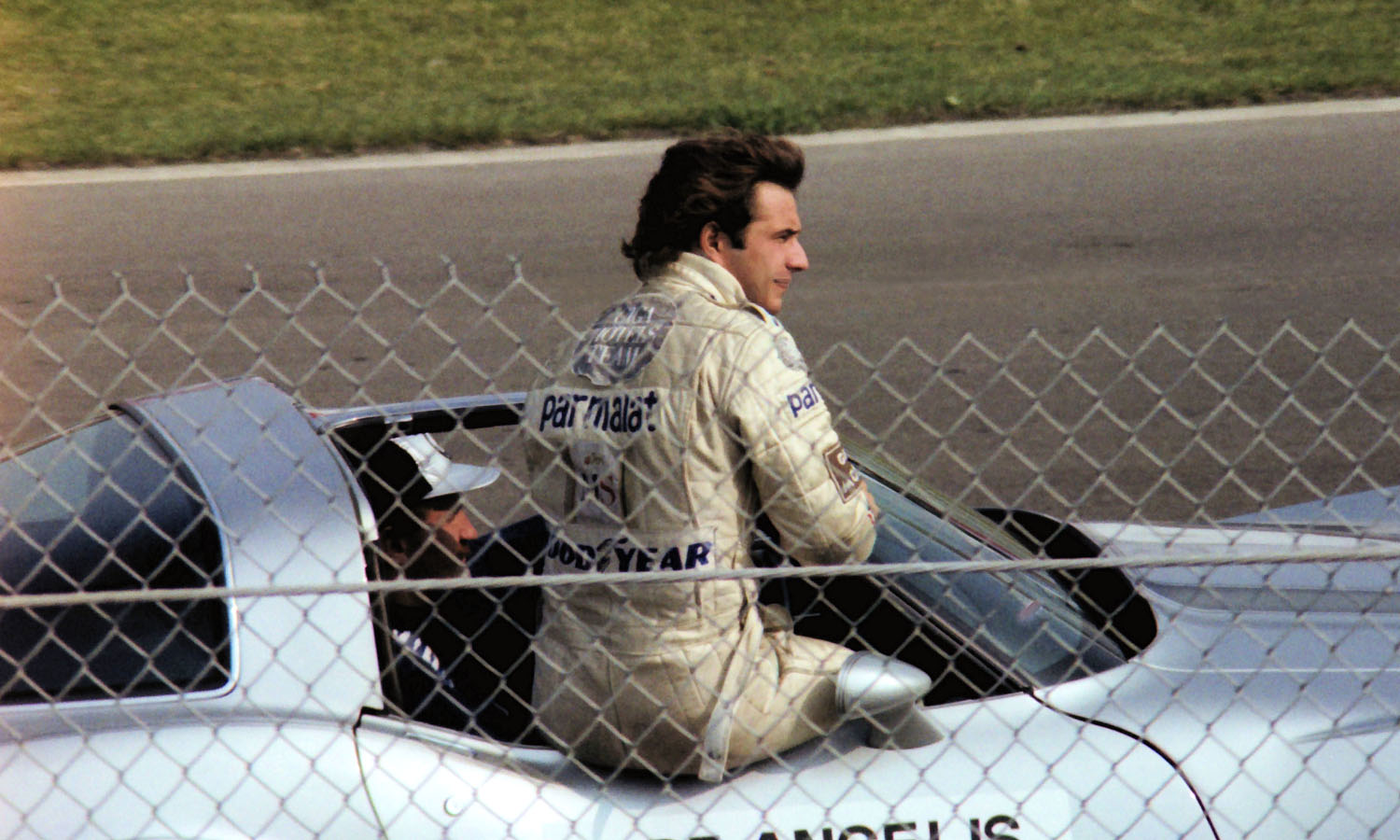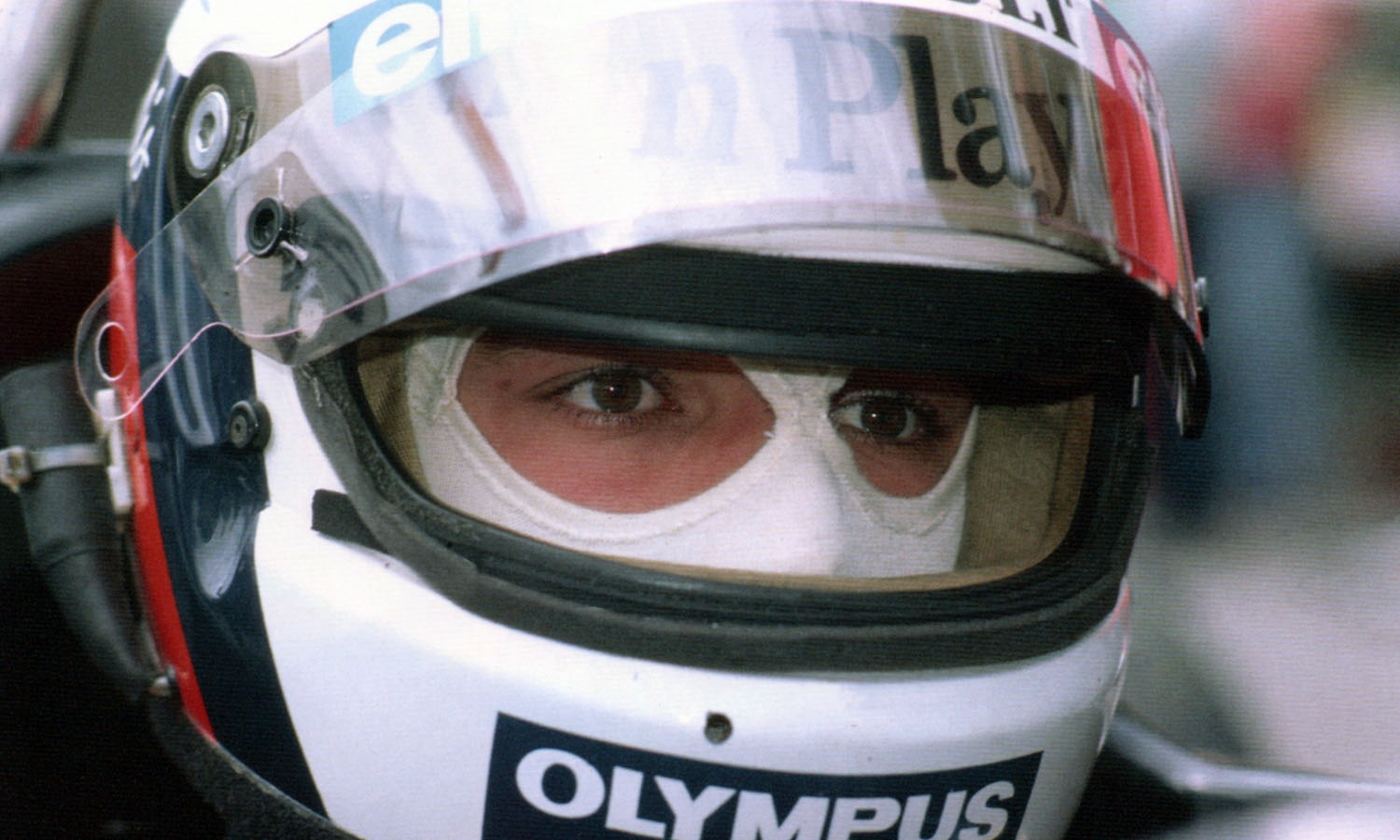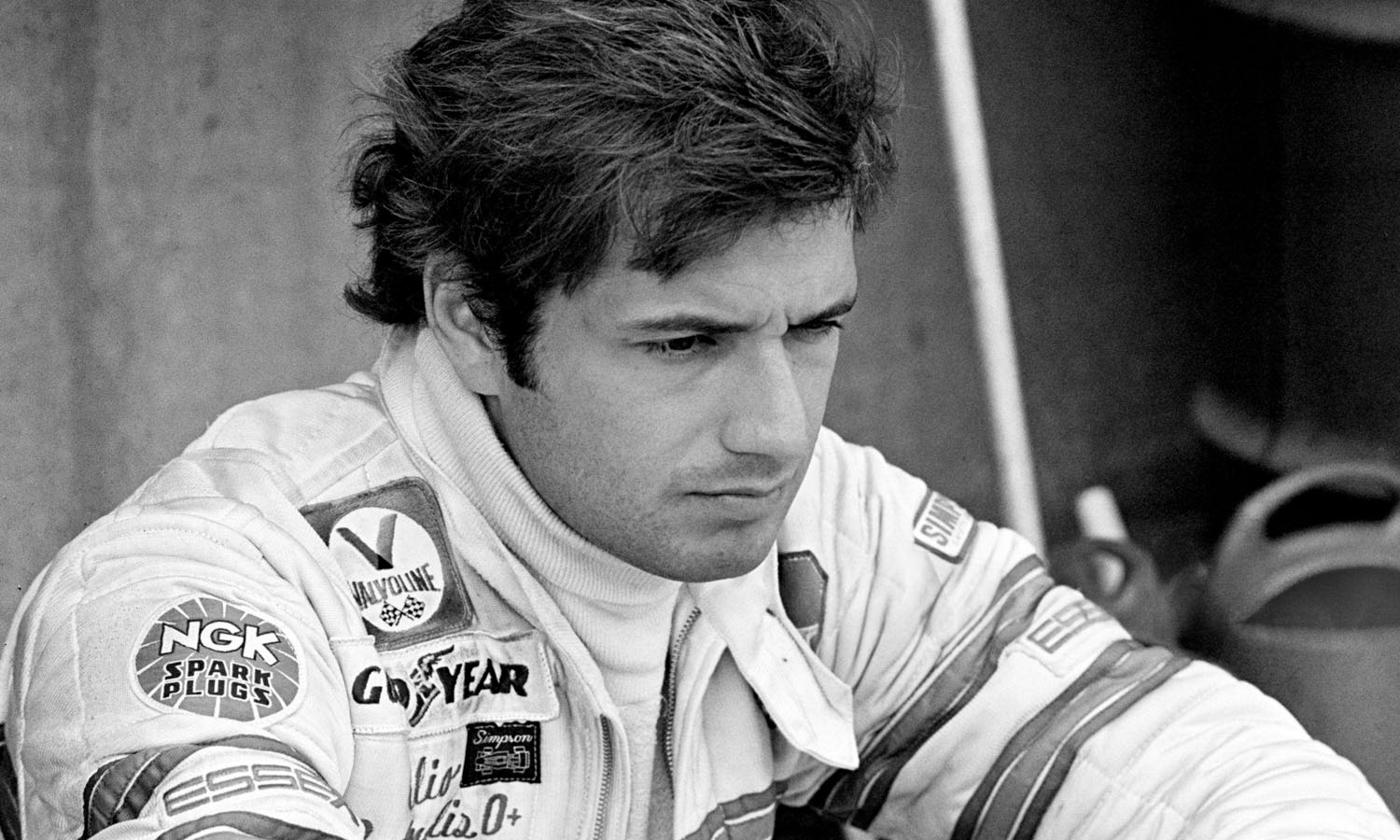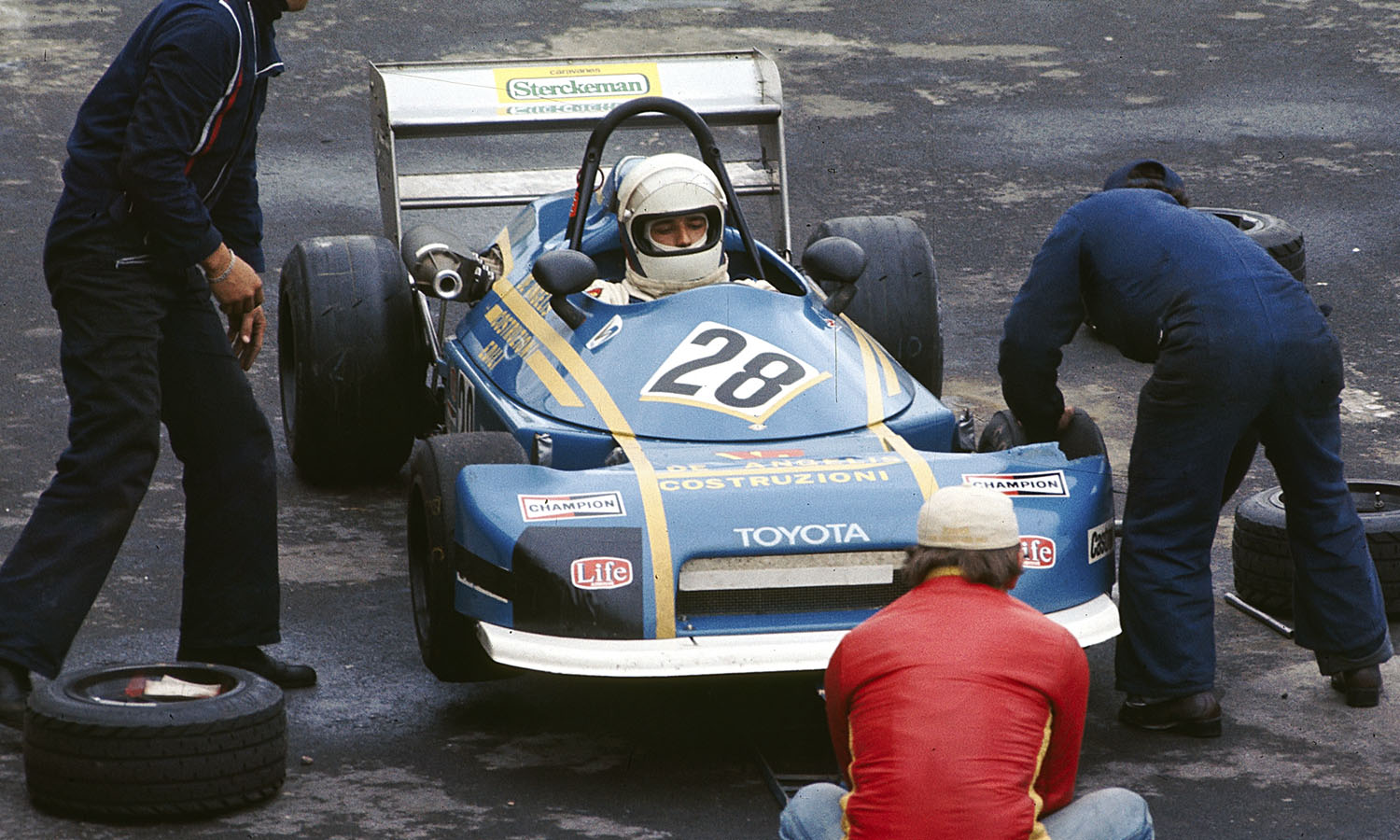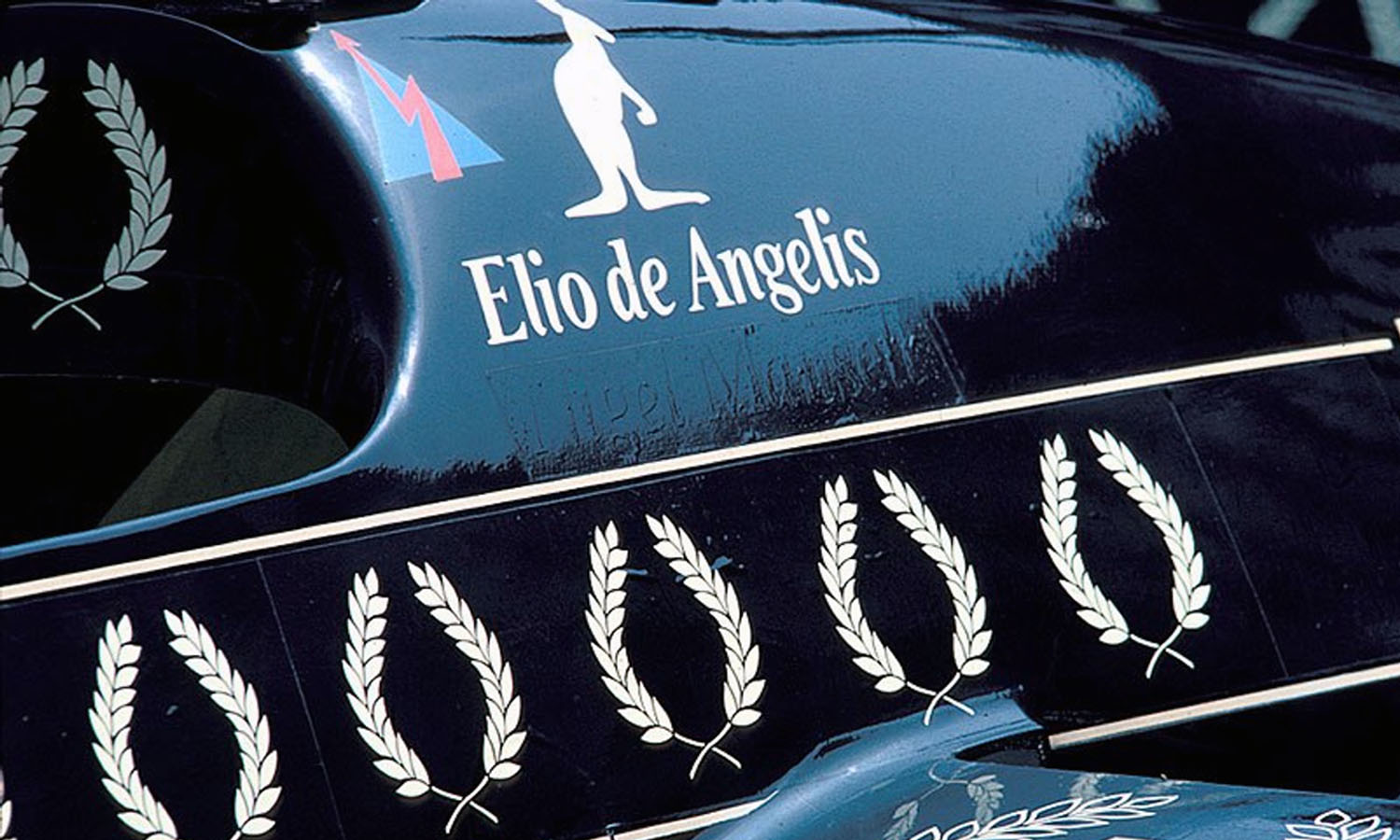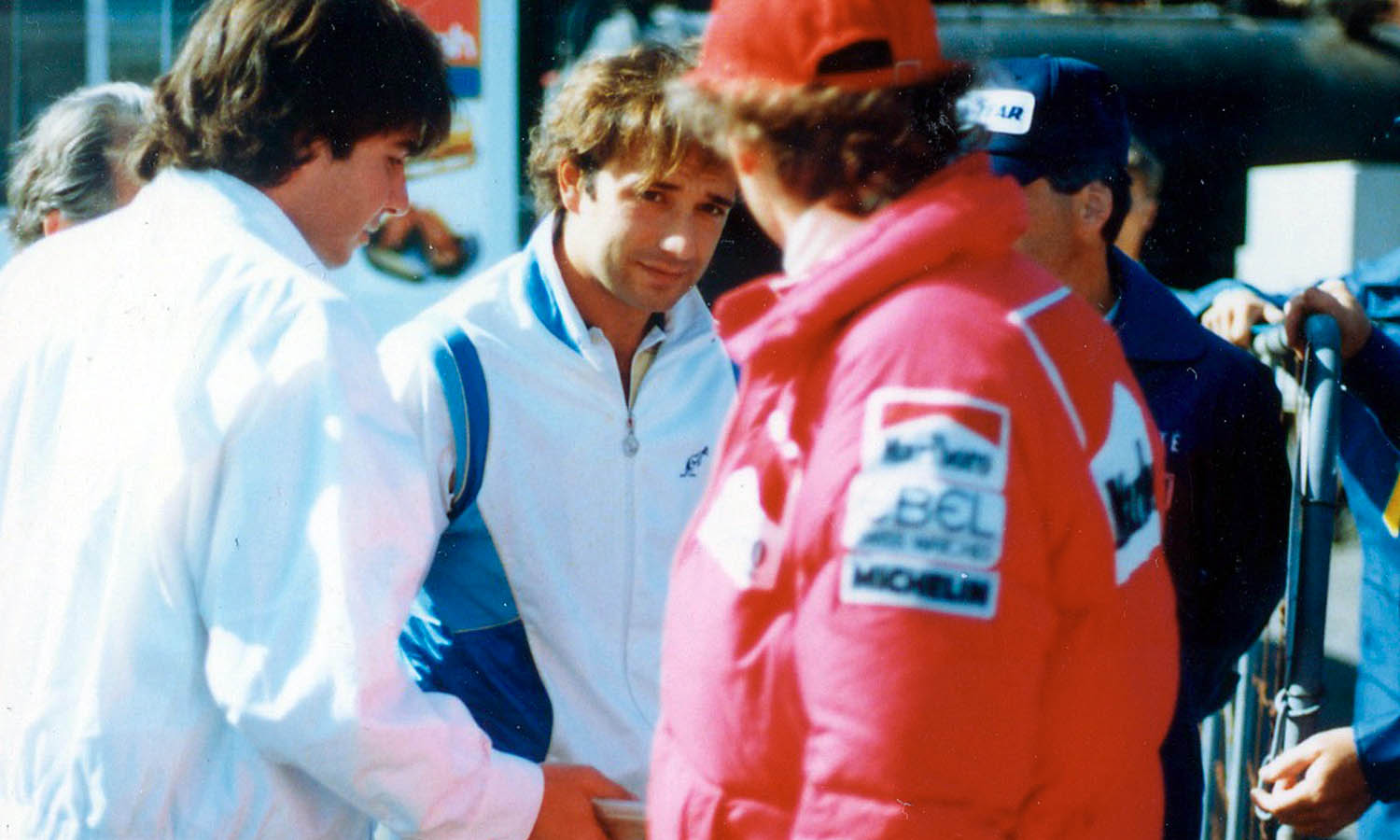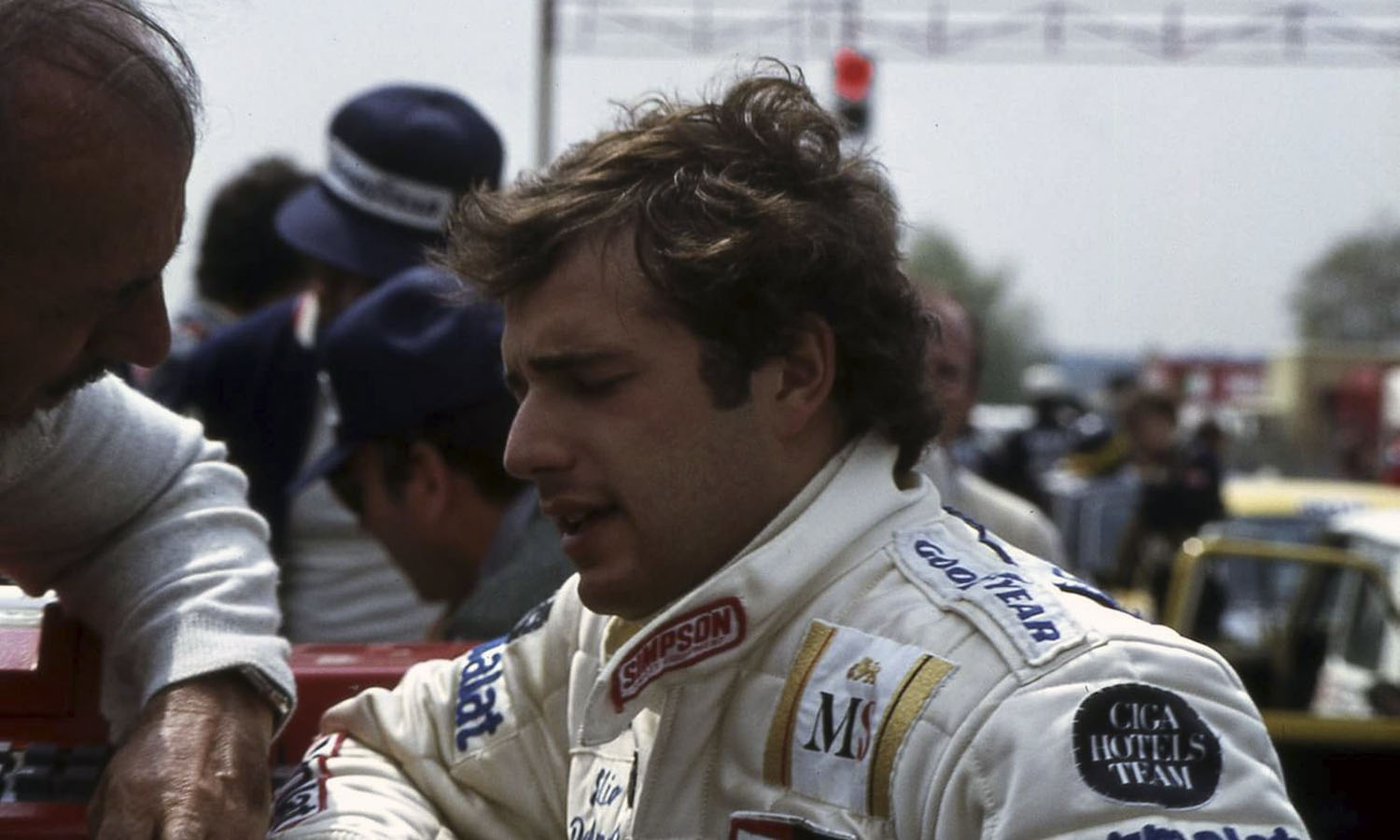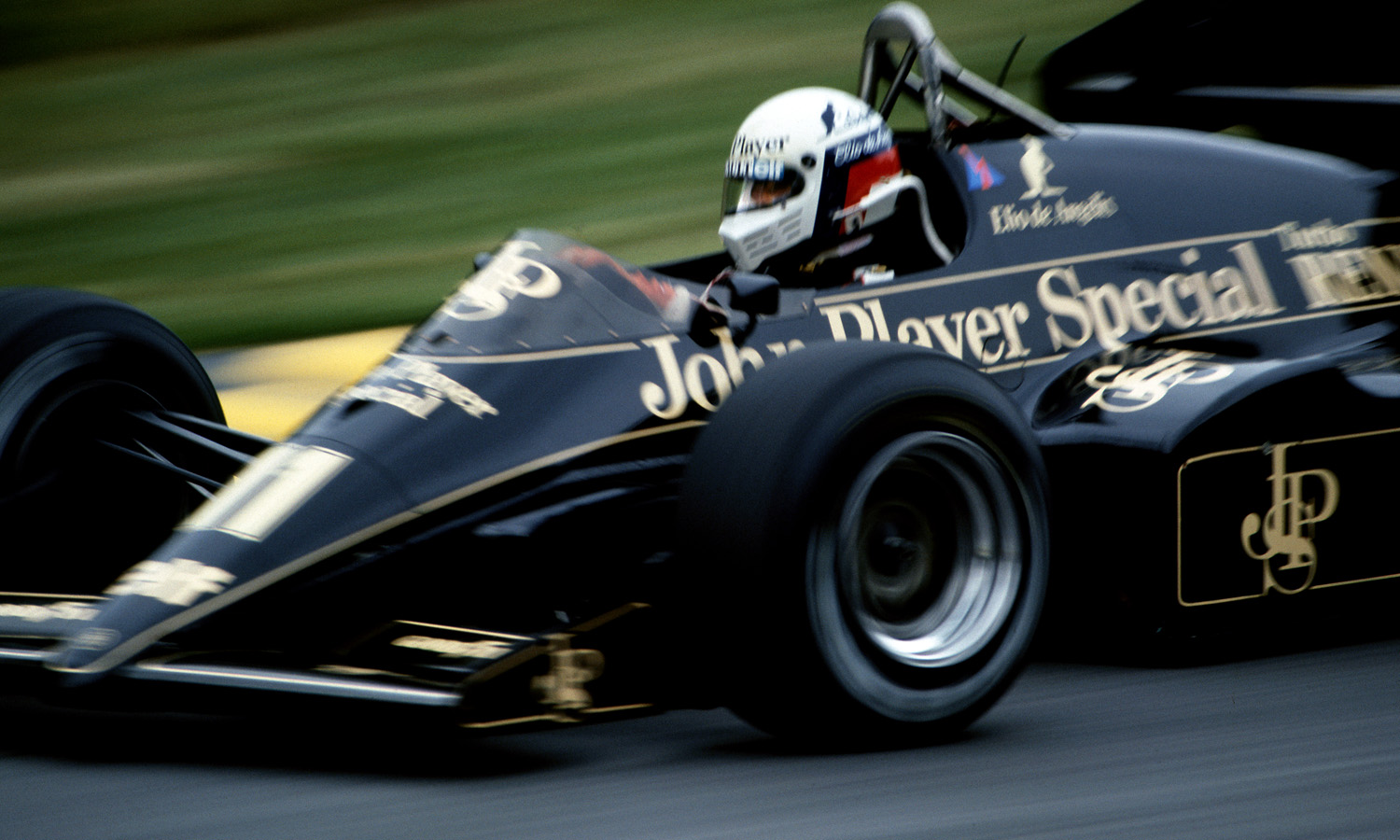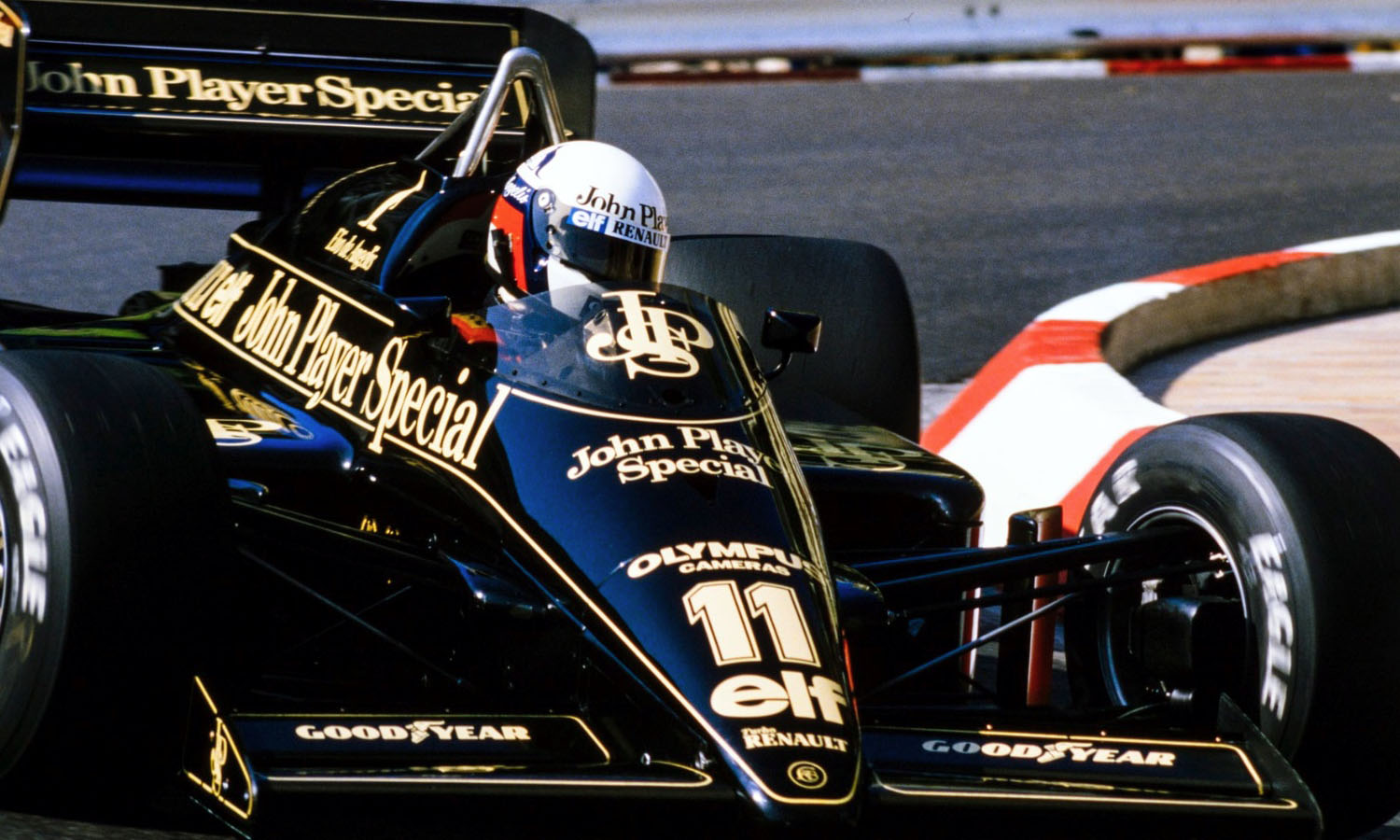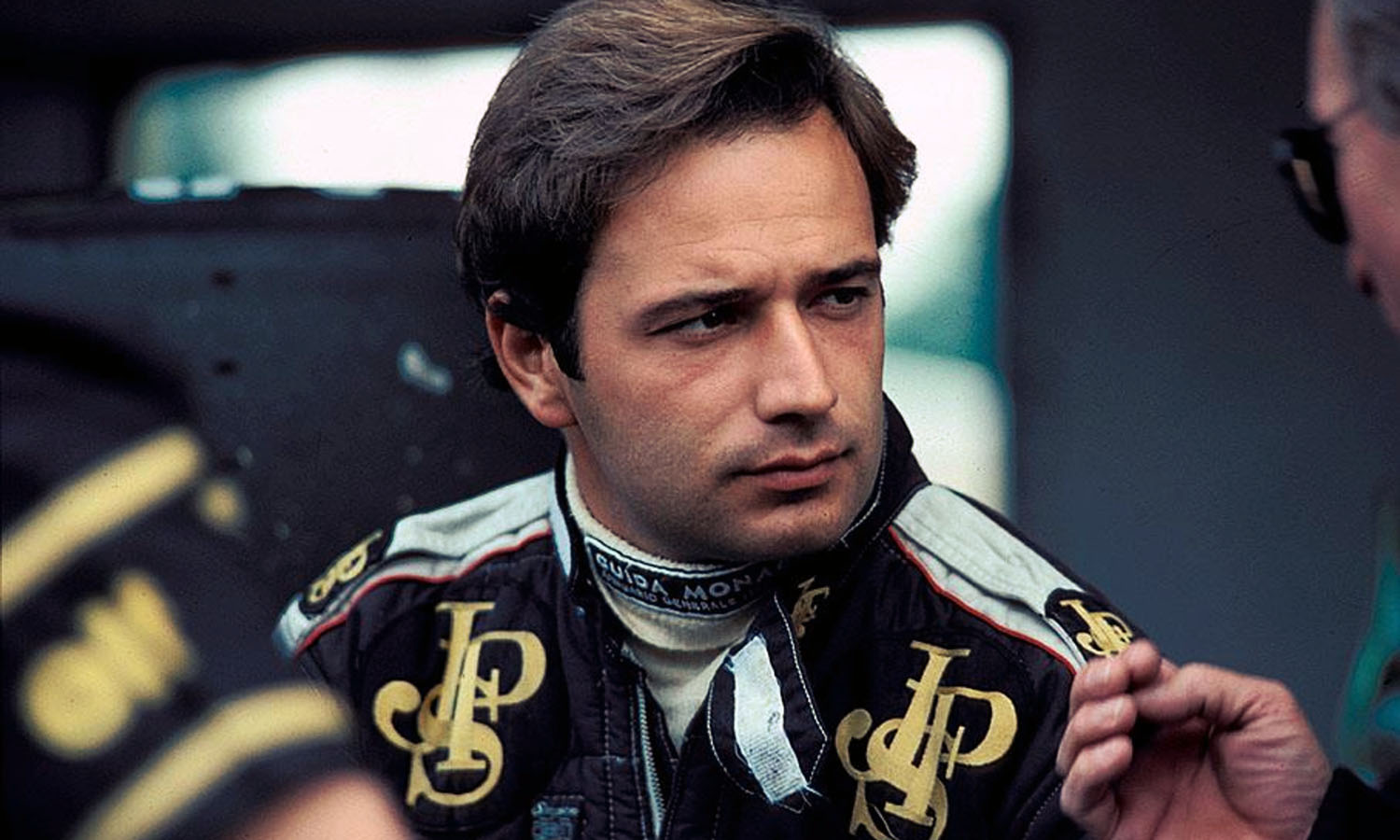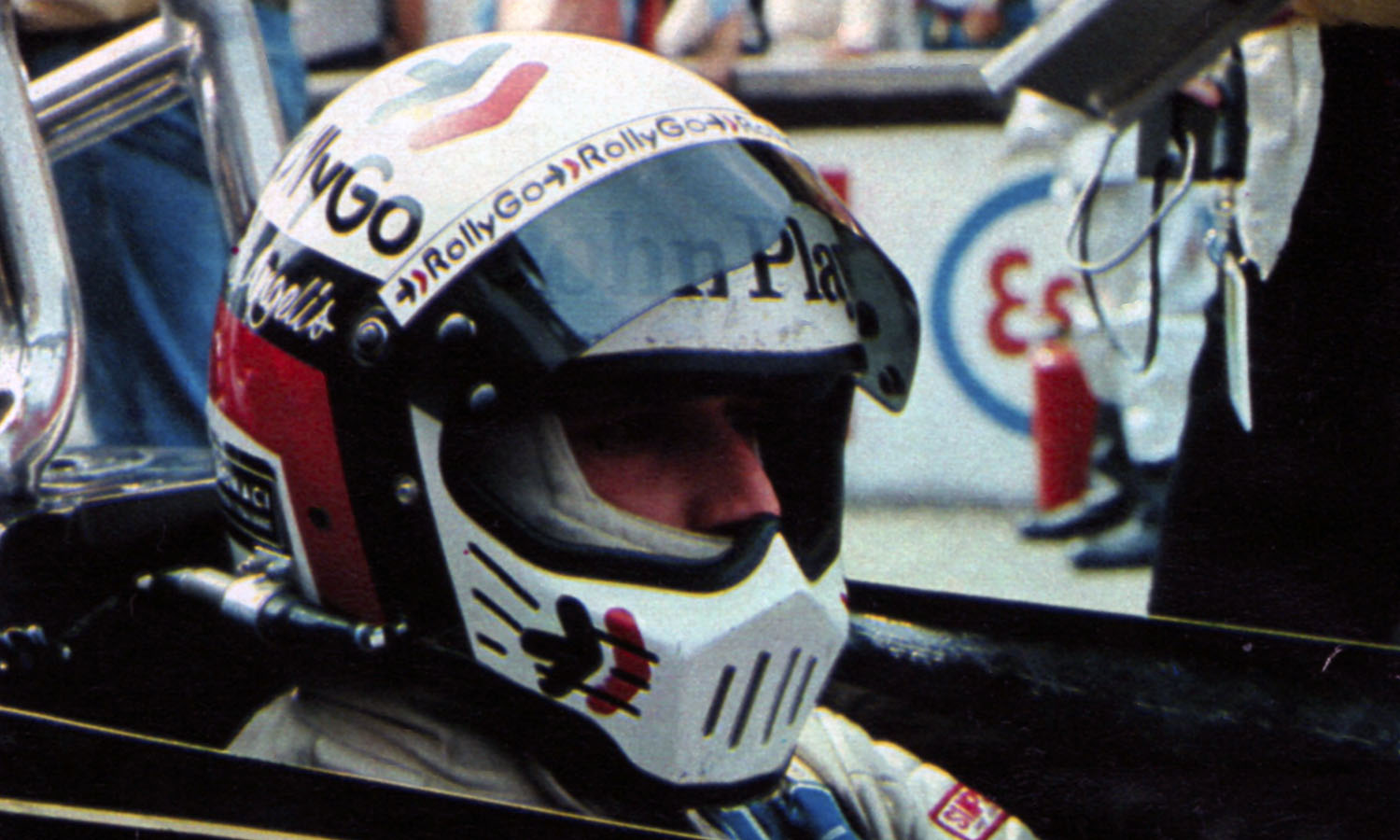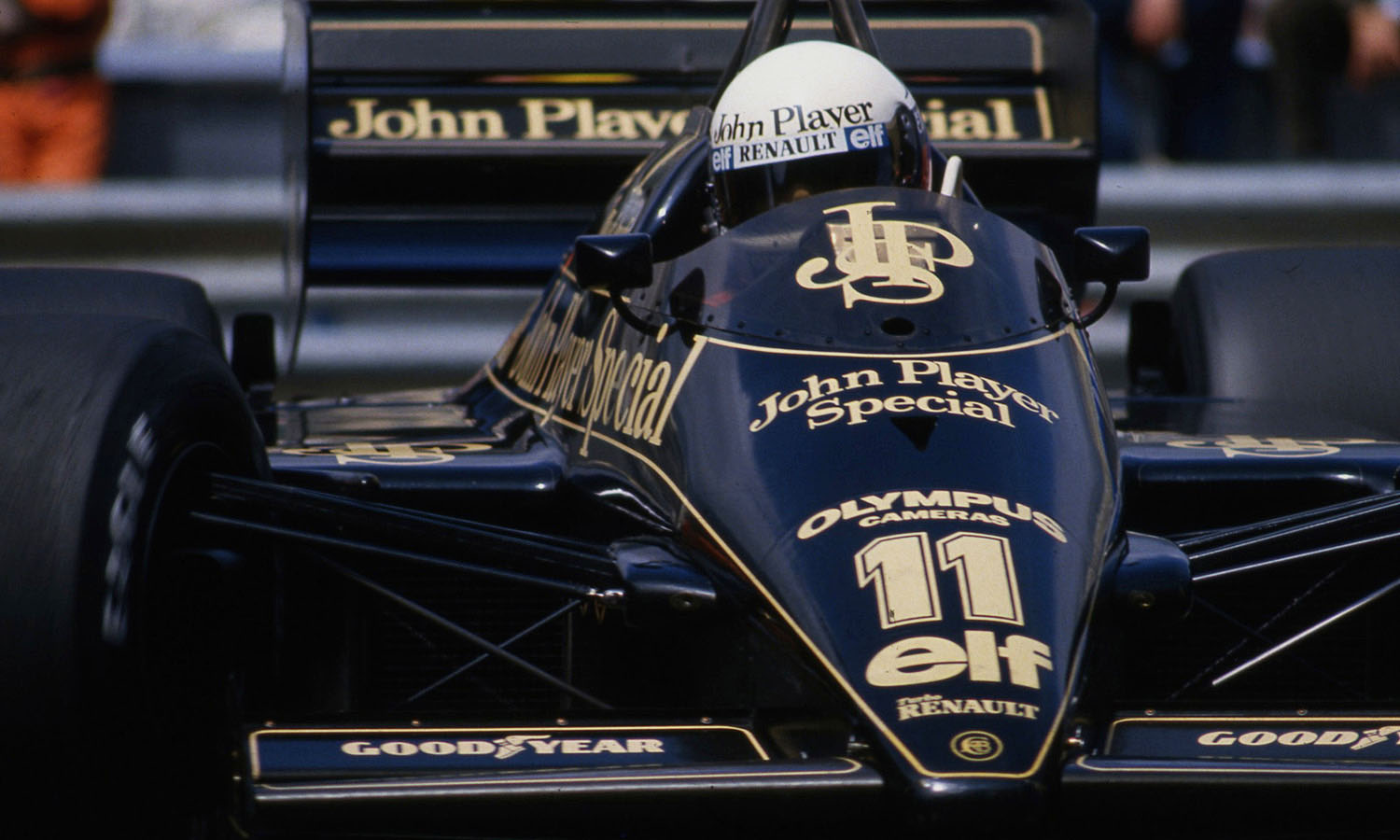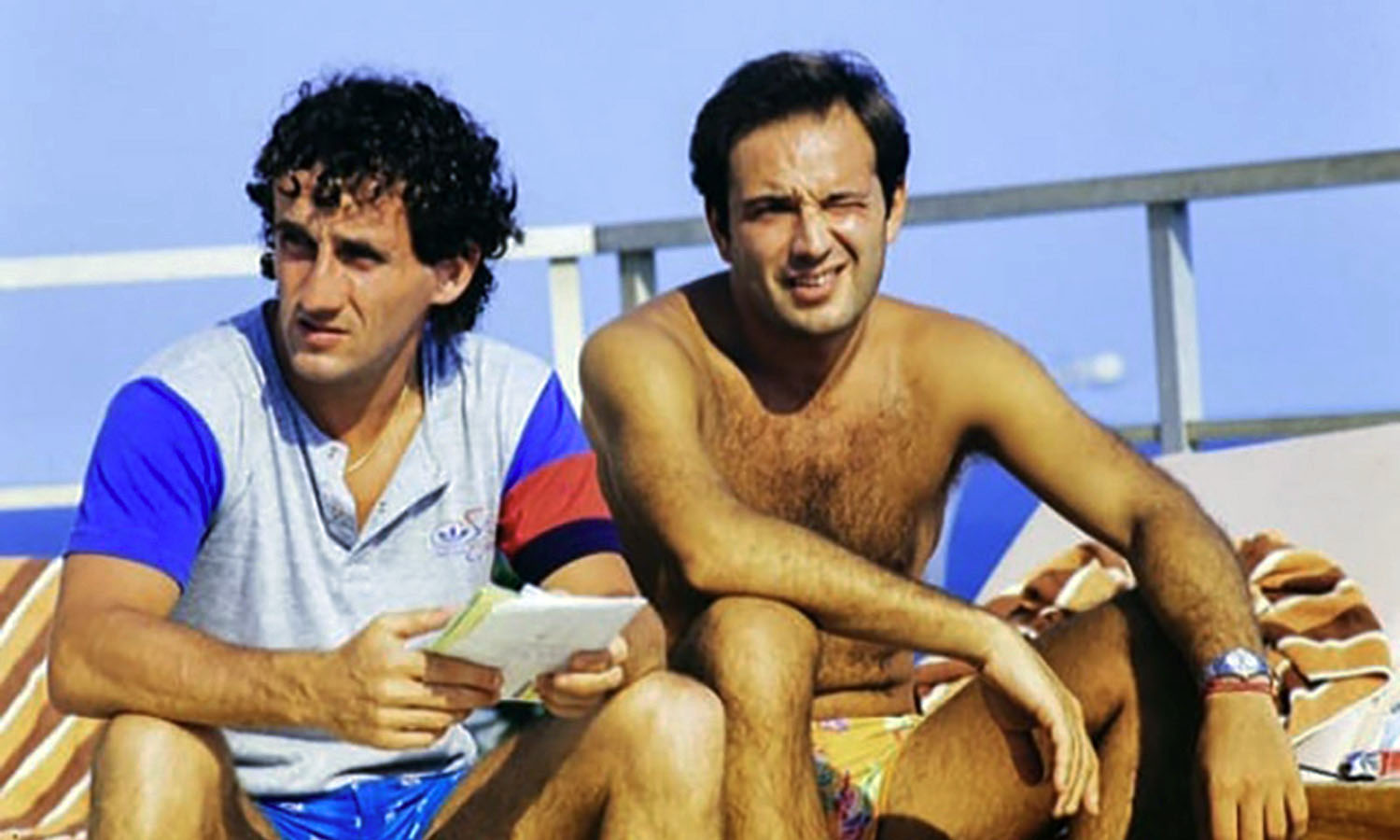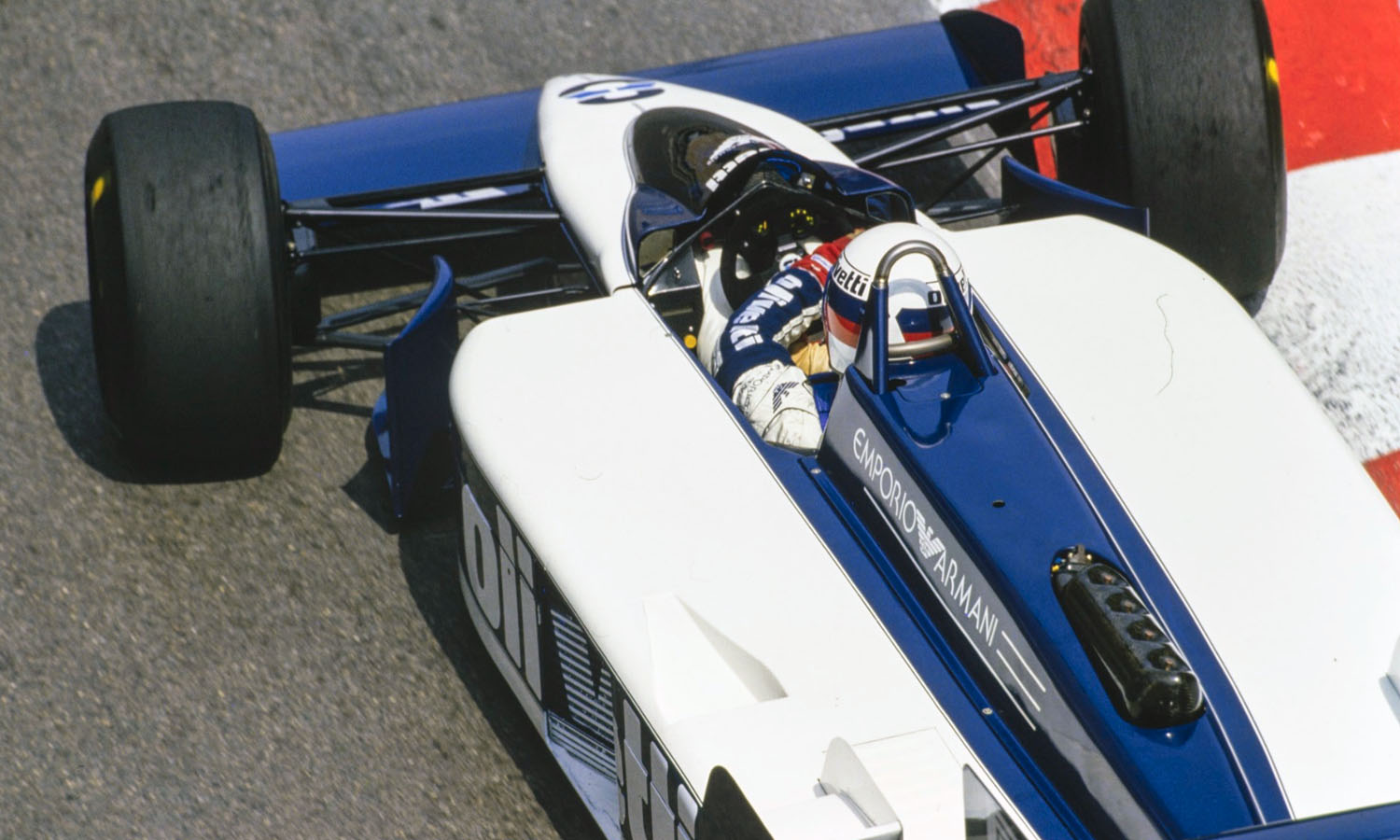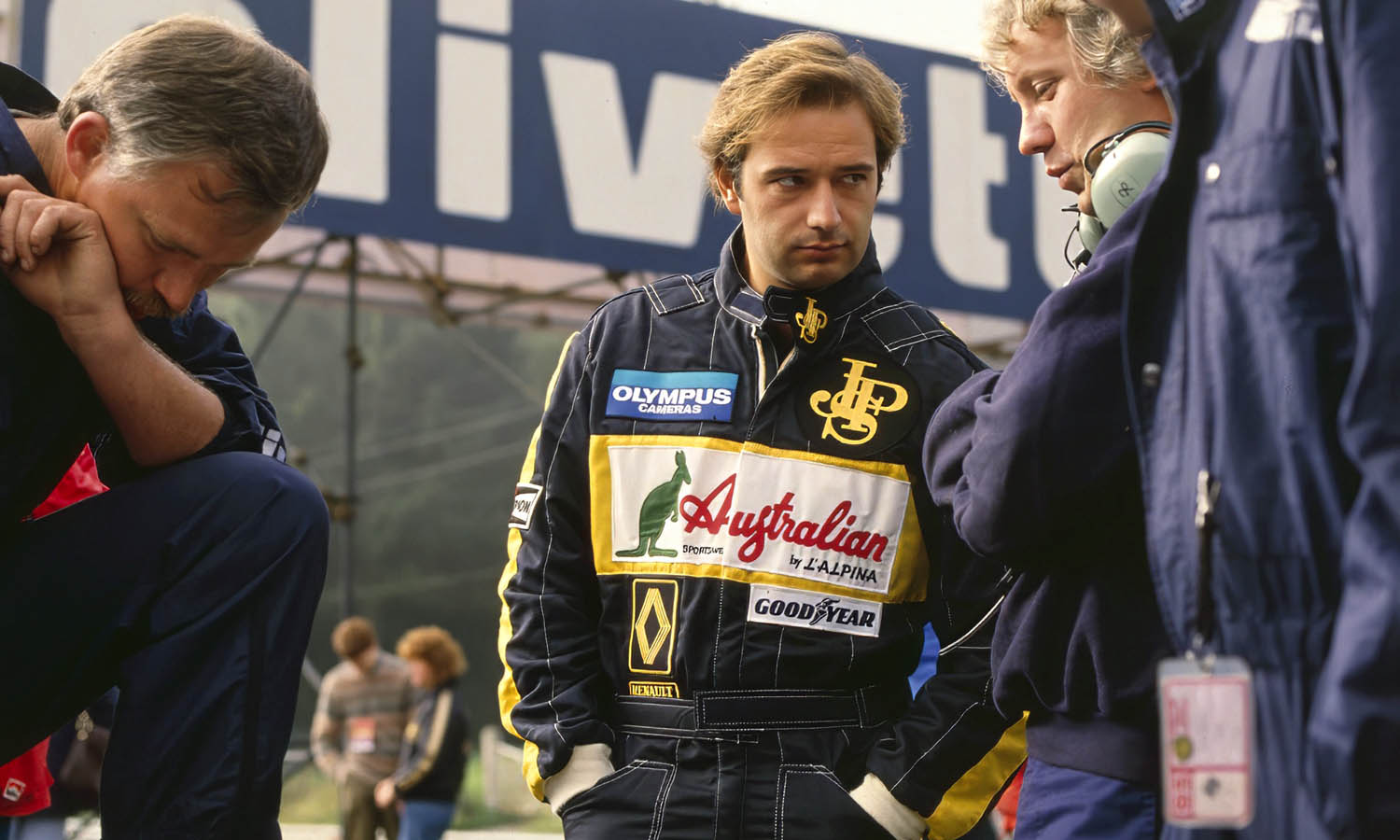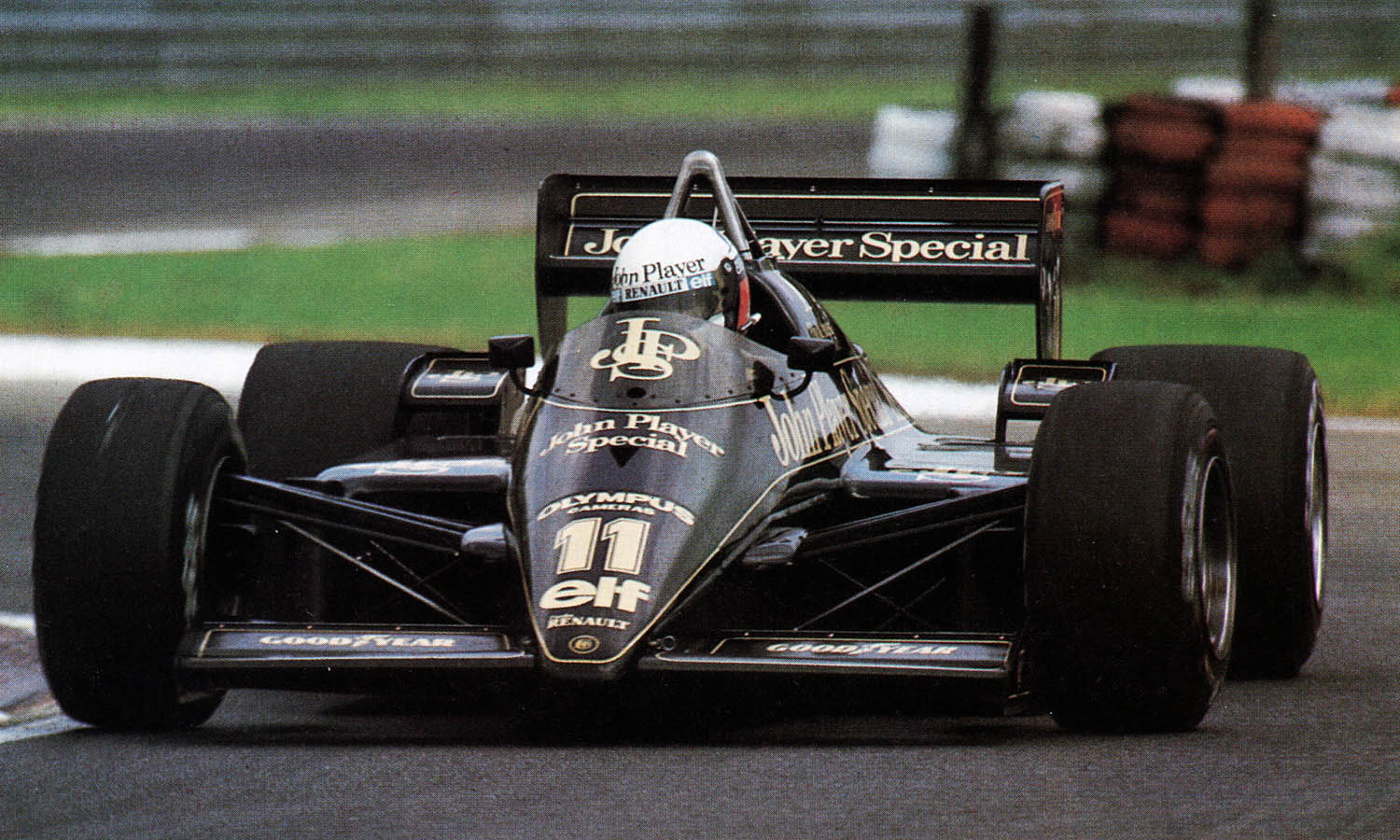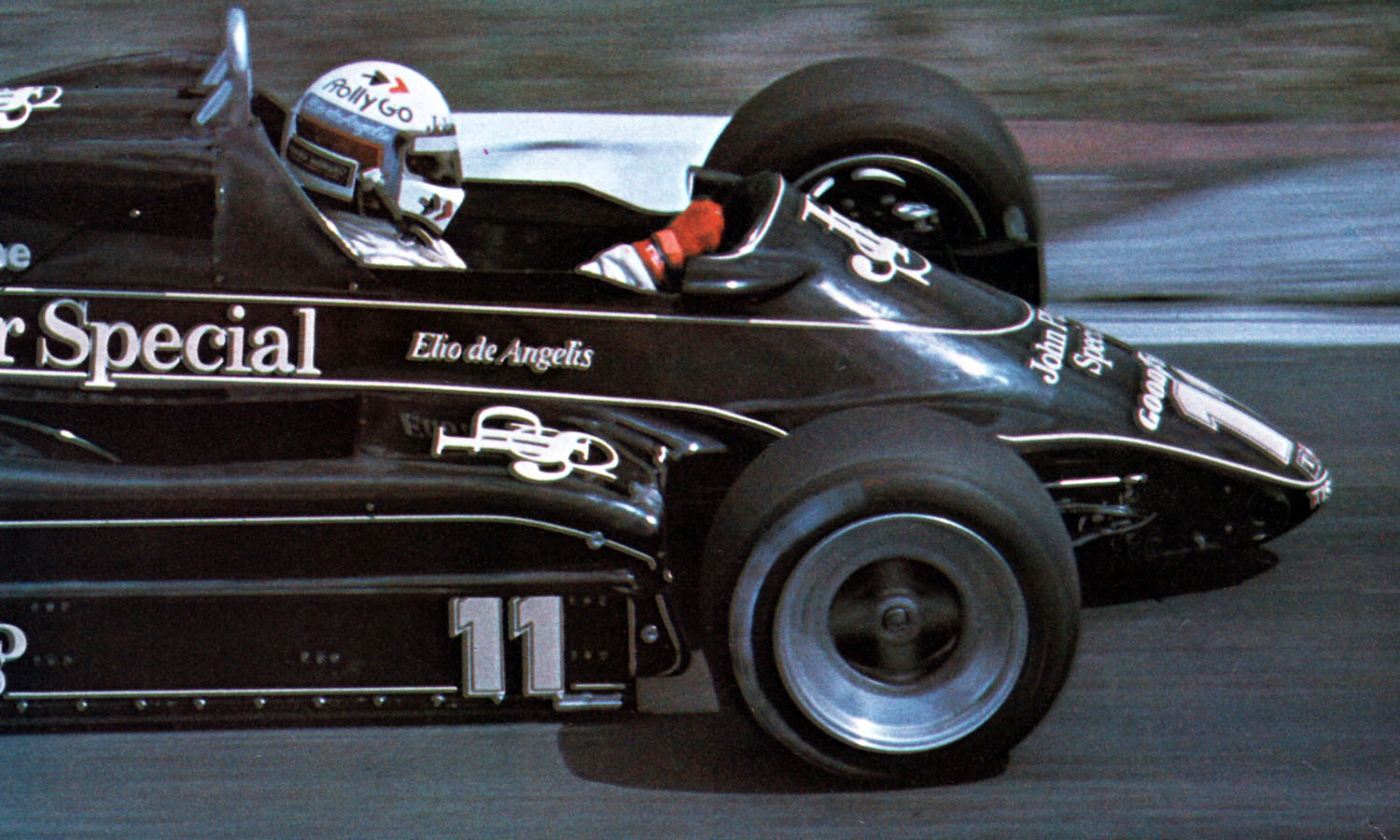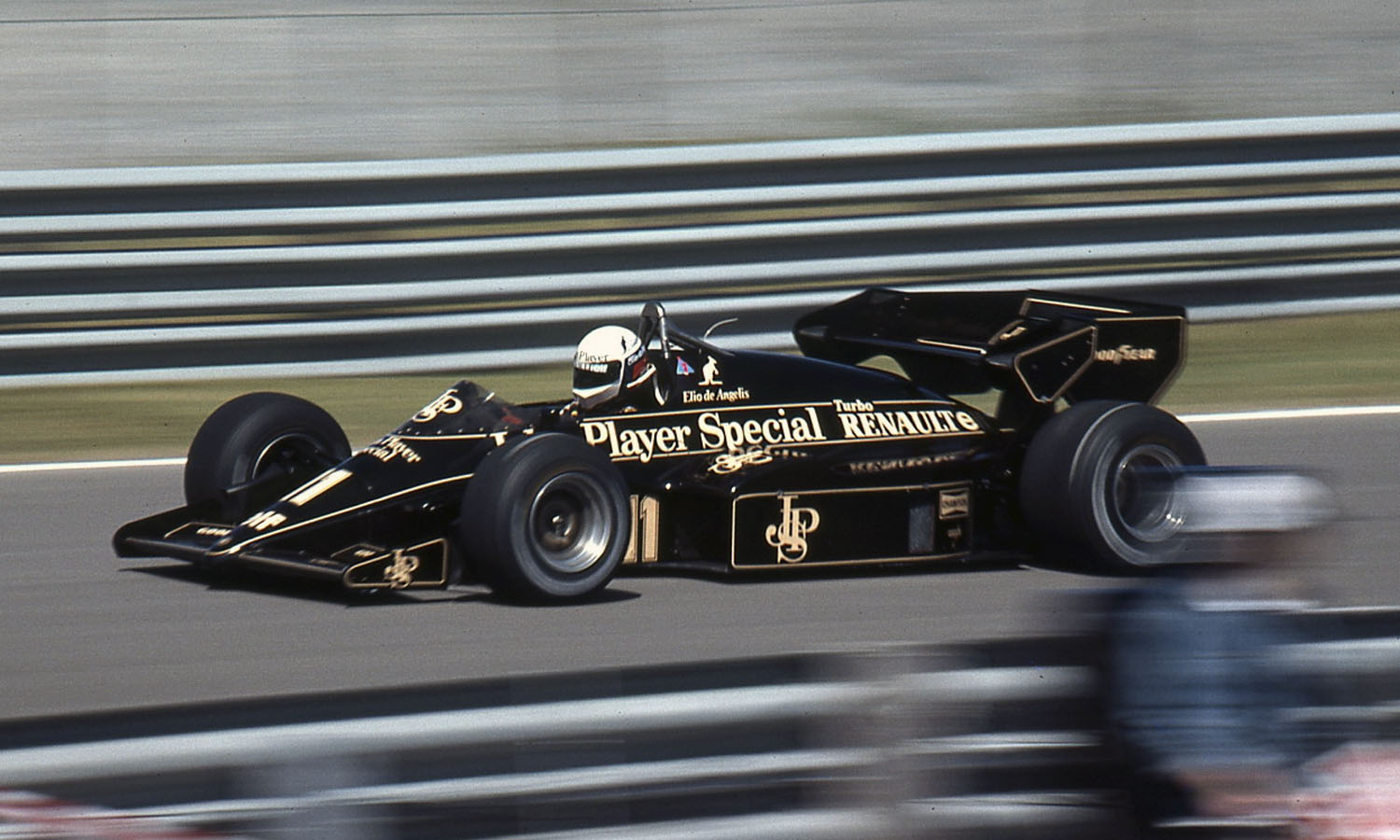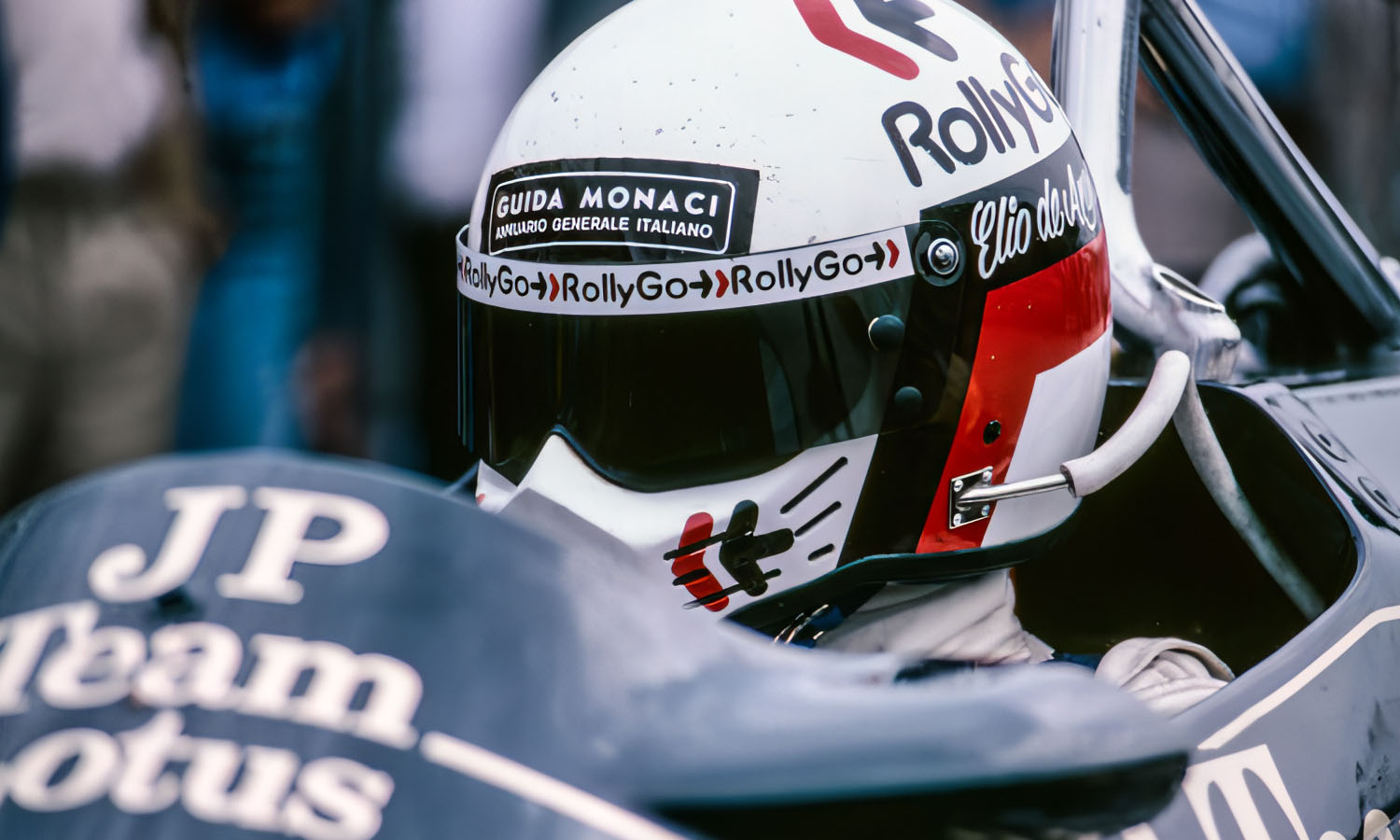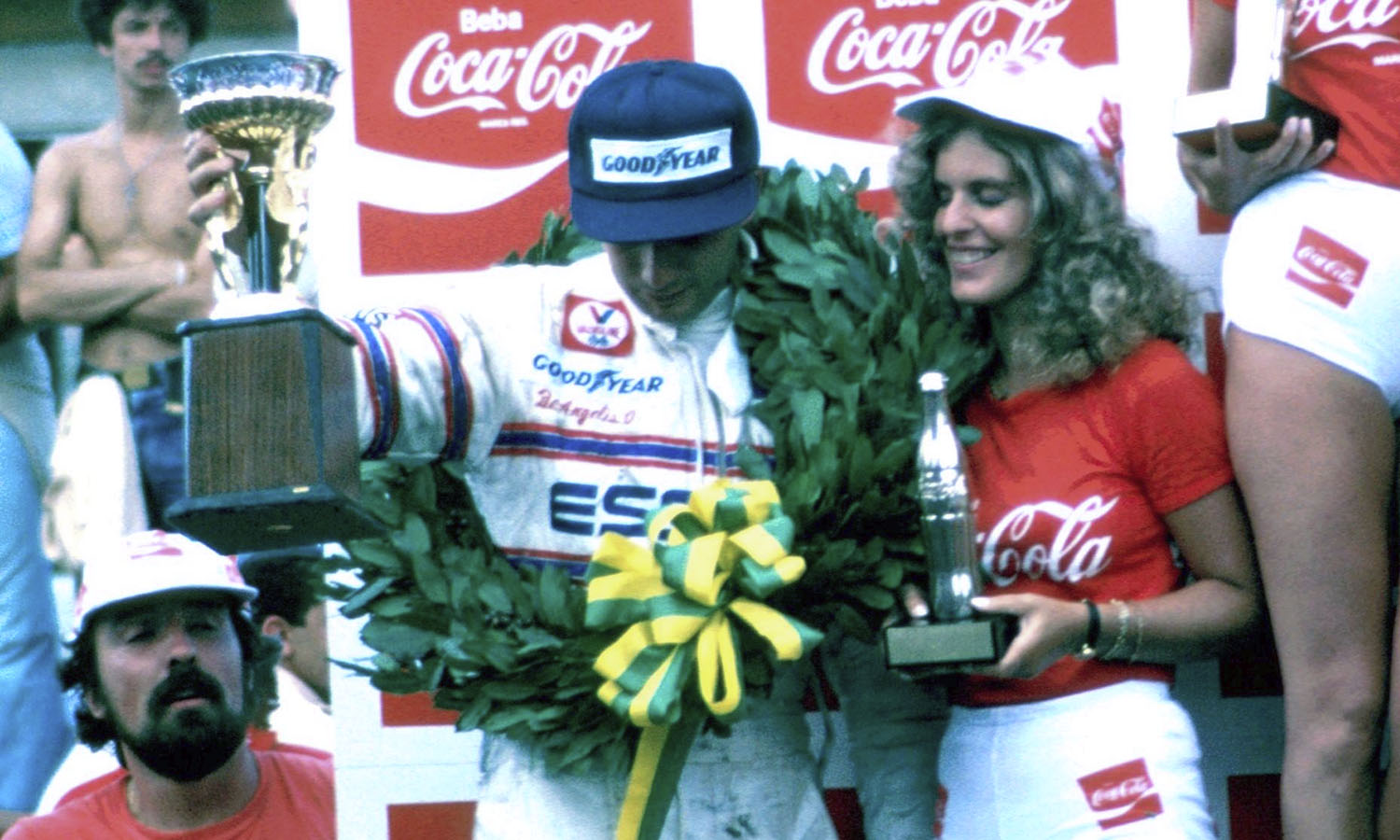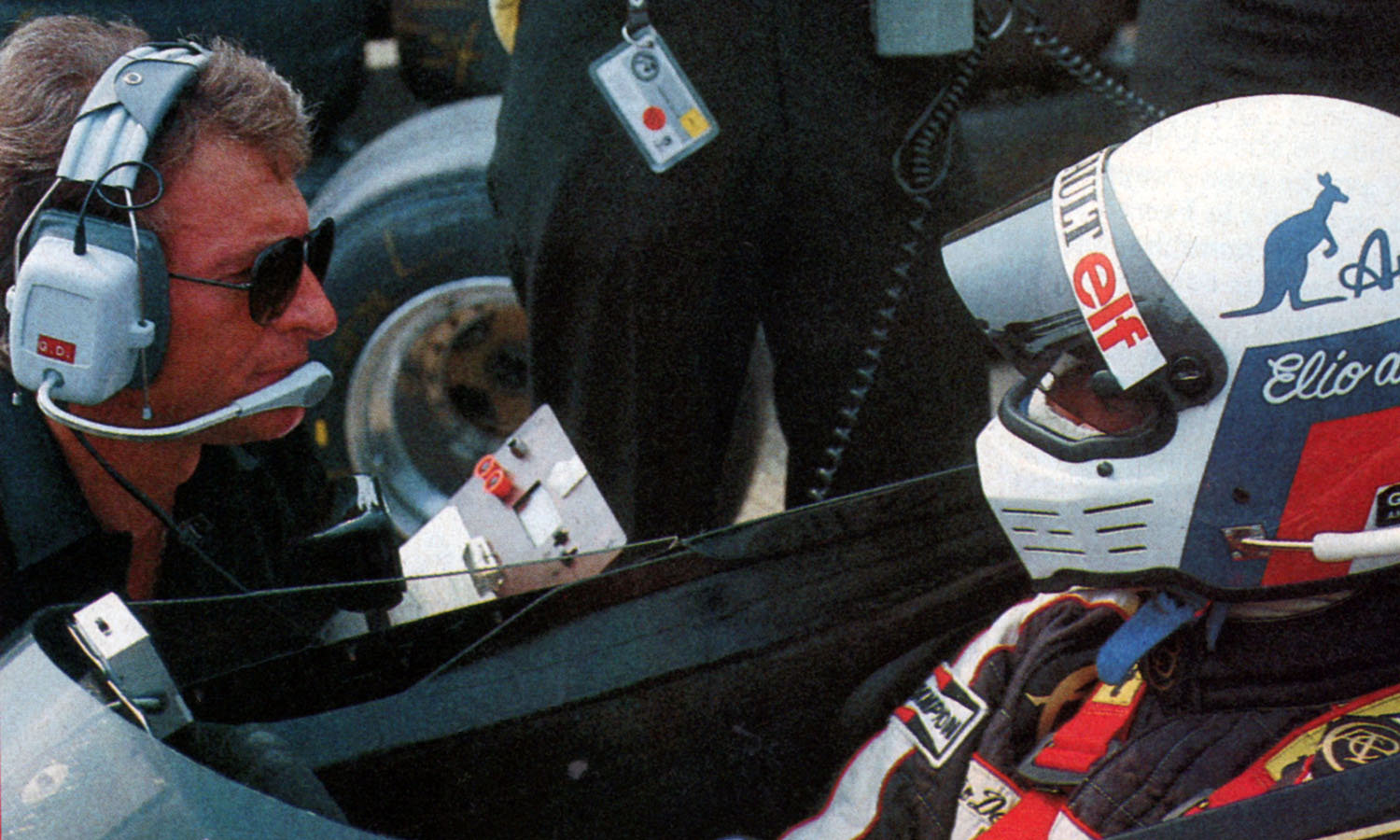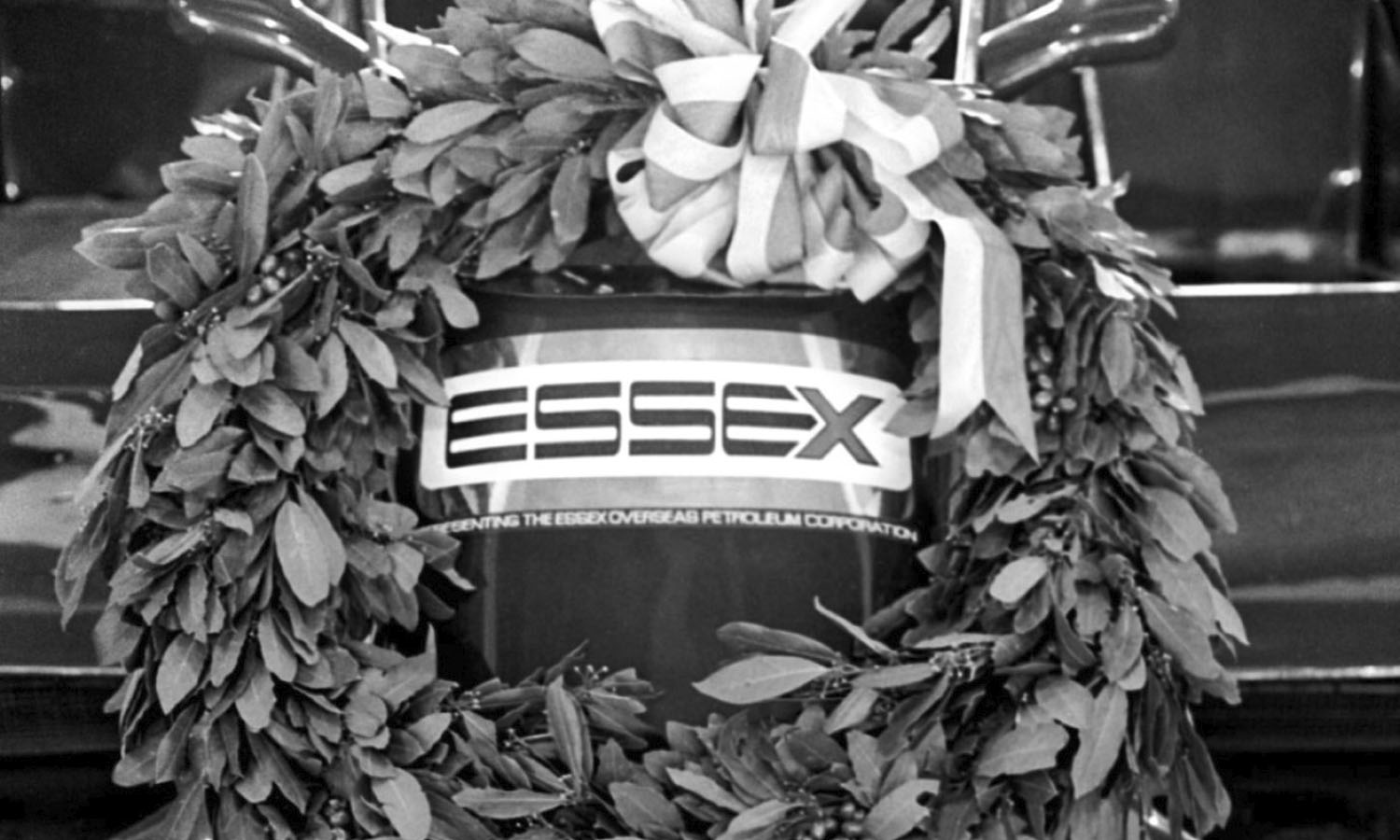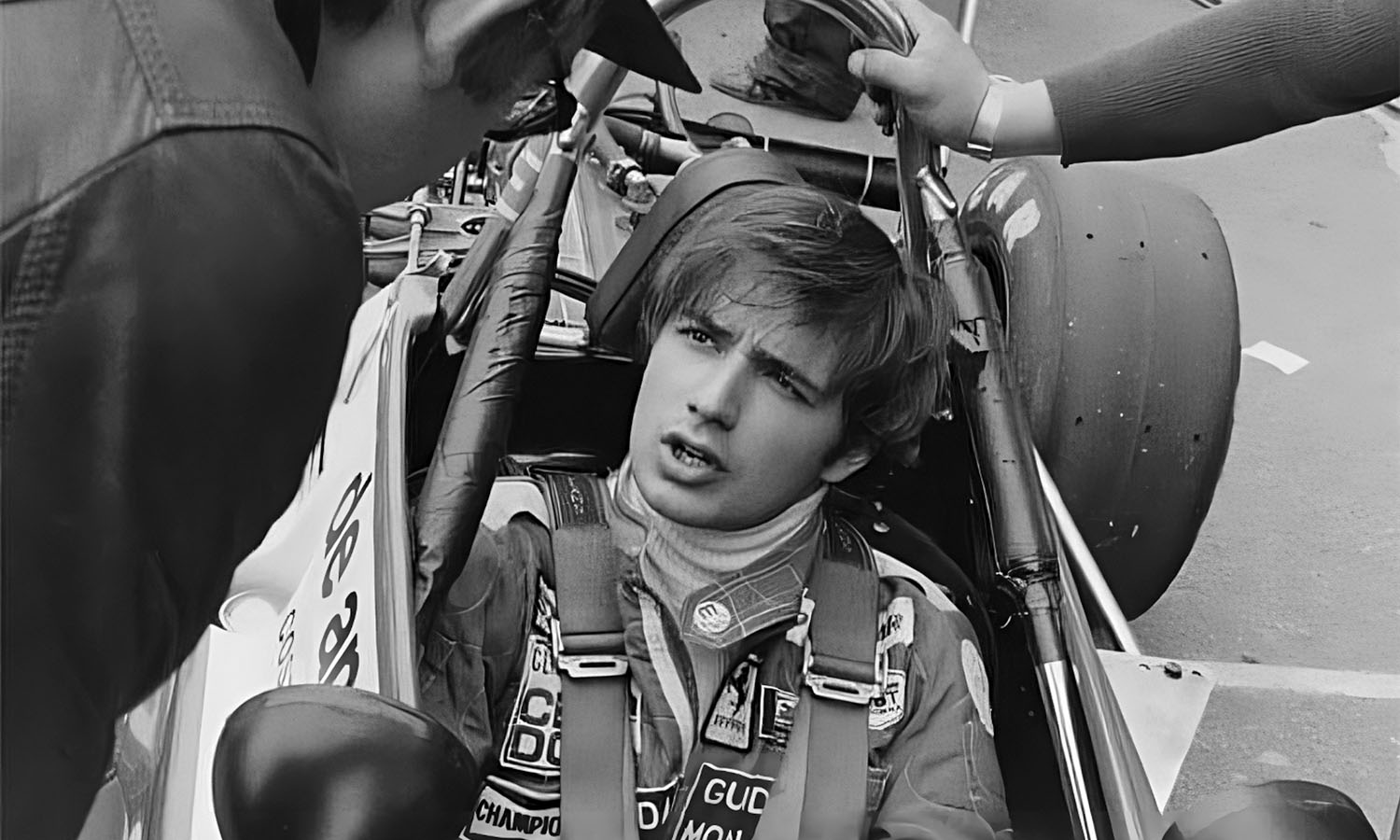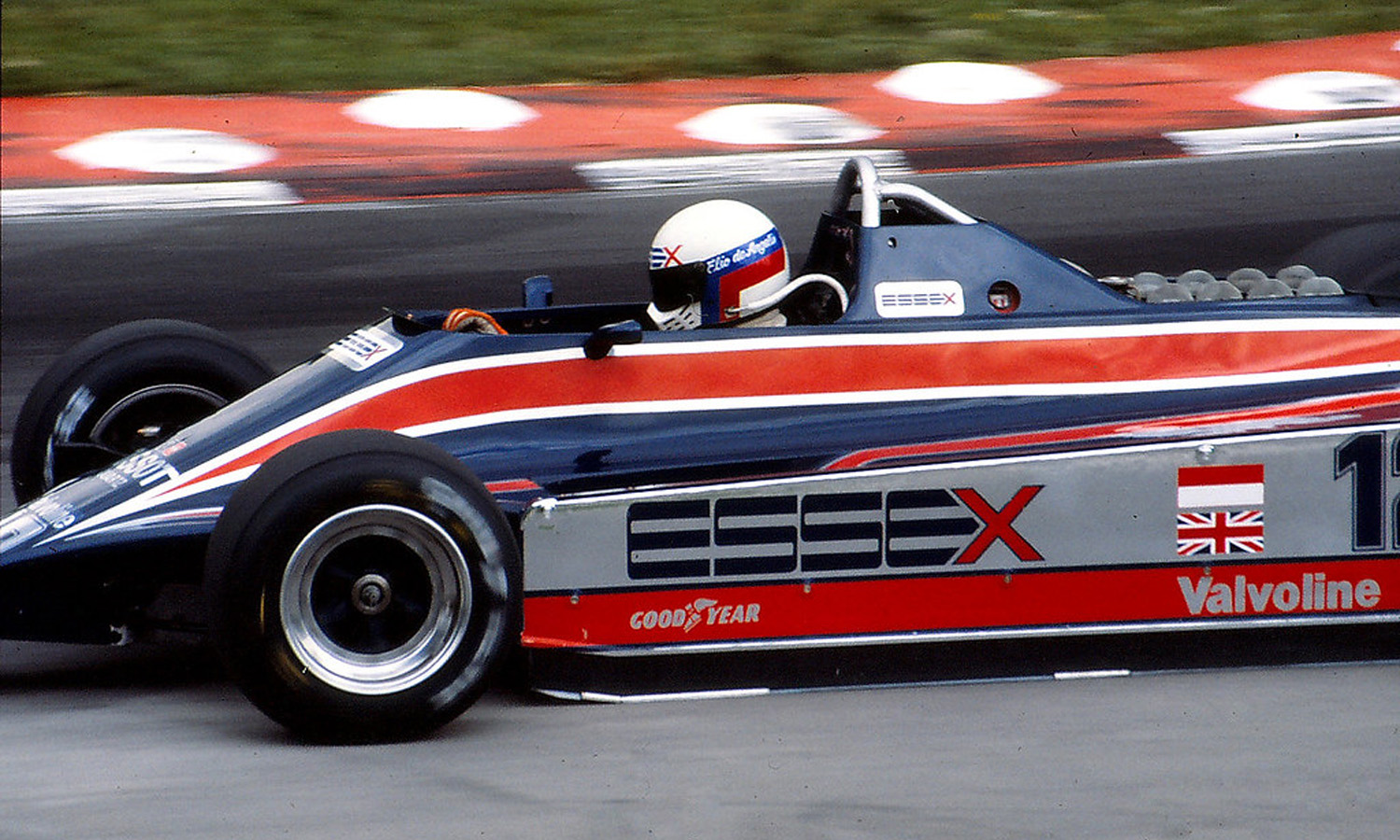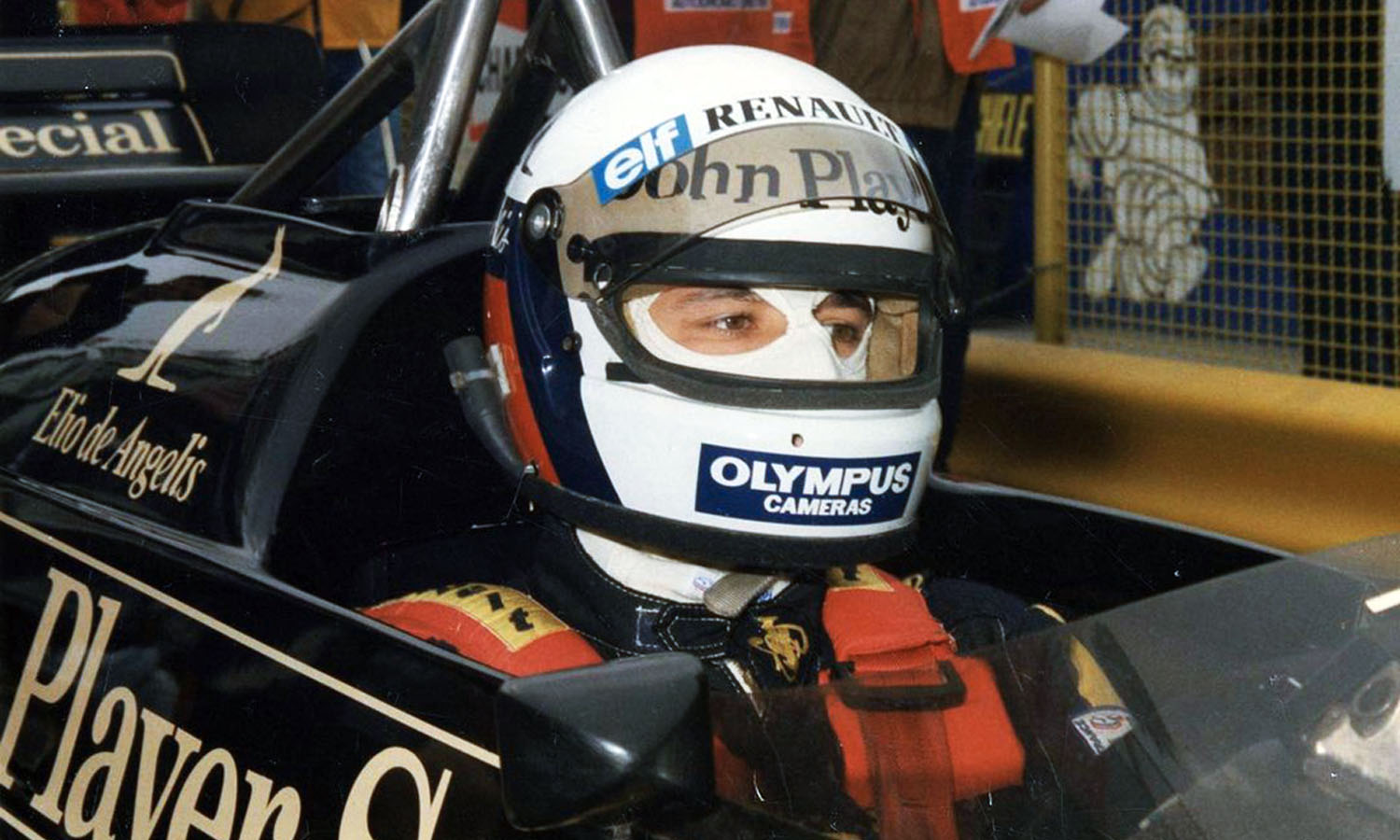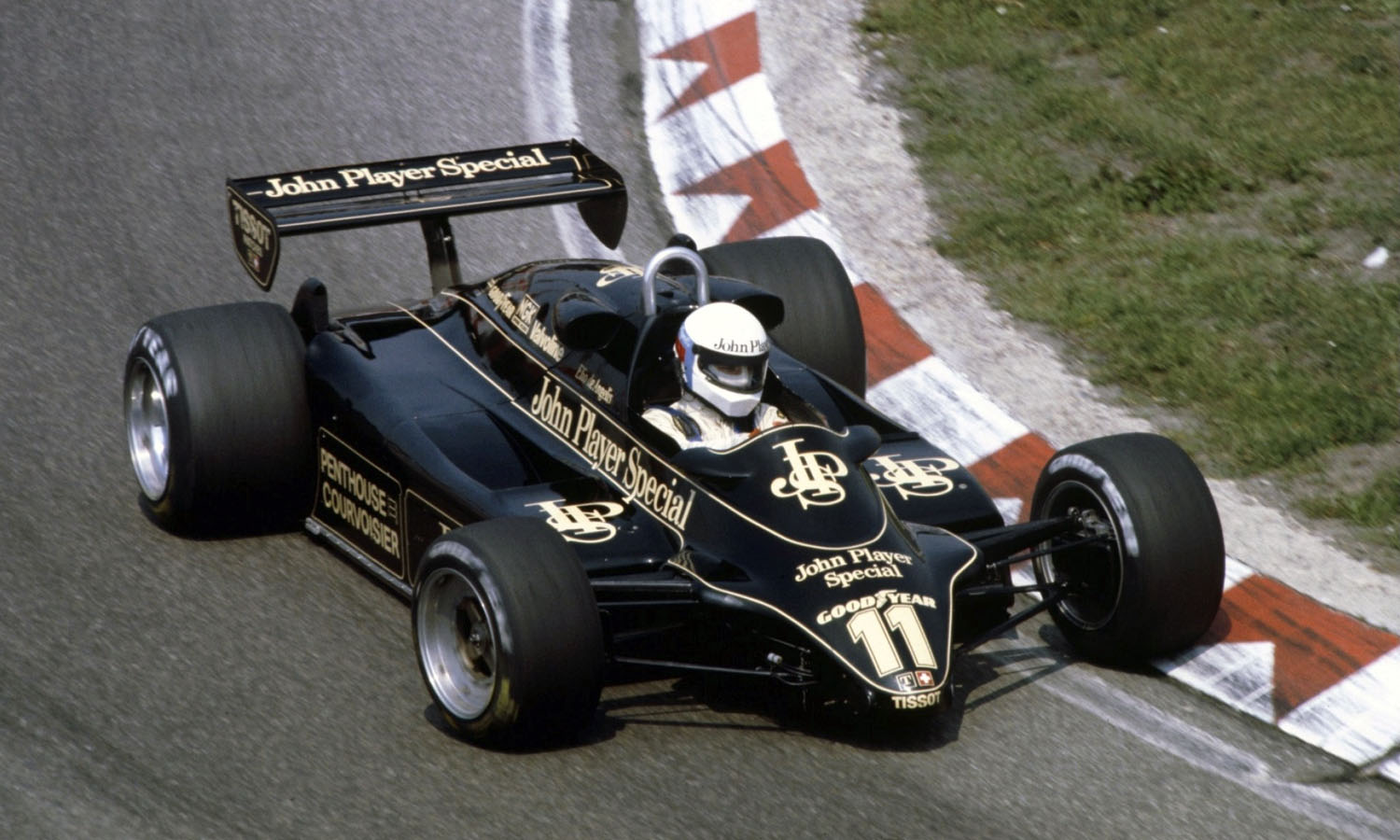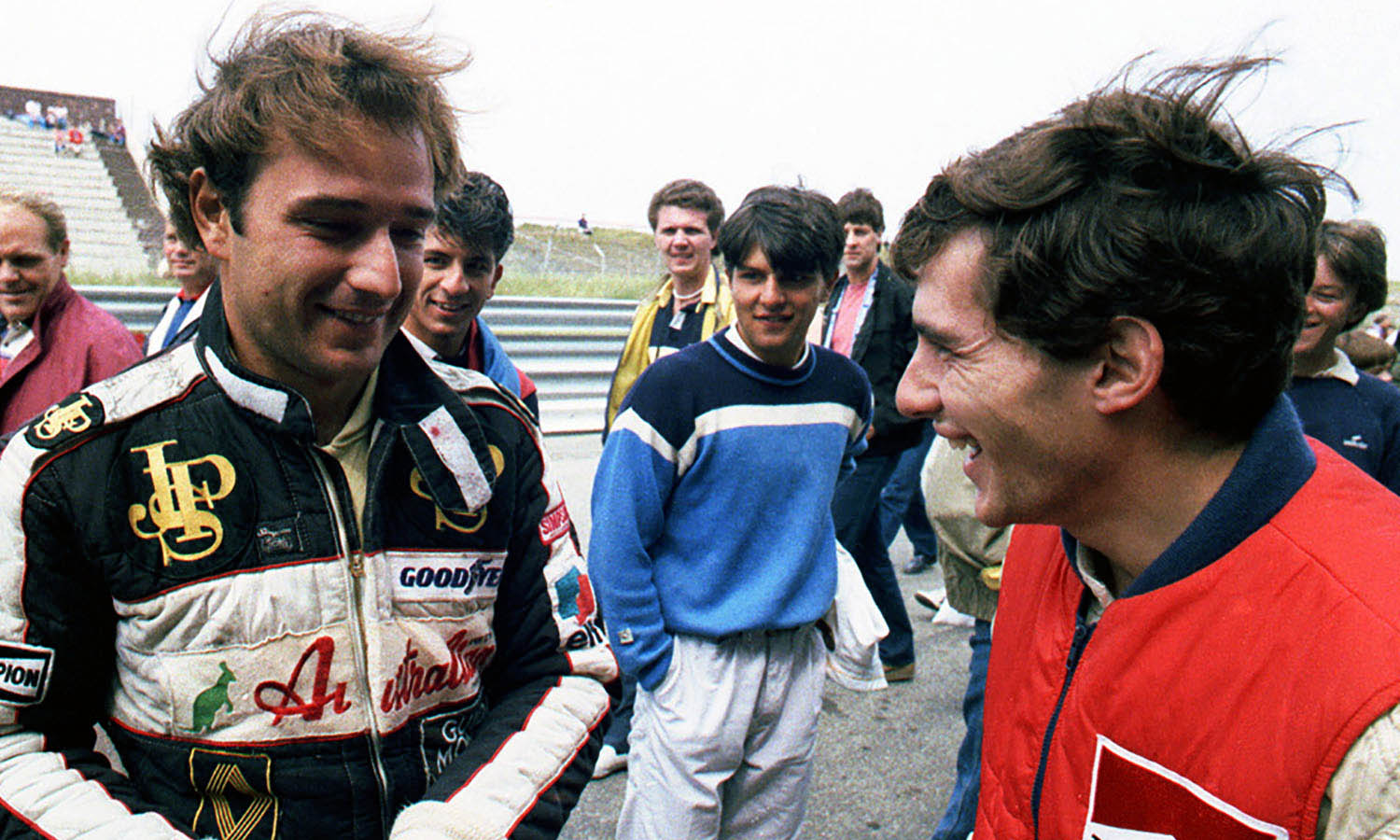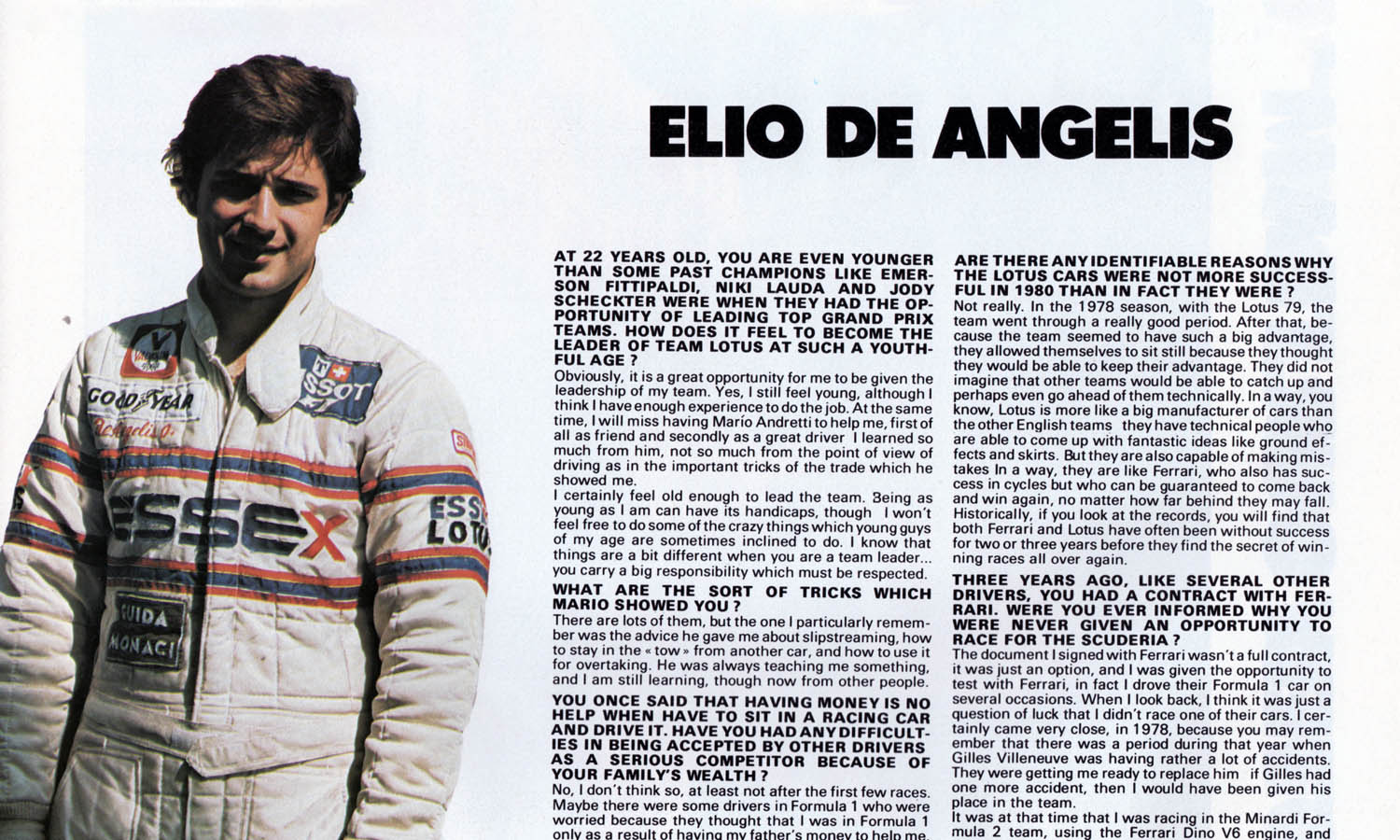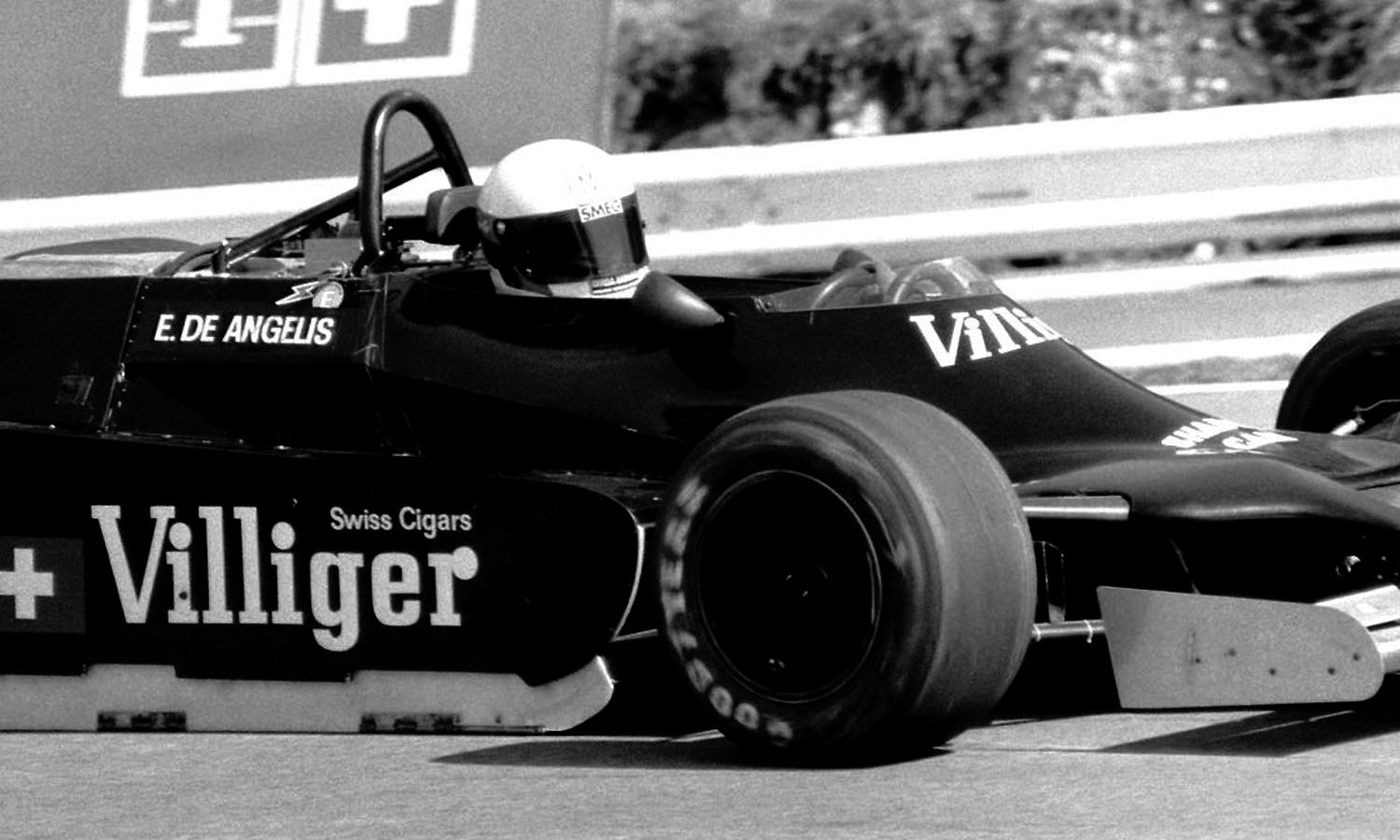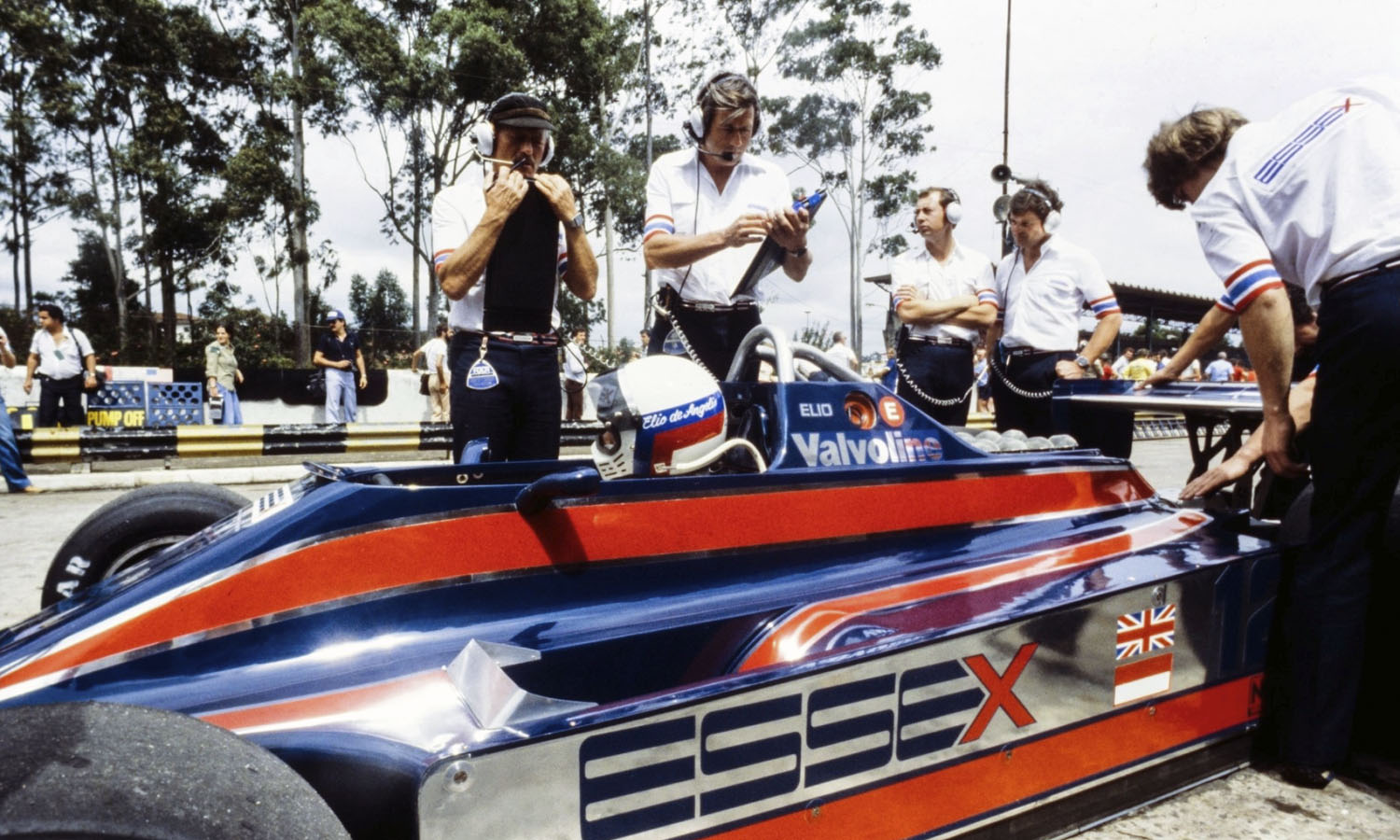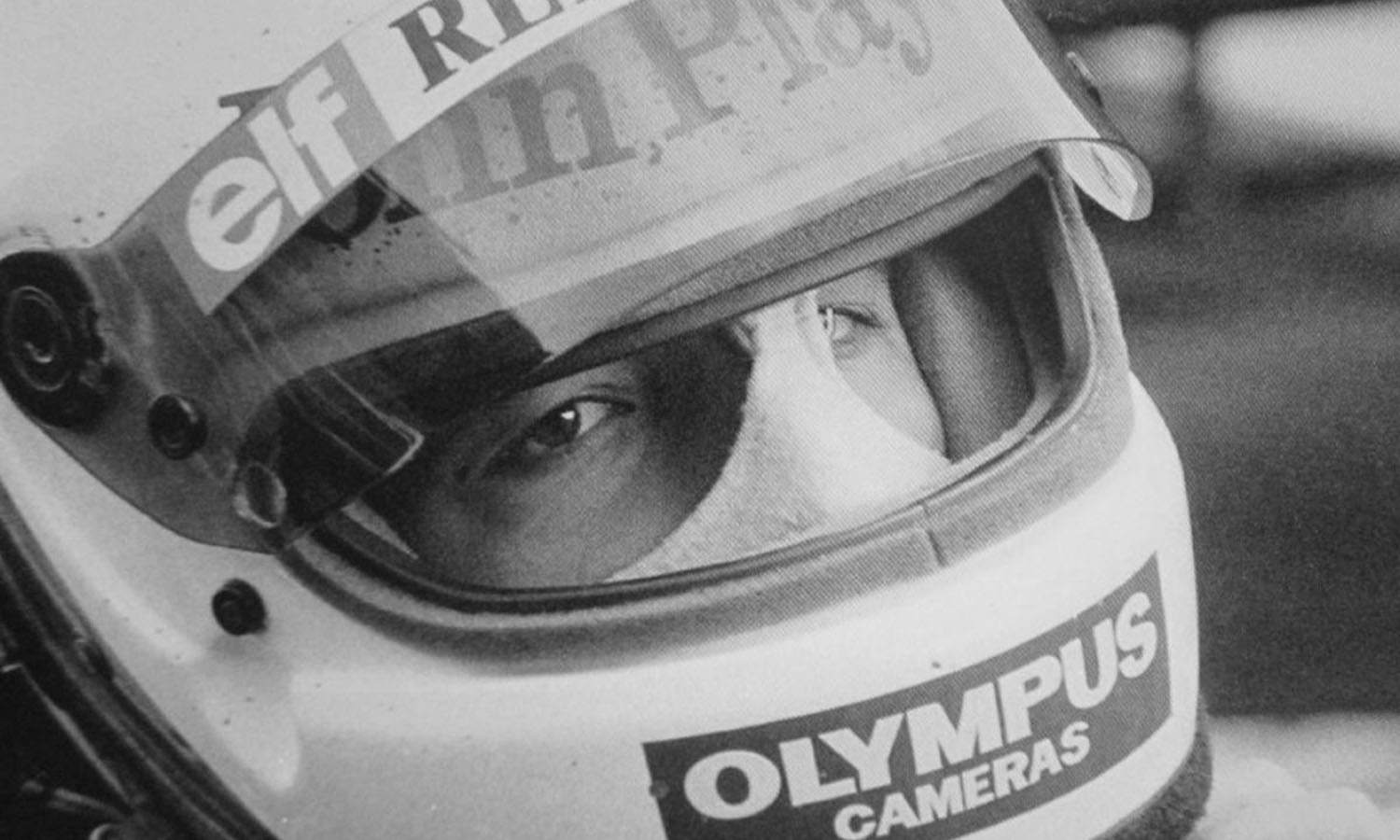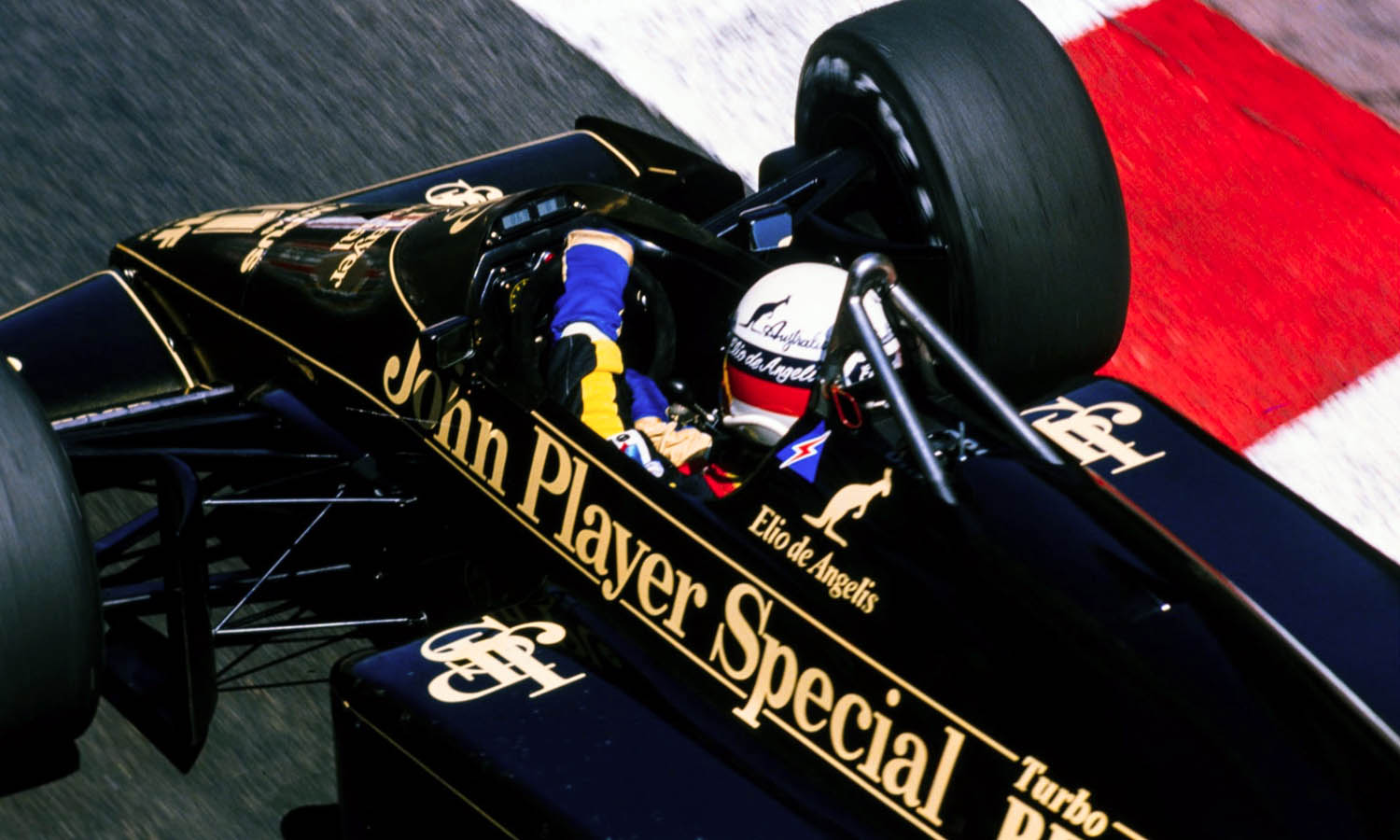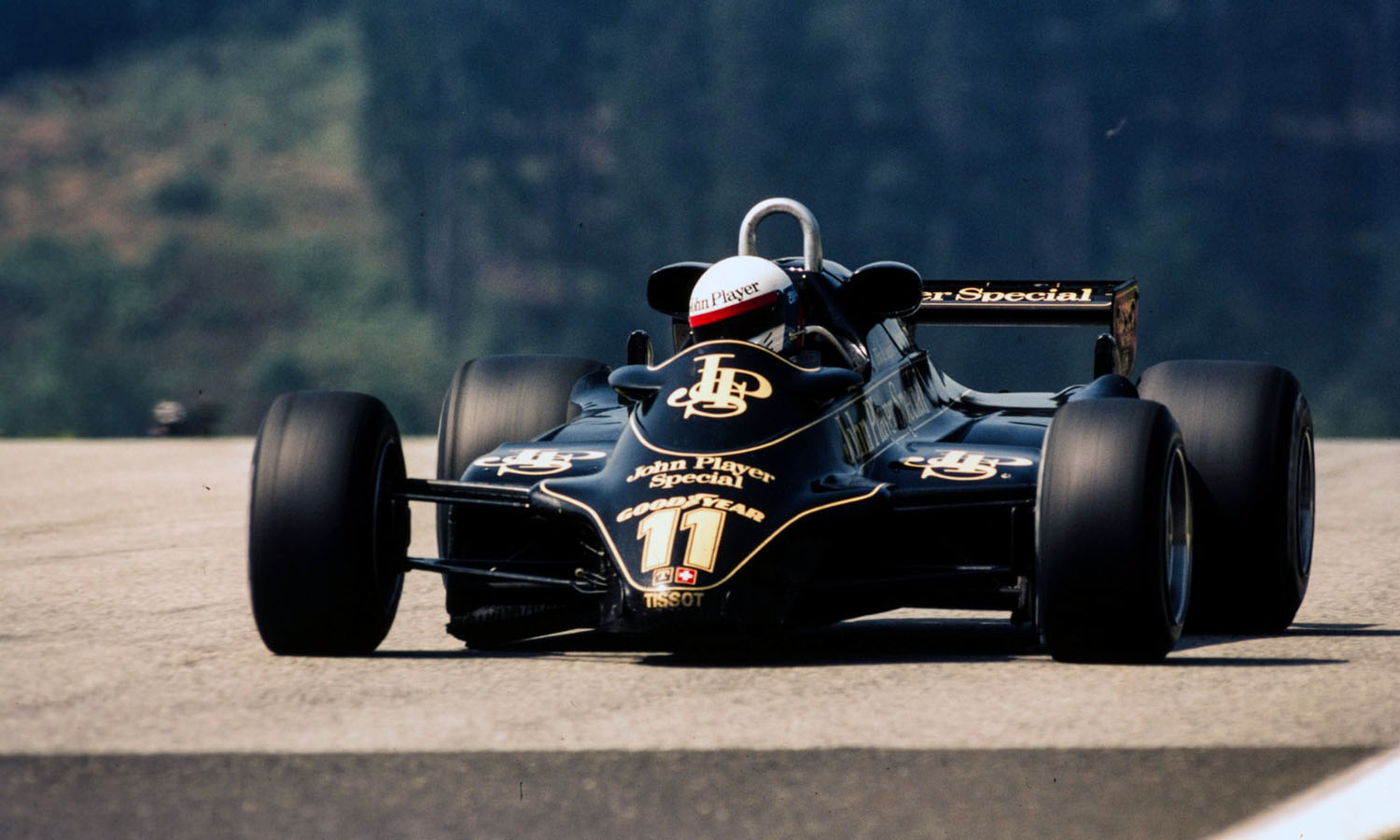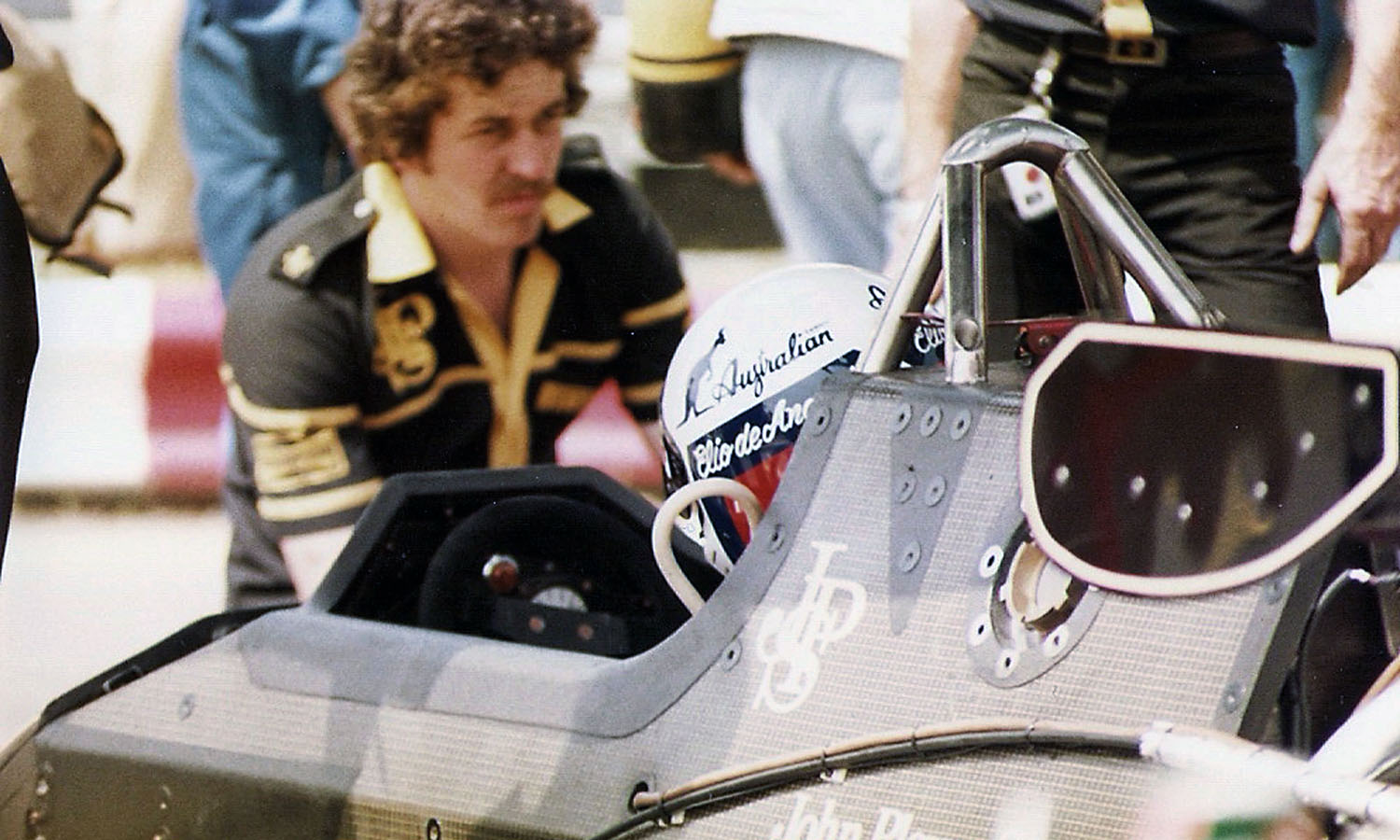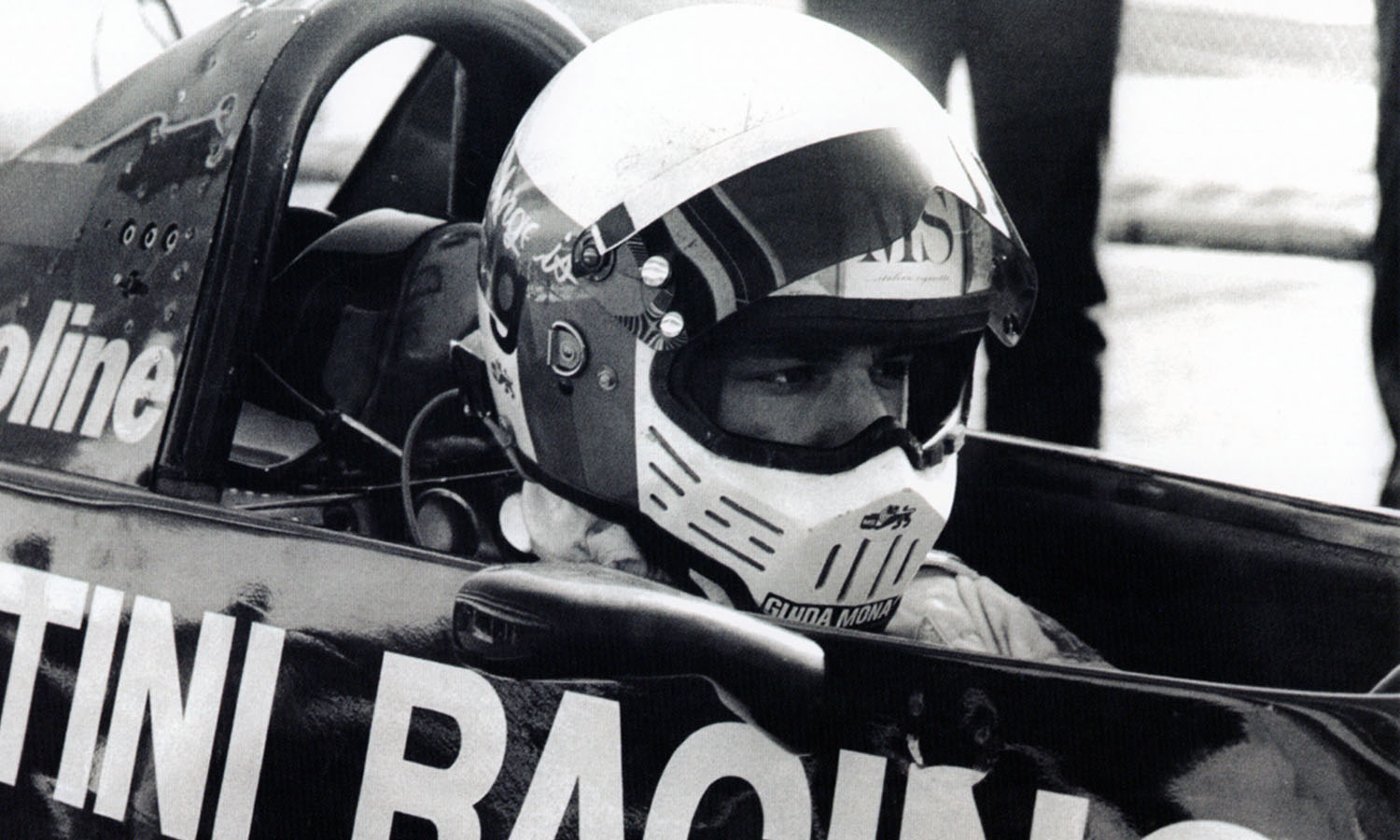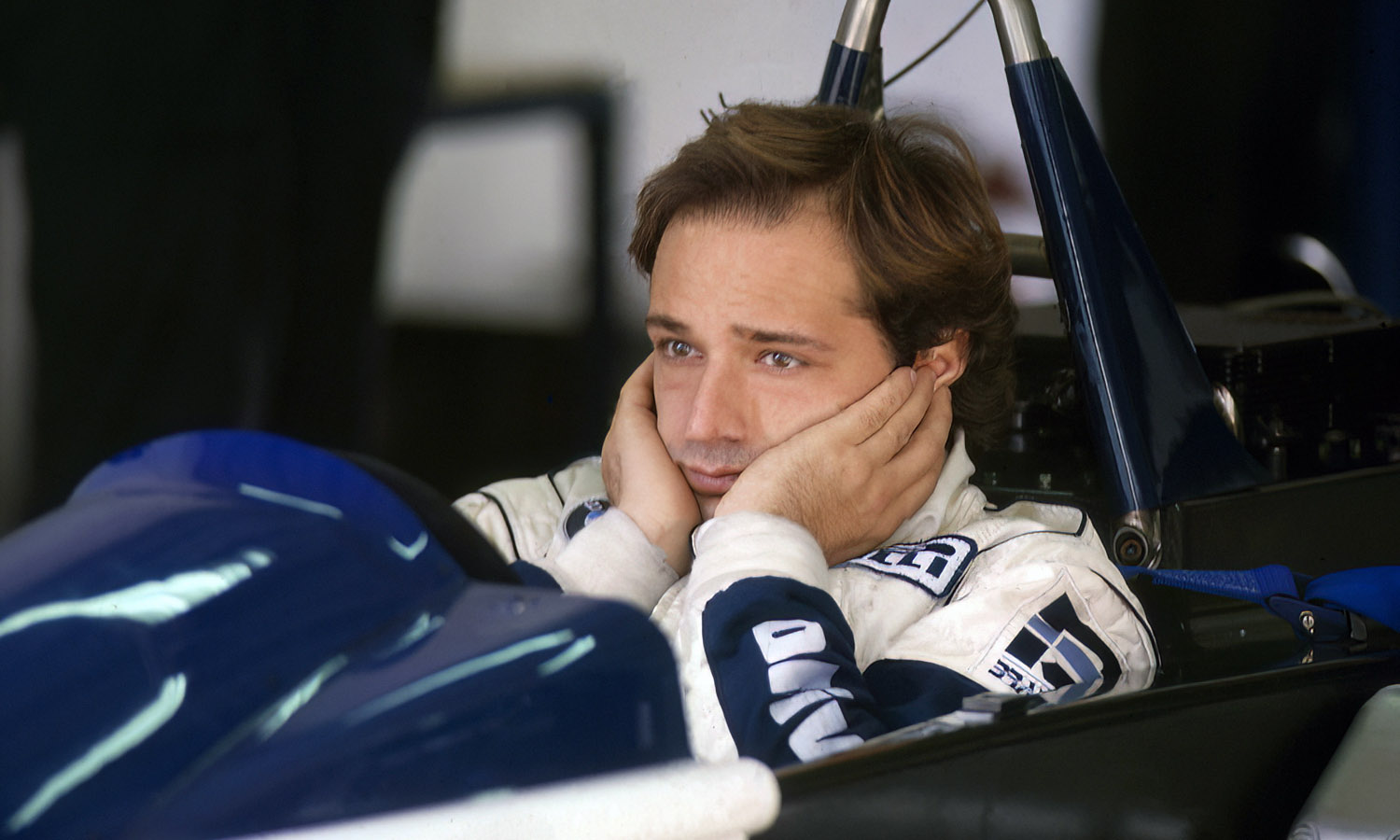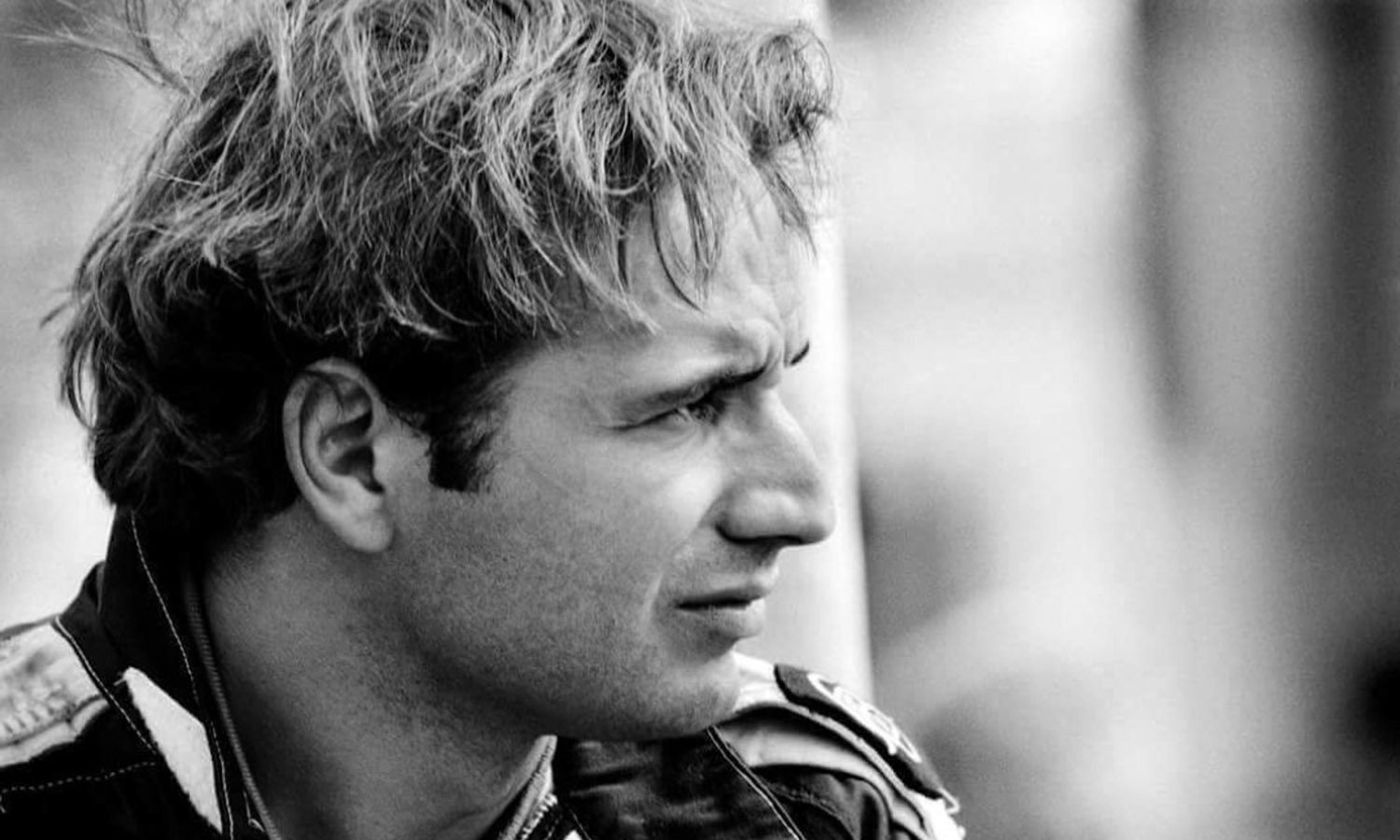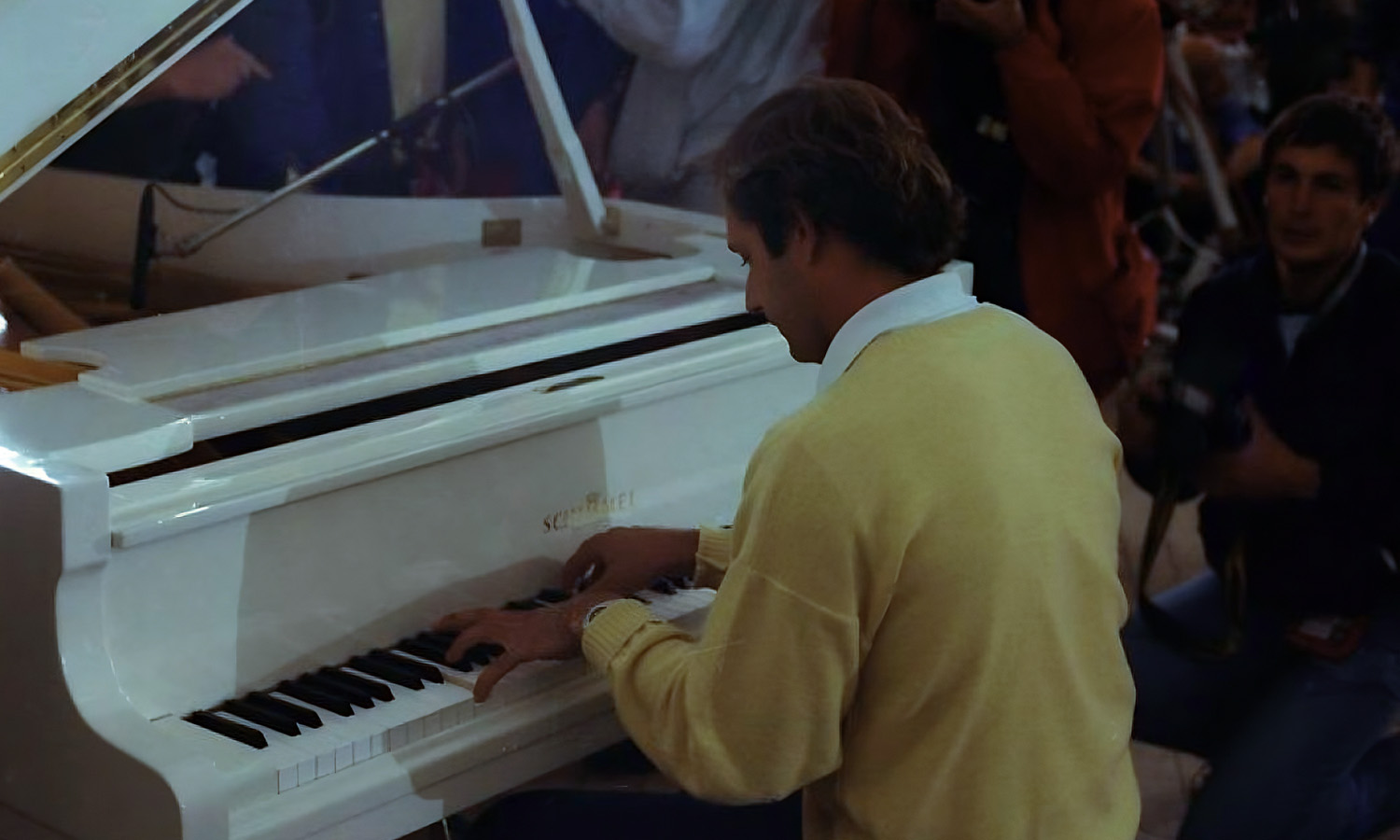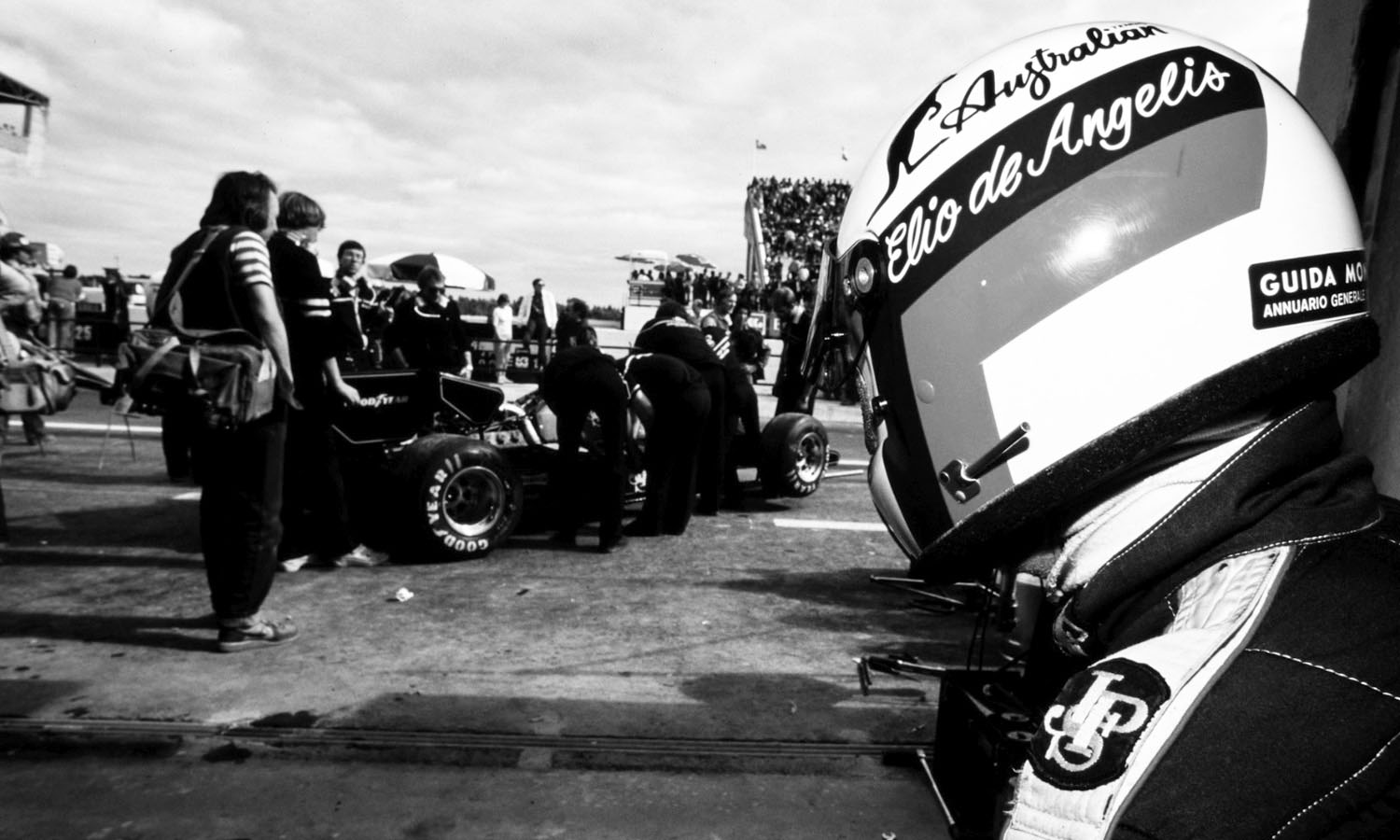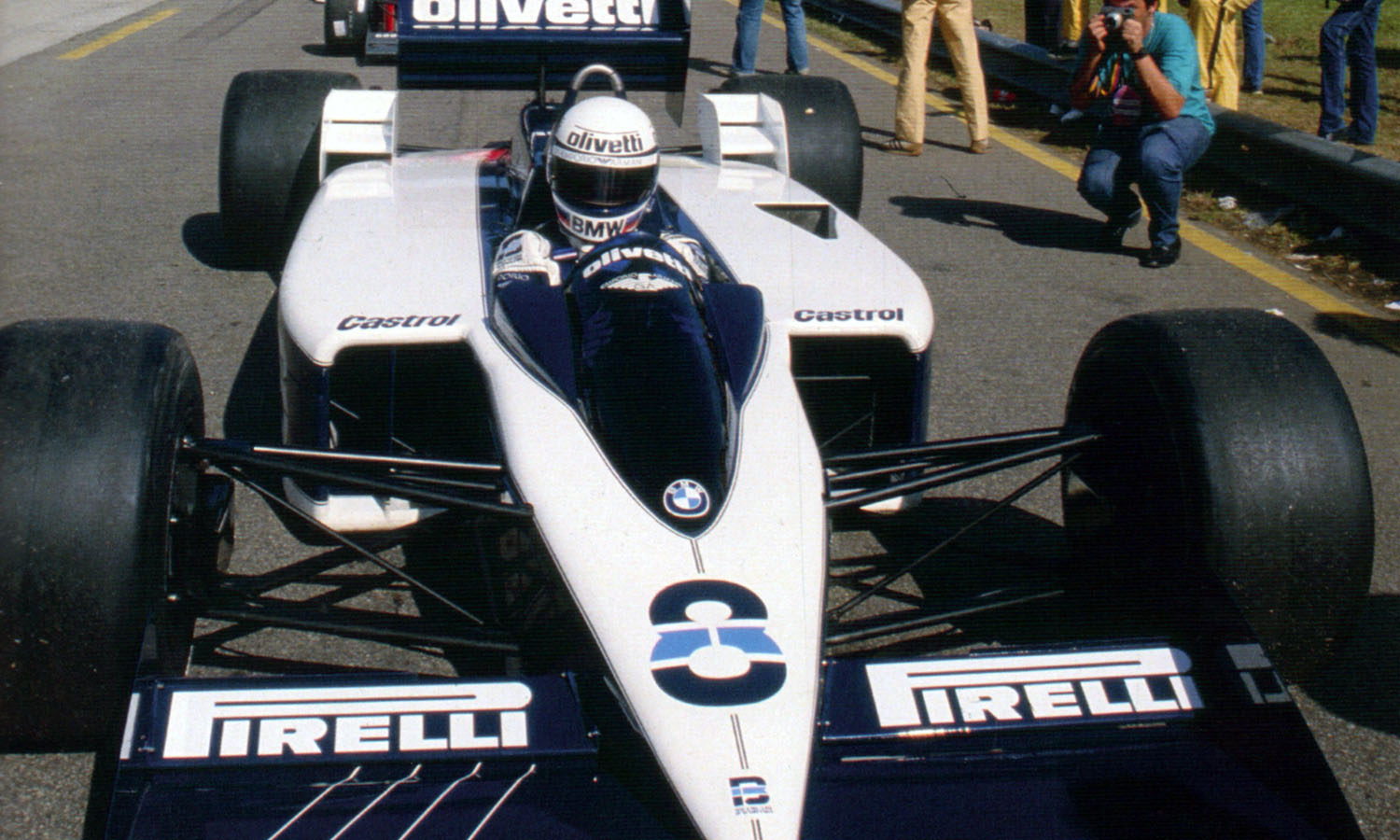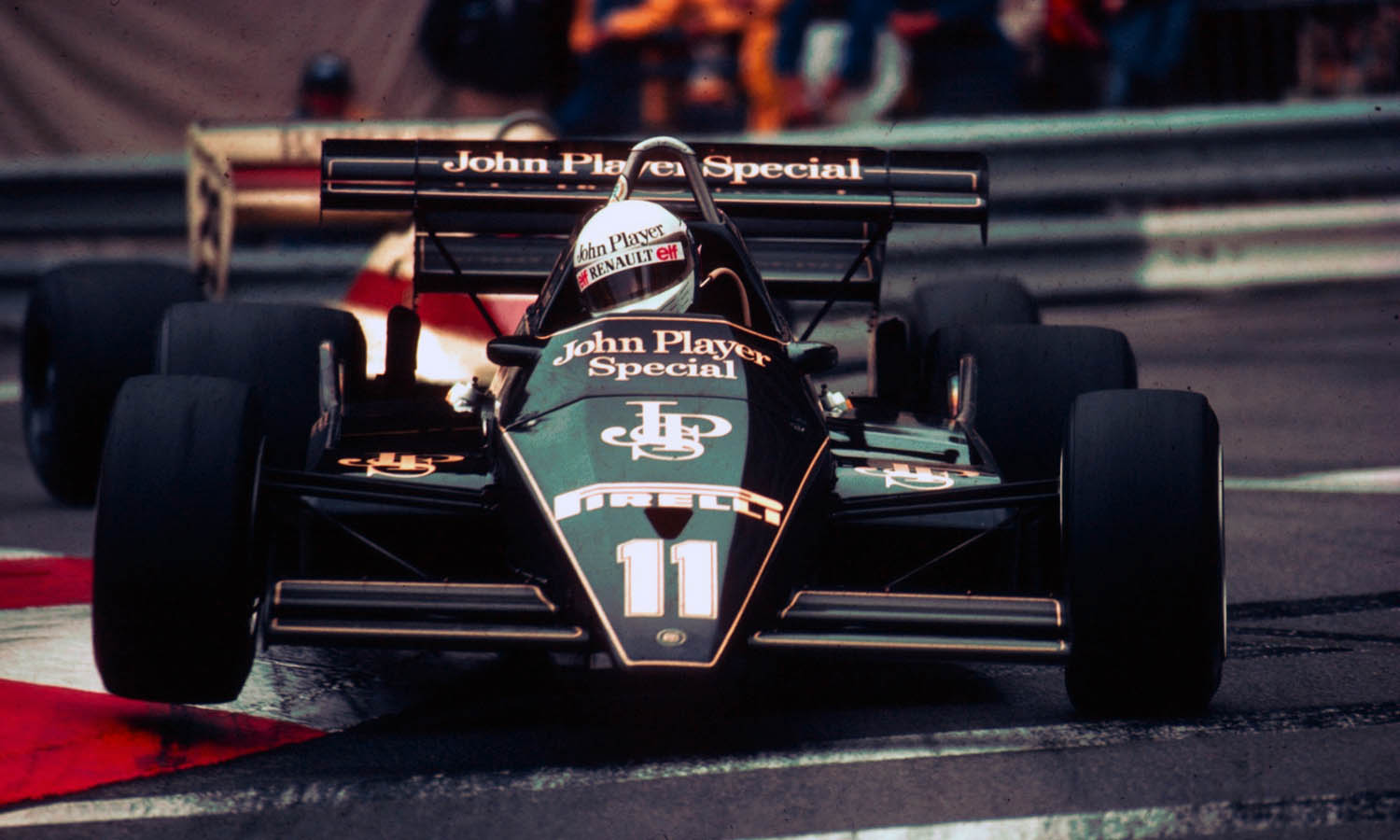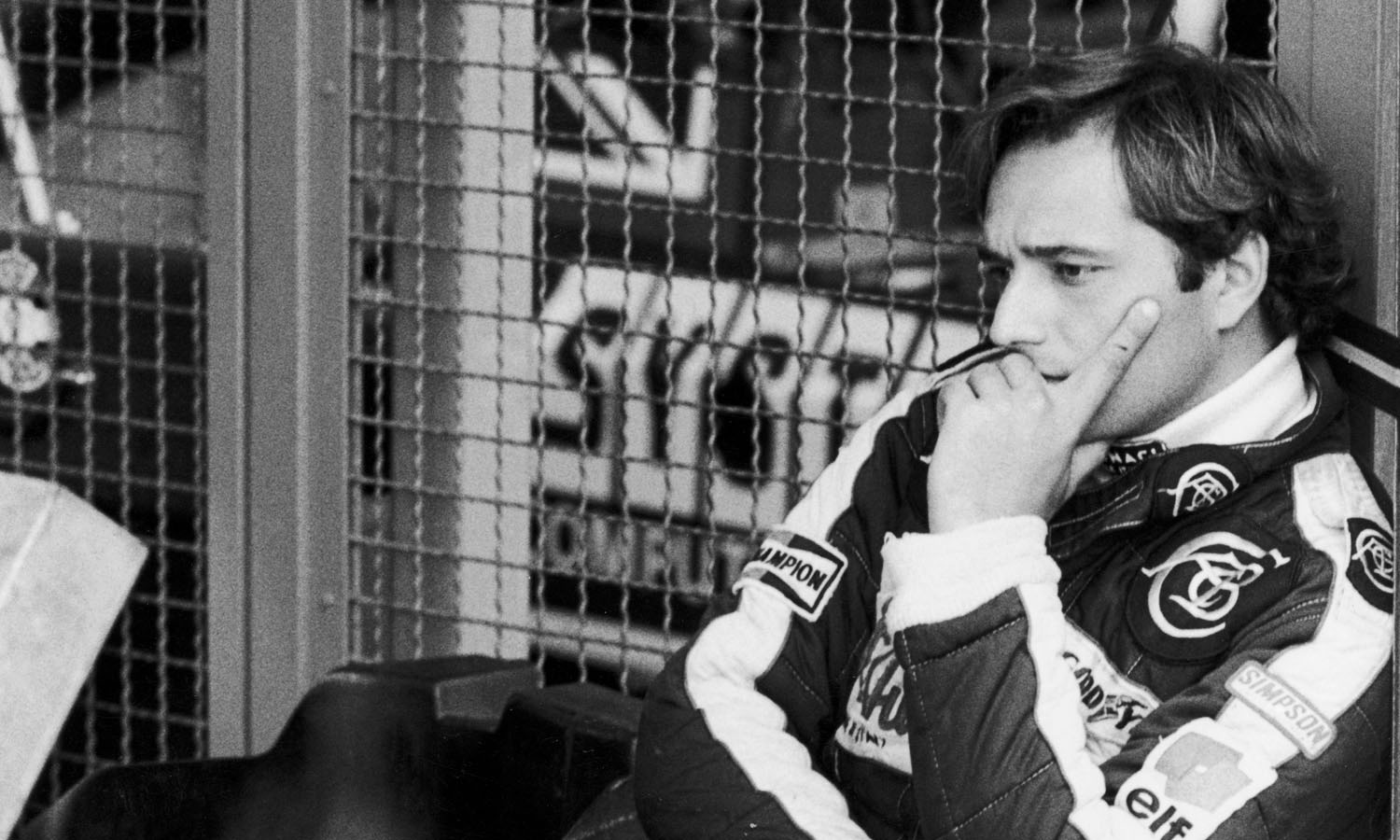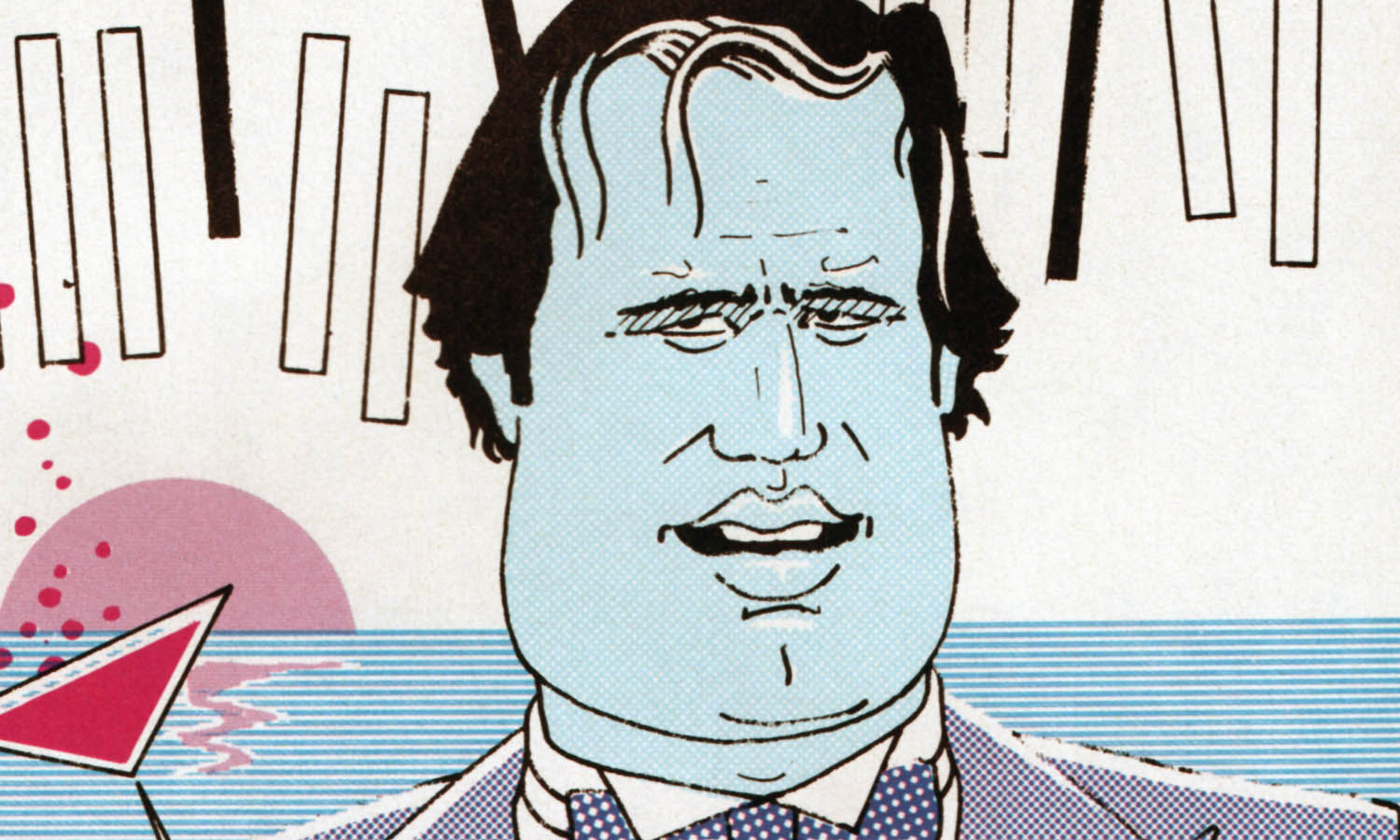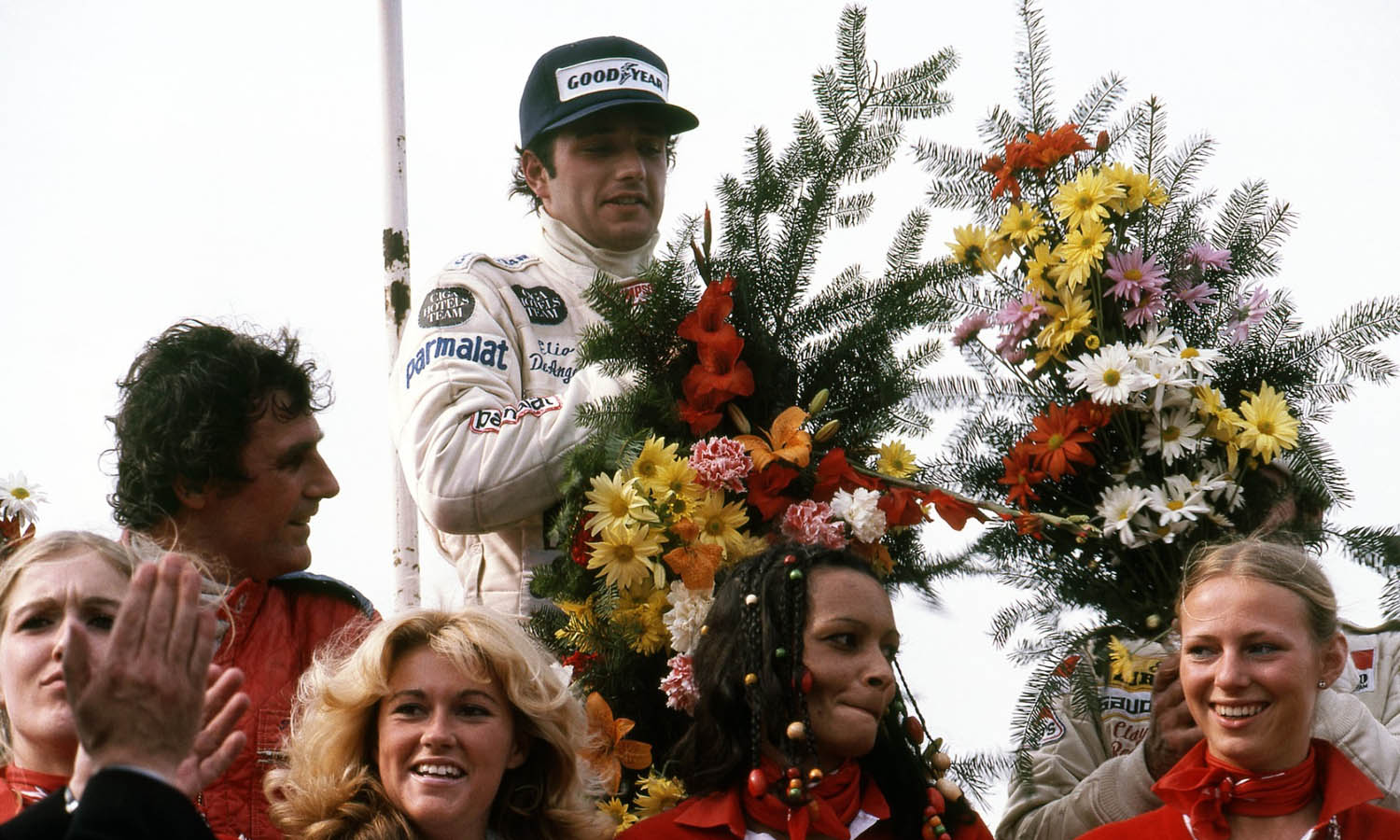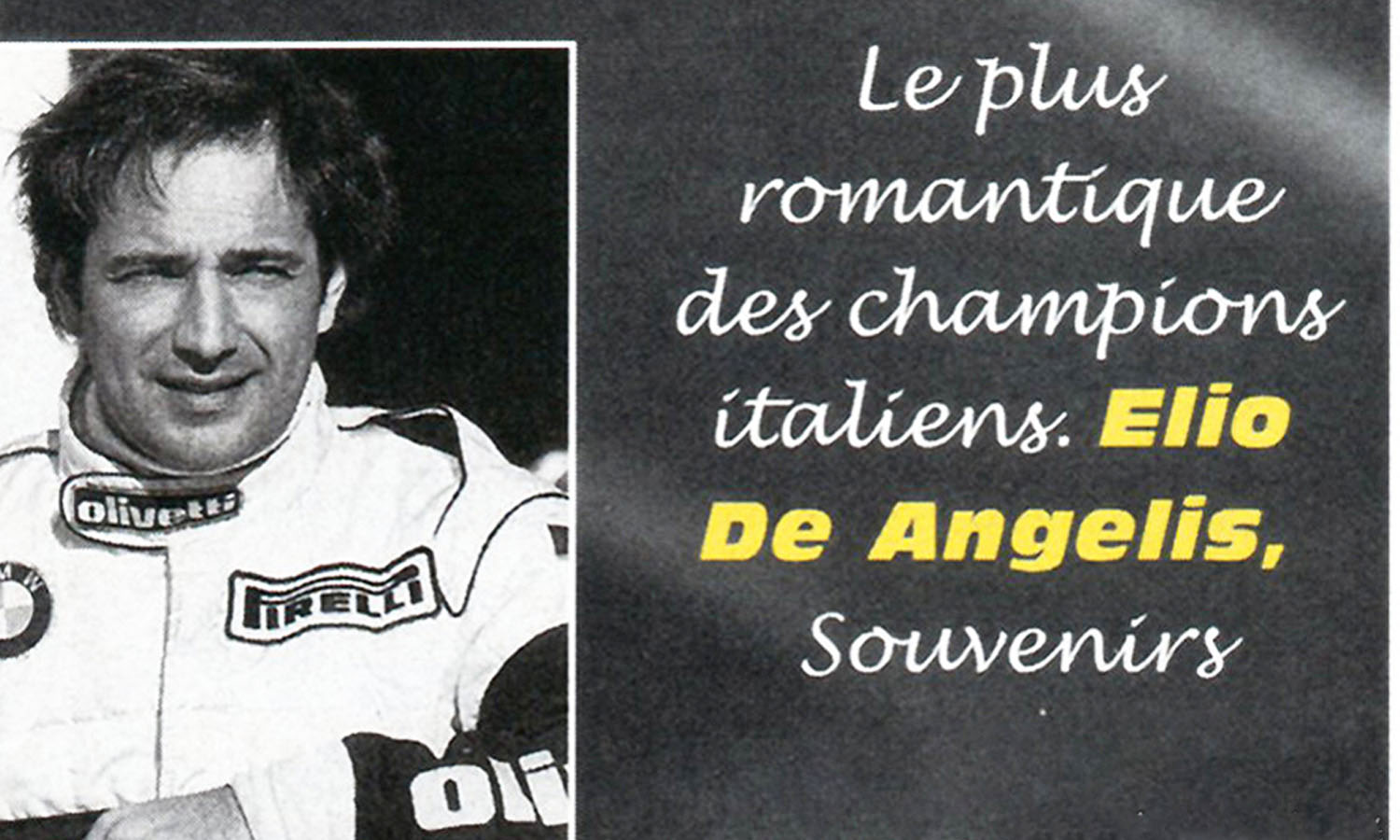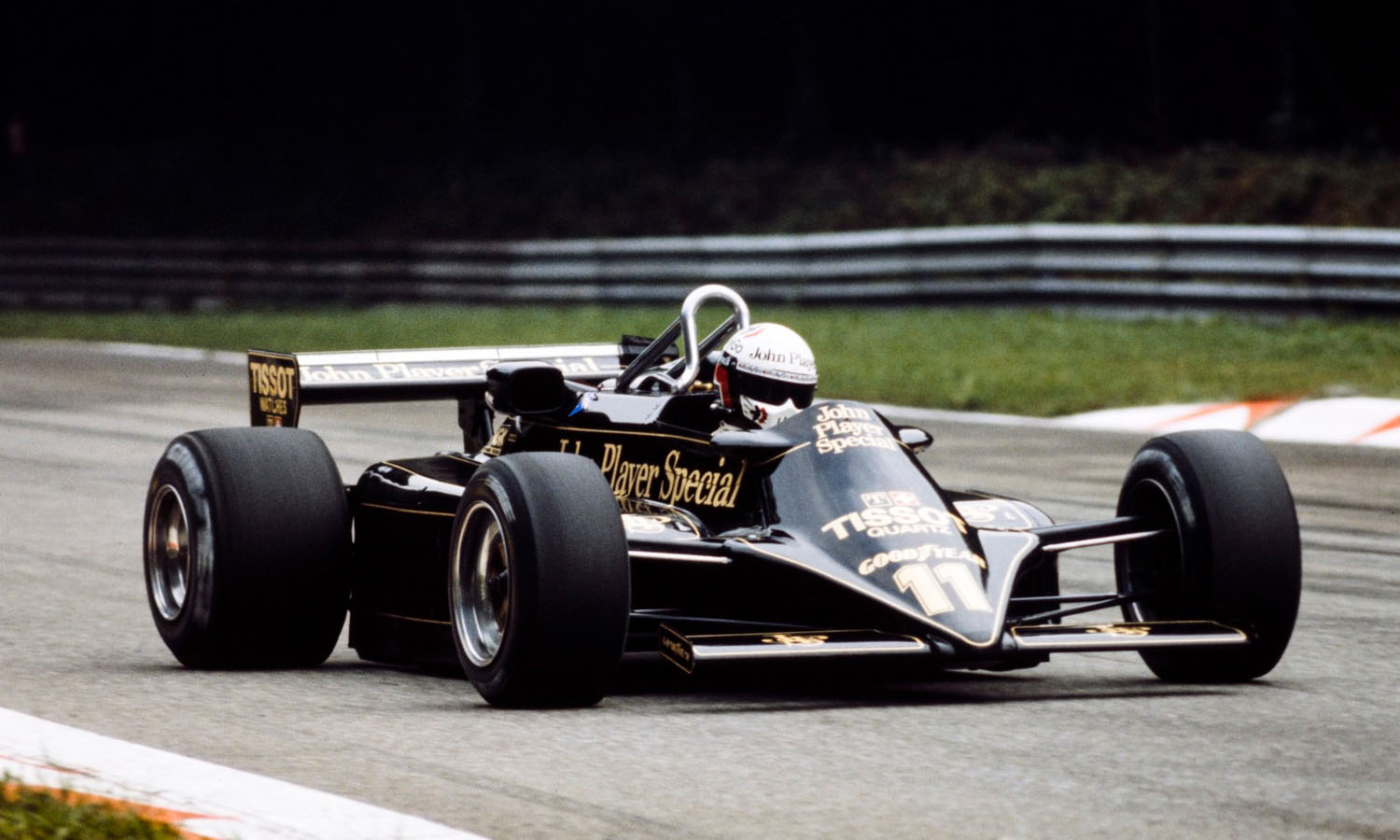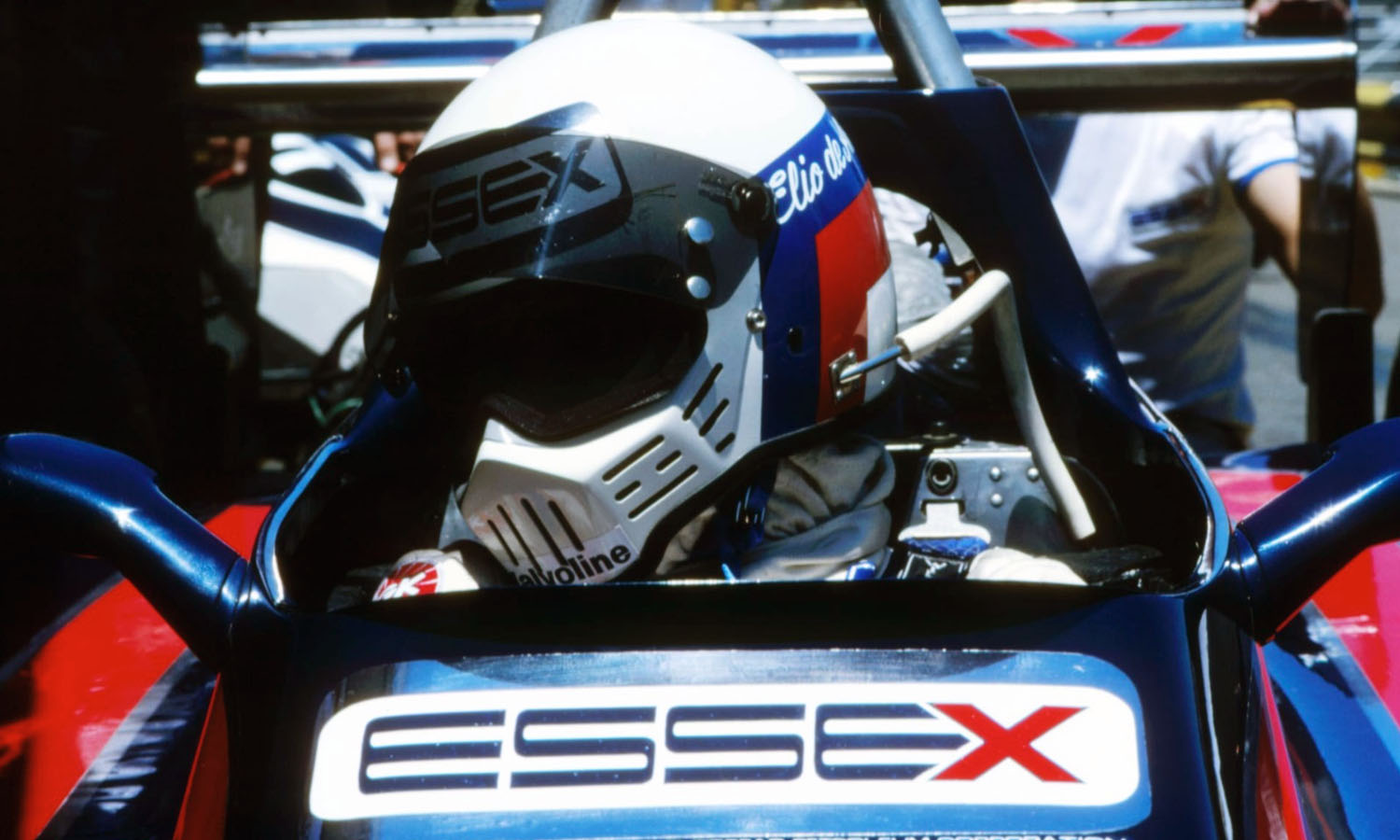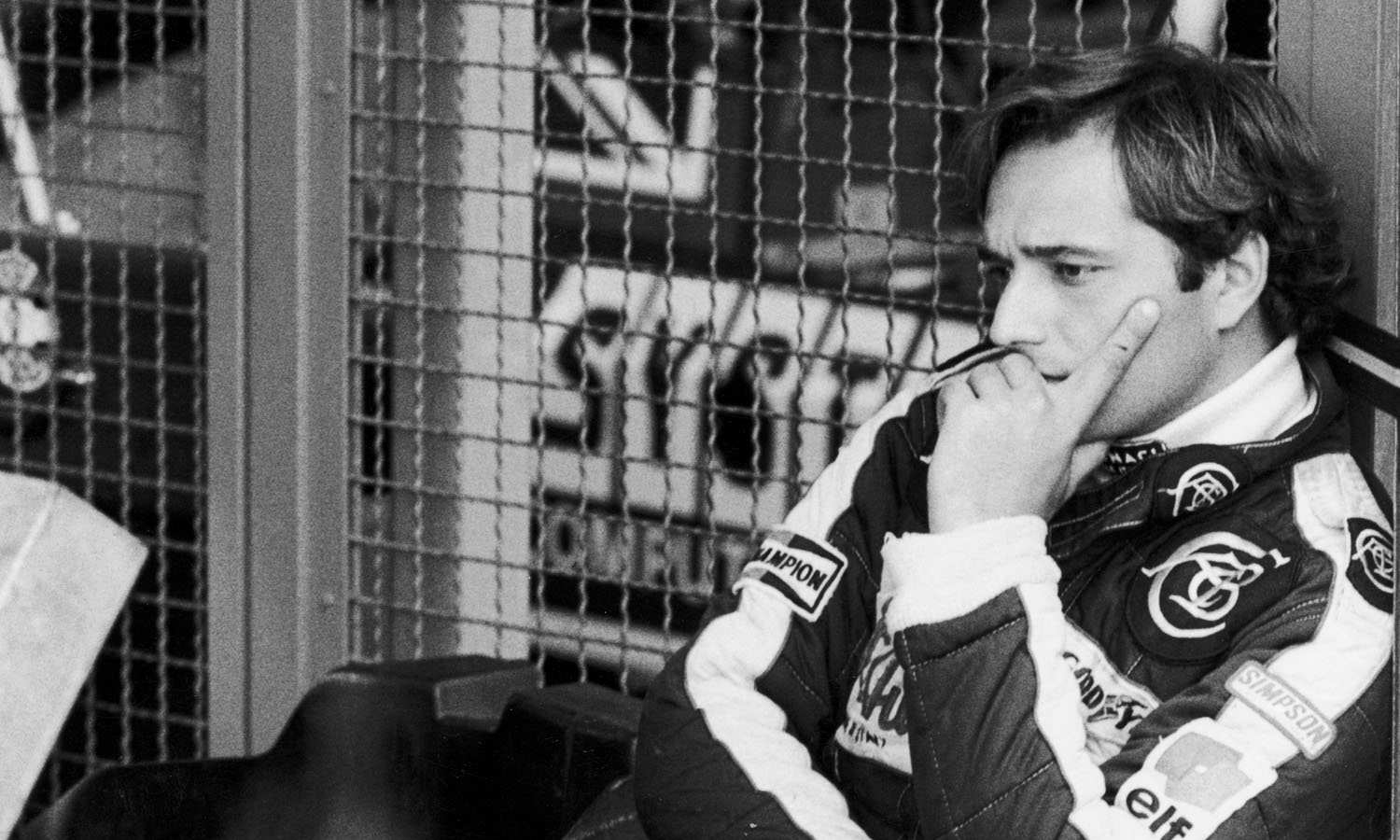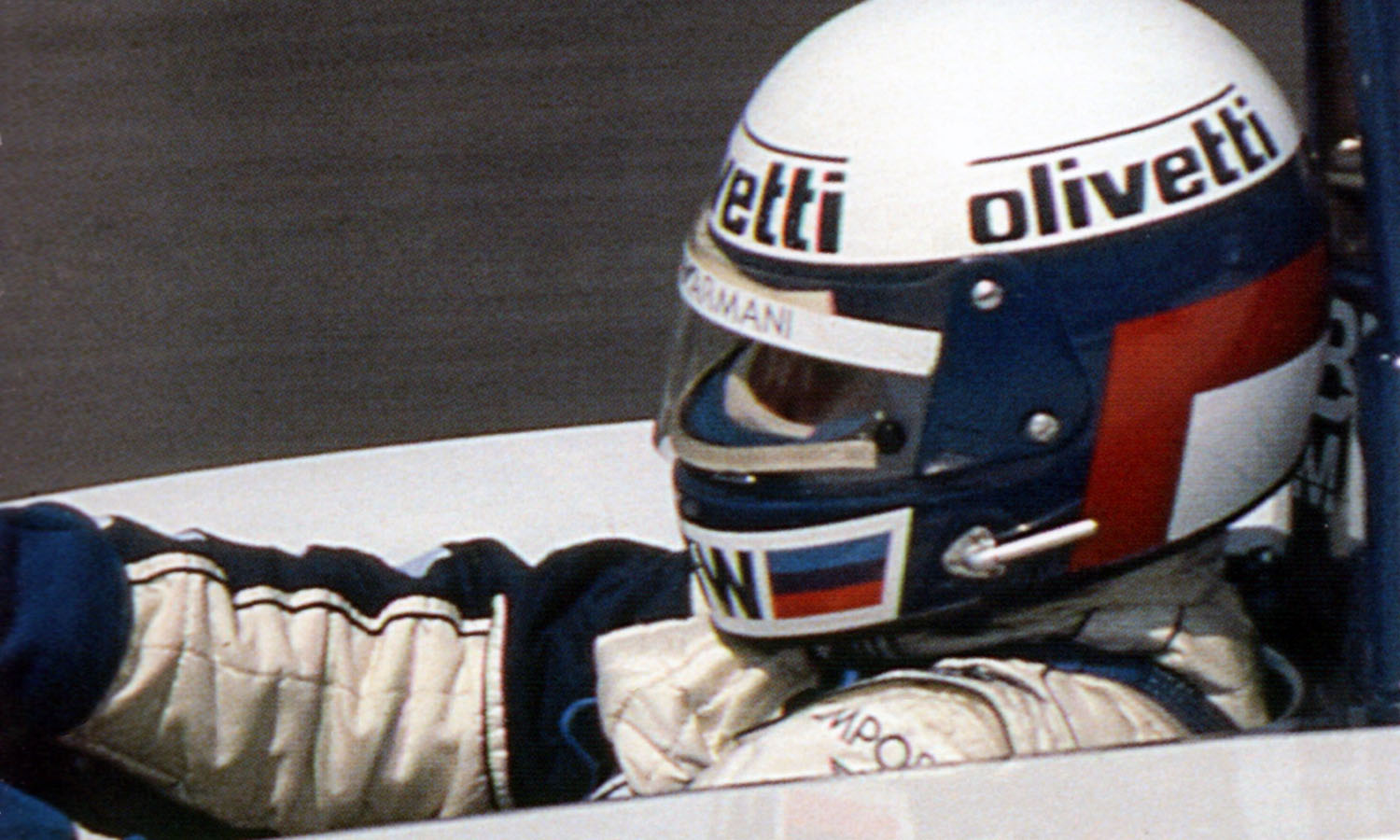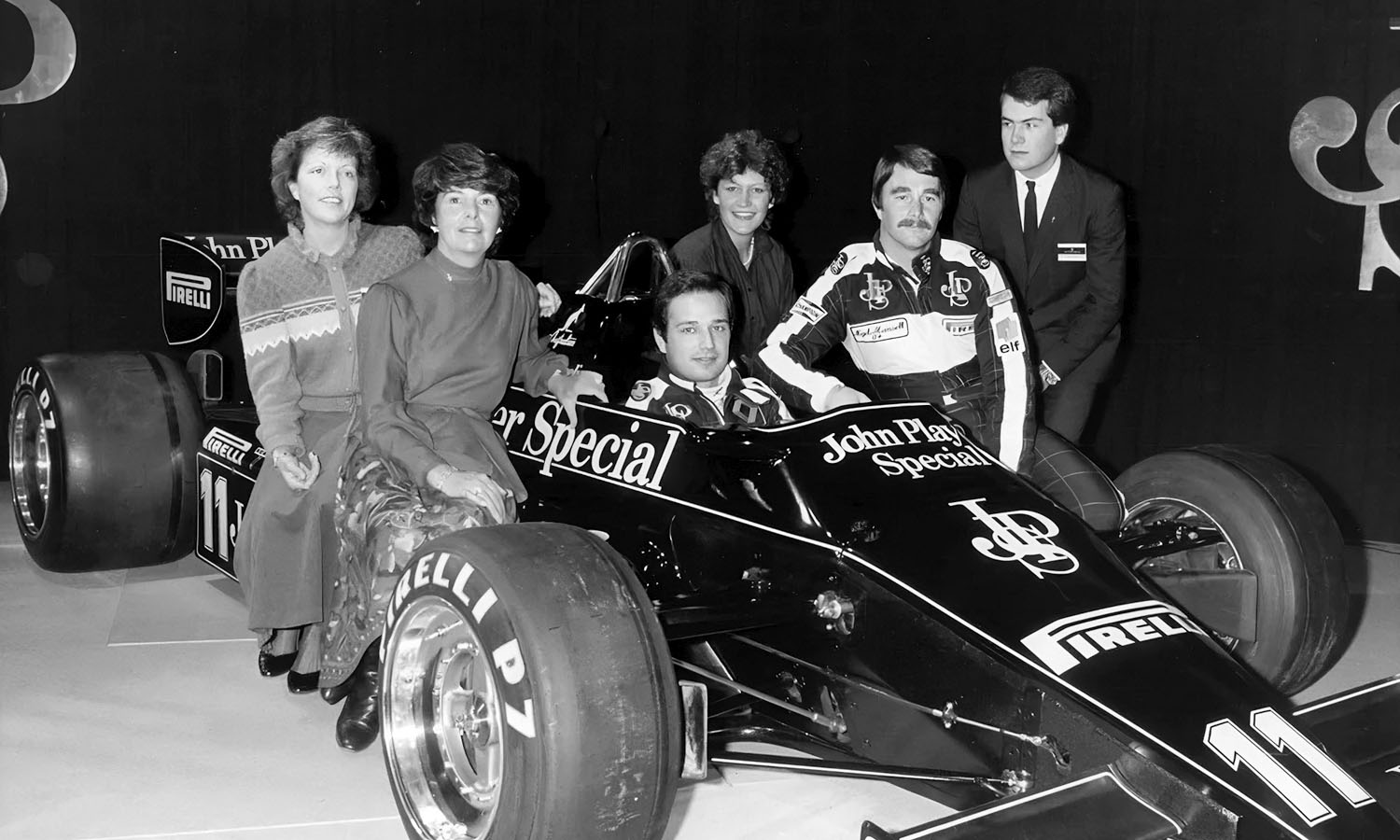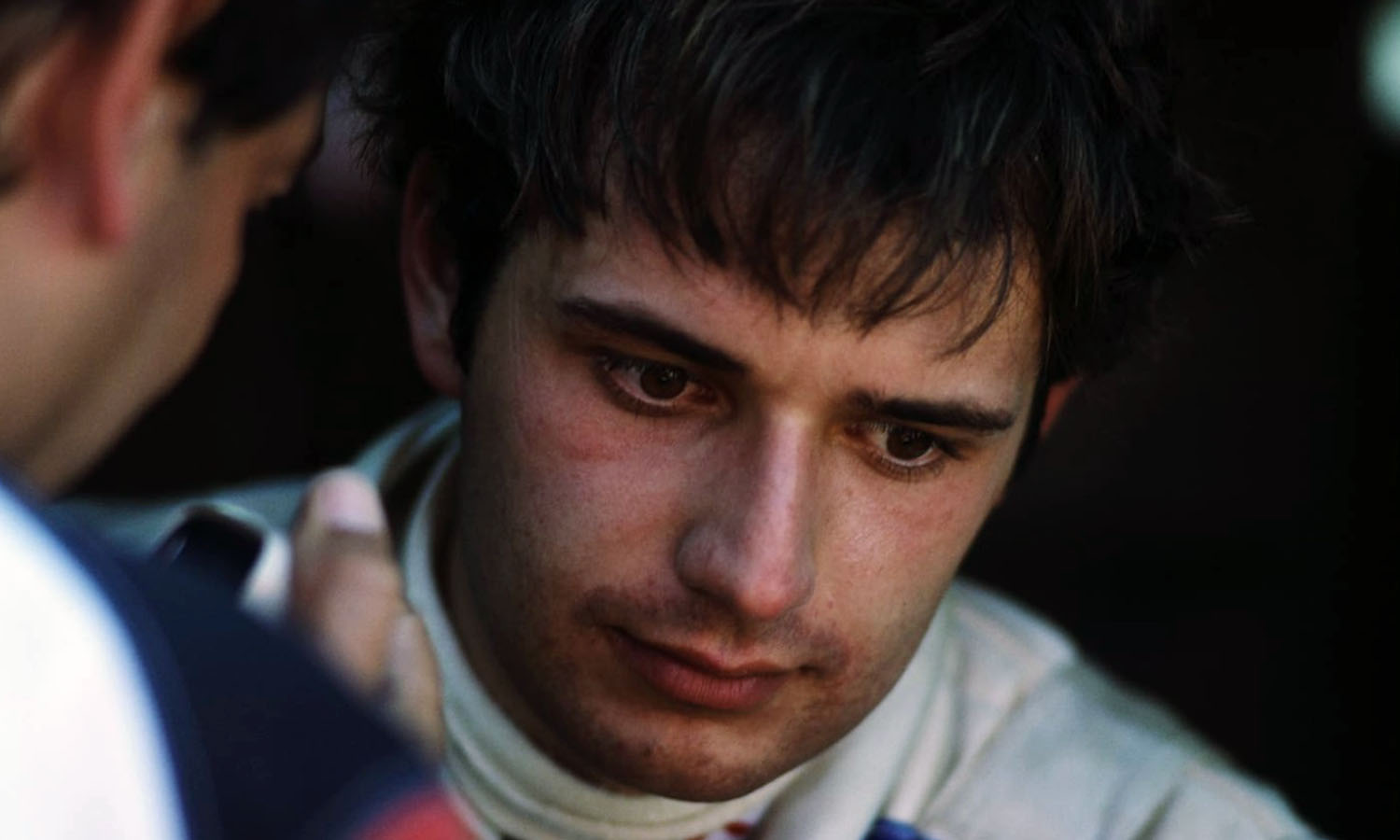We questioned a prominent witness, indeed a protagonist of the Grands Prix, given that in the championship standings behind "those elusive" McLarens there is him, Elio De Angelis, with his black Lotus number 11.
Translated by this website
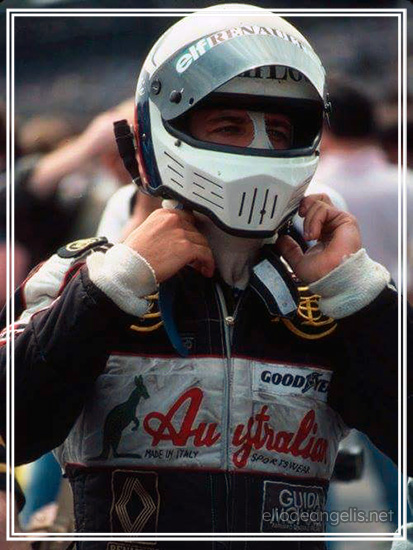
Did you have a premonition, at the beginning, of the superiority of the McLaren team?
No, I thought the forces were more balanced. In Rio I started in pole position and finished 3rd, although an injection failure had crippled my engine right from the start. Even the Ferraris were highly competitive in the first races.
Until when did you think you could validly oppose the McLarens?
Until the 12th Grand Prix, in Austria. Two weeks earlier, in Germany, I had led easily for 8 laps, then the engine had failed. At Zeltweg my car was fast, very well balanced, I could have won, especially as Niki trudged to the finish line first, without fourth gear. But even there my engine betrayed me. In that decisive period, when Lotus was recovering and could recover, we were stopped by a massacre of pistons, which extended to all the Renault engines, which up until then were among the most reliable. Yet we weren’t forcing turbo power at all—we’d previously raced at the same or even higher pressures. After the race in Austria, the whole team was inevitably demotivated. We fell back on the highest possible goal, third place in the drivers’ championship. It certainly didn’t excite me, but I had to resign myself.
Twelve victories for McLaren, an historic record that surpasses the previous one from Lotus by 50%, in 1978, with eight first places. What impression does it make on you?
I, being inside the situation, am less impressed than those who see Formula 1 from the outside. McLaren’s growth has been continuous, it is true, but it has also coincided with the more or less serious crises of various other teams and for this reason it has appeared more irresistible than it actually was. After all, in 1978 Lotus outdistanced everyone by two seconds per lap. McLaren had an advantage of 5-6-7 tenths per lap this year, and sometimes it was even beatable.
What was the contribution of the drivers in the dominance of the McLaren team?
Niki and Alain drove like world champions making few mistakes and proving to be among the best today. However, given the excessive power of their team, I think that all the top ten Formula 1 drivers would have done the same, in their place.
What was the contribution of the chassis and aerodynamic efficiency?
Not decisive, in my opinion. The McLarens benefited from happy aerodynamic intuitions but, in this regard, other cars, such as ours, were very little, if at all, inferior.
And what influence had Michelin radial tires?
Remarkable, no doubt, in reducing McLaren’s power transmission problems, which have increased over the course of this year. However, we too checked the traction of the car quite well. Let’s say that with the same tires we could have won two or three races: that doesn’t mean that the world rankings would have been upset.
Finally, what was the contribution of the TAG-Porsche engine?
I would say 80% decisive: both for the power obtained in the race in relation to limited consumption, and even more for the continuous reliability that has accompanied the evolution of power. The superiority of the TAG-Porsche engine appeared clear to me, I remember, right from the Imola Grand Prix where Niki Lauda overtook me not when braking at the Tosa curve, a typical point of every overtaking on that track, but simply when accelerating on the next climb as if I was not moving, although I cornered perfectly and without loss of traction on exit. At the end of the season, I had an even more surprising performance, when I saw Niki in front of me pass two cars in one fell swoop between two close corners, a maneuver that would have been impossible for a driver from any other team, even one more aggressive and determined than the Austrian.
Consumption Drivers
In which phases of the championship did the drivers experience the problem of consumption most frantically?
In the first three races, because we had to face a new unknown, which in the race could have different negative aspects compared to what we had observed in winter free practices. Then, with a minimum of habituation, we felt more relaxed for a while. In the meantime, the technicians had mastered the problem and managed to reduce consumption, one can say from time to time: and this allowed us to use ever-increasing power in the race by raising the operating pressure of the turbo. In a third phase, however, the TAG-Porsche engine took off, outdistancing everyone in the race for greater power through the containment of consumption: and then we drivers found ourselves dealing with unrewarding driving strategies.
To what extent did the advantage of the McLarens affect your behavior in the race in relation to consumption?
It’s easy to explain. We, I say we at Lotus, but this is more or less true for all the drivers, have an electric switch in the cockpit, with 5 or 6 positions, with which we can raise the turbo pressure by 0.2-0.3 bar during the race or lower it even more than the basic value set by the technicians at the start. In other words, we can temporarily increase the power to carry out the necessary overtaking in a hot phase of the race or decrease it in a stabilized and calm phase to reduce the risk of engine failures and to save fuel, compensating for the excess consumption which may have forced us a comeback.

At the start we know perfectly how many laps we will be able to use the boost, the extra push, and how many we will then have to run on savings so as not to risk stopping with empty tanks. However, these are tactical calculations that contrast with the innate combativeness of a Formula 1 driver, distract and humiliate him. They humiliate him little in a situation of balance of values between the machines. Much, however, when dominant cars such as the McLarens are in the field, which regularly start with a normal operating pressure of 0.2 bar higher than what we could afford. To lead an attack race in these conditions I was always tempted to open the boost to put my engine on par with those of Lauda and Prost, then I had to give up the aggressive race if I wanted to finish with the last drops of petrol. A driver’s temperament rejects such dilemmas.
Does the consumption concern also concern the driving technique itself or only the tactics of the race?
The guide too. For example, we have found that changing gears at 10,500 rpm instead of 11,000 is more useful for saving fuel than reducing the turbo pressure by 0.2 bar: and therefore, we have often driven like this, when we realized we had a little exaggerated with the boost to keep up with the McLarens. Shifting at 10,500 rpm, however, means driving a completely different car: the Lotus, for example, is all the more balanced the more power it has to discharge to the ground, while limiting the engine rpm, i.e. the acceleration force, becomes oversteer to understeer, forcing the driver to make unpleasant efforts on less profitable cornering lines.
1001 Horses in the Back
The 1984 Formula 1 cars became faster than two years ago, when side skirts and full ground effect were banned in favor of flat bottoms for safety reasons. The 1984 season was marked by an unprecedented increase in engine power. Let’s hear what Elio De Angelis thinks.
How much did turbo engine power actually increase between the start and the end of the season?
During the race, the limitation of consumption slowed down the climb to power a bit, however from the first to the last Grands Prix there was an average increase of 100 HP: the TAG-Porsche of the McLarens was at a higher level, the other engines in a less high-end, but all have made progress of this order, on 100 HP. On the other hand, we reached truly unbridled powers in the qualifying tests, where we are free from the qualms of consumption. There has been talk of a legend of the 900 HP of Piquet’s Brabham-BMW, which has won the beauty of 9 seasonal pole positions. Well, I know with certainty that, without resorting to the acrobatics of special qualifying engines, we had 1000 HP in the tests. Instead, Piquet used BMWs pulled to the death throes of the “boost”, which lasted for just one lap and discharged a power of, let’s say, 1001 HP not to say 1100, in any case well over 1000.
Are powers of this order still on a human scale and Formula 1 or do they risk devouring one and the other?
The horsepower on the race is still controllable. Of course, the best lap times obtained recently show that even in the race, not only in qualifying, we are faster than in 1982 with miniskirts. At Zeltweg, for example, where ‘time’ is made in the corners, Lauda beat Piquet’s previous record with a ground effect car by 1 second. However, the grip of the tires, the balance of the chassis and the aerodynamic loads increased hand in hand with the power, re-adapting the drivability of the single-seaters to the new racing rhythms. On the other hand, the powers used in qualifying are decidedly absurd, bordering on madness and risk: which above all have no technological or sporting significance.
Does the driver feel fear under the pressure of 1000 HP in the back?
No. Certain. There is such a fusion with the car that it feels rather enthusiastic, gratifying sensations. But the risk is enormous. Consider that, with these powers and speeds, we no longer have the certainty that the ultra-soft tires will last at least one lap … Indeed, at Zeltweg we had the opposite certainty, that they would last less than one lap: in fact, in the last corner we were all with no grip, we’d get out of it by traversing the car left and right to unload 1000hp to the ground through the treads that were bouncing apart. Despite this, those tires had to be used, because otherwise, with other less soft ones, you wouldn’t have achieved the same times.
Profession Danger
The 1984 F1 cars showed a dangerous propensity to go off the track without warning. Ghinzani in South Africa, Cecotto in Brands Hatch, Brundle in Dallas. Three accidents that could have ended much worse. With the increase in power does the danger come back, even after the abolition of miniskirts? We turn the question again to Elio De Angelis.
You said the driver doesn’t have the sensation of risk, but the risk exists, and it concerns above all the legs. To start with, couldn’t the driver’s seat of the single seaters be moved back?
Something is being done for the passive safety of the cars: as early as 1985 the front protective structures will be subjected to mandatory crash tests. In the meantime, a spontaneous safety committee has been formed, which brings together the designers of the F1 chassis, to reach an unwritten agreement, ‘on the word’, between the constructors. The objective of the committee is to anticipate, outside the official channels FISA and FOCA always slow in making decisions, unofficial safety regulations concerning the structures of the chassis. Very good.
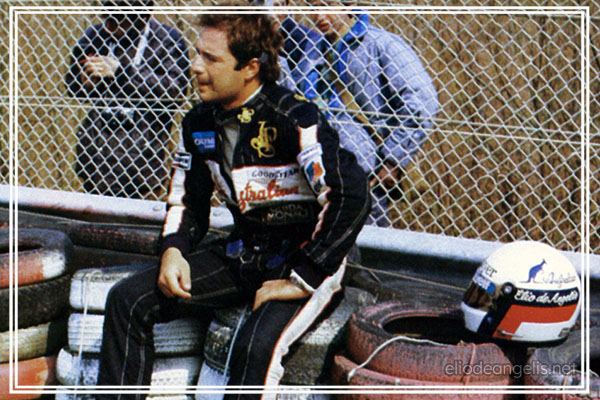
As a driver, however, I continue to believe that passive safety doesn’t count that much.
Then what should be done?
With the powers and speeds that can be reached, F1s are today completely displaced from the point of view of safety on the vast majority of circuits, built for the cars of many years ago. The ’84 single-seaters should race, I don’t know, on American tracks in the middle of the desert. Mind you, I’m a driver: the faster the cars go, the more I appreciate them. I like racing in Monte Carlo as in Detroit even with these acceleration monsters; I accept all the risks inherent in my profession and I believe it is empty rhetoric to talk about safety for those who drive an F1. However, if you ask me what a possible remedy is, I can only see this: given that the places where we have to race are what they are, it is necessary to reduce the powers in the race and, above all, in qualifying.
Do the new measures established by the FIA seem adequate in this sense?
For the next few years perhaps, but for 1985 certainly not. The ban on freezing gasoline alone will leave the powers it finds.
What was, in your opinion, the most dangerous race of 1984?
Dallas: for the concrete narrow streets in which we raced and, even more, for the precarious and unpredictable adherence of the road surface due to the small gravel that was formed.
Joys and Sorrows with Supermotors
At the end of 1983, 900hp was considered an incredible and indomitable power. About ten months later, driving 800 bhp single seaters in races and 1000 bhp in tests was the habit of the fastest team’s drivers. Such high powers of the F1 ’84 must correspond to equally unprecedented joys and efforts. We ask De Angelis to relive them.
When the ground effect with miniskirts was banned, you were unhappy. Now that you’re back to even higher performance, have you made peace with the “flat bottom”?
Yes, I have to say that most of the time this year’s cars have been exciting to drive, if you don’t consider the risk factor. However, the old wing-cars with side skirts still have, in my opinion, a qualifying point of advantage: contrary to general opinion, I believe that they were more selective for the drivers, they required exceptional driving skills and sensitivity to discover their real limits when cornering. I liked them for that. However, I recognize that if we had continued down that path, with the successive advances in power and tires, F1 would no longer be able to race on the current circuits today.
How do you drive with 1000hp?
It is an exhilarating experience, no matter the danger. With each acceleration, the car leans behind as if it wanted to rear up, held on the track only by aerodynamic balance: you feel practically merged with the car, as if you were riding a motorcycle pushed by a giant. In these conditions we have a weight/power ratio, including the driver on board, of just 6 ounces per CV. It is clear that with hard, racing tires, it would be impossible to drive; but the ultra-soft qualifying ones have such a grip that they manage to rebalance the car. There are some problems in the first corners of the qualifying flying lap, because the front and rear tires don’t reach the optimal temperatures at the same time. But immediately afterwards the car regains perfect balance and then, a short but very intense challenge begins for the driver. The advanced chassis and suspension we have today, the very high aerodynamic loads and the structural progress of the tires with qualifying compounds allow us to reach unimaginable cornering speeds. Each time you try to enter harder, and each time the limit seems to miraculously move forward, as if it were chimerical, unattainable. We anticipate acceleration to the point that in the middle of the bend we unload 800 or 900 HP of the 1000 HP available for outing onto the wheels. And the car always reacts without getting upset and the qualifying lap times drop.
Are such stimulating sensations repeated during the race?
With race tires, grip is much lower: to evaluate the difference, suffice it to say that we use different gear ratios, shorter for the race and longer for qualifying, when the ‘grip’ of the tires allows us to enter curve and exit it at incredibly higher speeds. Strong racing tires also make it more difficult to achieve optimum car balance. However, when an effective setup succeeds and the tires work at the right temperature without degrading too quickly, a 1984 F1 is gratifying to drive even in the race: the power, if not expressed in the sharp notes of qualifying, is always 50% higher than the Cosworth we were still using last year, yet balanced by the superior efficiency of the chassis and the grip of this year’s advanced race tires.
With the current lap speeds, have the inconveniences, the physical efforts and even the risks of bone injuries typical of single seaters with miniskirts returned?
Not entirely, but largely. Today we drive through corners at even higher speeds, and the lateral thrusts of over 3 g are starting to make themselves felt again: a little less than two years ago, however, because cars with side skirts curved as if on two rails, while today’s bottoms flat require guidance and control with corrections on the trajectory, they give in a little to the lateral push, supporting it with drifts in the same direction, so that the g’s are warned so dry and violent. The physical effort has decreased a little, but the psychic one has increased: by using enormously higher powers, the need for concentration and tension to control the car when cornering is greater. Driving fatigue especially manifests itself in the early stages of the race, when the car is weighed down by a full tank of 220 liters of petrol: then it’s really hard to keep it in the corners, you feel like an inertia of the car, a lack of agility that needs to be compensated with a driving force. To the point that in the first laps we are often forced to corner in third gear where later, with the tanks half-empty, we will return to fourth gear. As for the hammering suffered by the spine in the jolts, it is not as harmful as it was at the time of the miniskirts, which had “blocked” suspensions. However, the jolt pains threaten us again. The springs we use today have 30% more flexibility, but the shock absorbers are stiffened to the max.
Does the turbo lag still affect cornering?
This year the problem has eased to such an extent that it can be said to have been resolved. By now you can corner without worrying about anticipating acceleration, as was done with naturally aspirated engines: you will lose at most 2-3 tenths of a second per lap. In practice, it is necessary to resort to the advance for a comeback, or in qualifying, obviously. After all, even with the Cosworth engines, a minimum of advance was needed when extreme performance was desired, because the “pull” began at 7000 rpm, very high, and below the engine was almost empty. Today, with the turbos, for the corresponding revs we have almost double the torque compared to the Cosworths: there is always a satisfactory response.
The Year of the Young Devils
Ayrton Senna da Silva from Brazil, Stefan Bellof from Germany, Martin Brundle from England: a squadron of rookie drivers in F1 who, despite driving non-leading single seaters like the Tolemans and the Tyrrells, immediately stood out for their aggressiveness and competence. Senna was especially liked, for example, by Enzo Ferrari. Let’s listen to De Angelis’ opinion of them again, gained during close encounters that took place in the ’84 GPs.
Isn’t it surprising that in just one year three rookie “young devils” managed to fight shoulder to shoulder with the stars right from the first races?
Yes, they are undoubtedly drivers of a generation prepared for top level competitiveness. This occurs because in all countries participation in motor sport has lately expanded greatly through minor but strictly selective championships, such as branded trophies and countless training formulas and formulas: since these are homogeneous cars with the same performance, the best emerge.
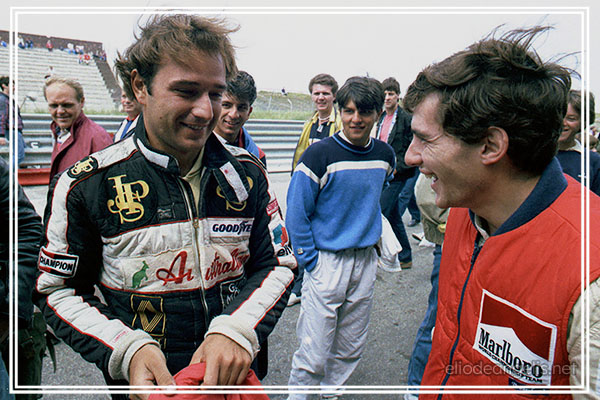
In particular, the Brazilian Ayrton Senna da Silva, who will be your teammate in 1985, impressed the public and critics, for the aggressiveness shown in Montecarlo in the rain. What is your opinion?
I don’t believe, as I’ve heard, that Ayrton earned his stripes by running a car very fast “with his heart” that was slow before he took over. Toleman has progressed a lot this year: it was decidedly competitive in a context of exaggerated severity. In F1 you don’t get similar results for the aggressiveness of a driver, something else is needed. In my opinion, Senna’s merit is more serious and significant: it is a professional merit; in fact, he immediately settled in with a top-performing car without making the mistakes and accidents usually typical of rookie drivers.
And what about Martin Brundle?
He really impressed me, like Senna. Maybe even more. He has shown that he has aggressiveness, but also completeness and poise that is unusual in a rookie. A fast and intelligent driver.
And Stefan Bellof?
I knew him from the time we raced in karts, I knew he was a good driver, he didn’t surprise me. In terms of driving style, I also see him as more aggressive than Senna, and he’s more experienced having raced with the extremely powerful Group C turbo prototypes. But I don’t know if he’s as fast, I don’t think so. On balance, I’d put these young lions on if not equal footing, then equivalent footing. It will be necessary to see who will be able to progress with more continuity in 1985. I believe that it takes more than a year to evaluate an F1 driver.
© 1984 Quattroruote • By Giuseppe Piazzi • Published for entertainment and educational purposes, no copyright infringement is intended


